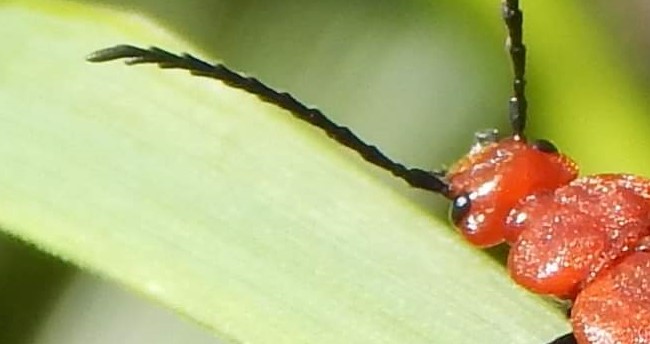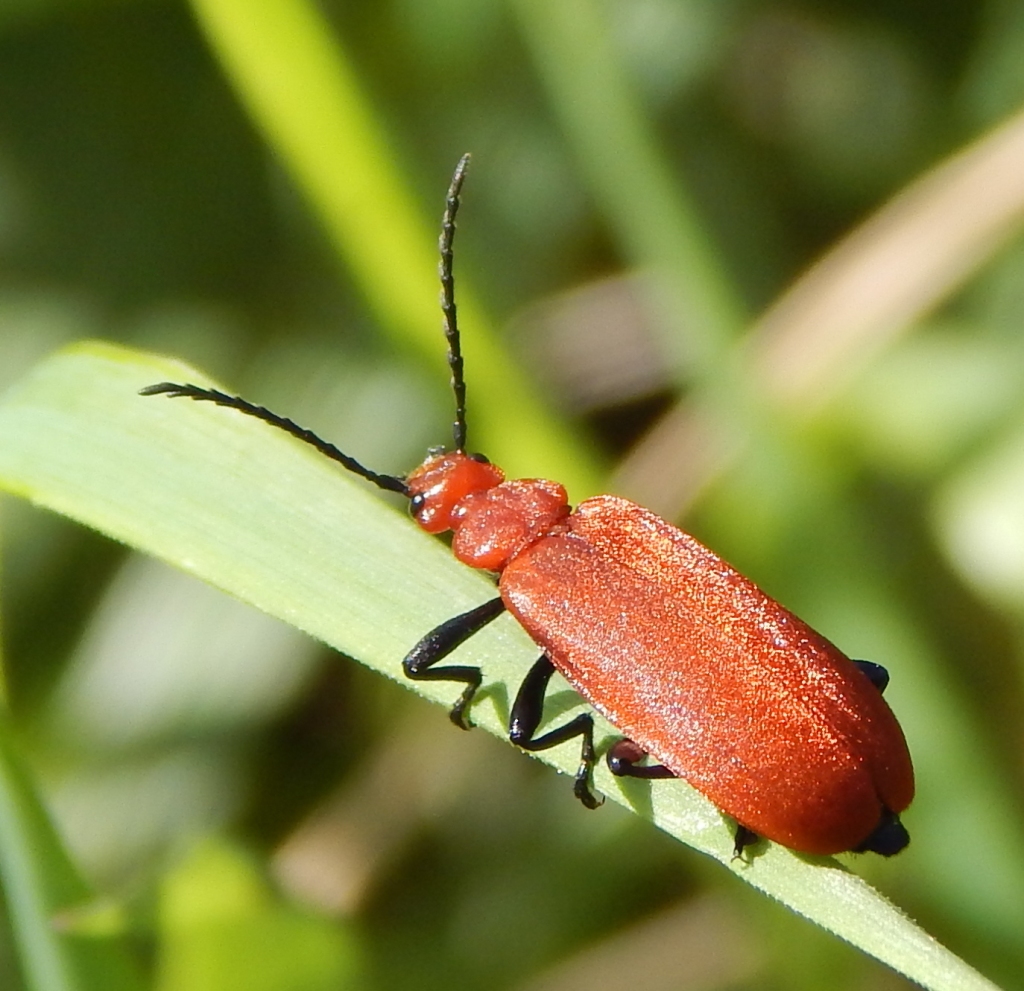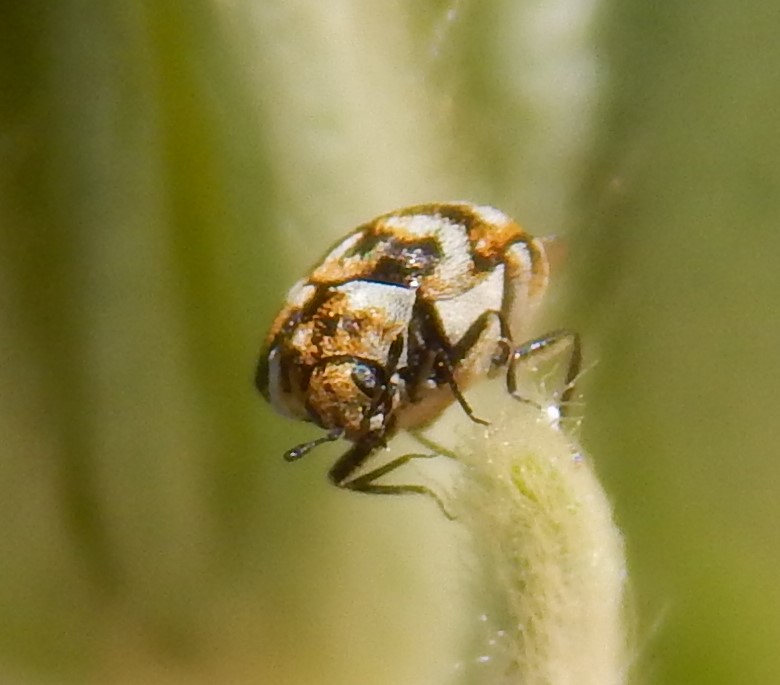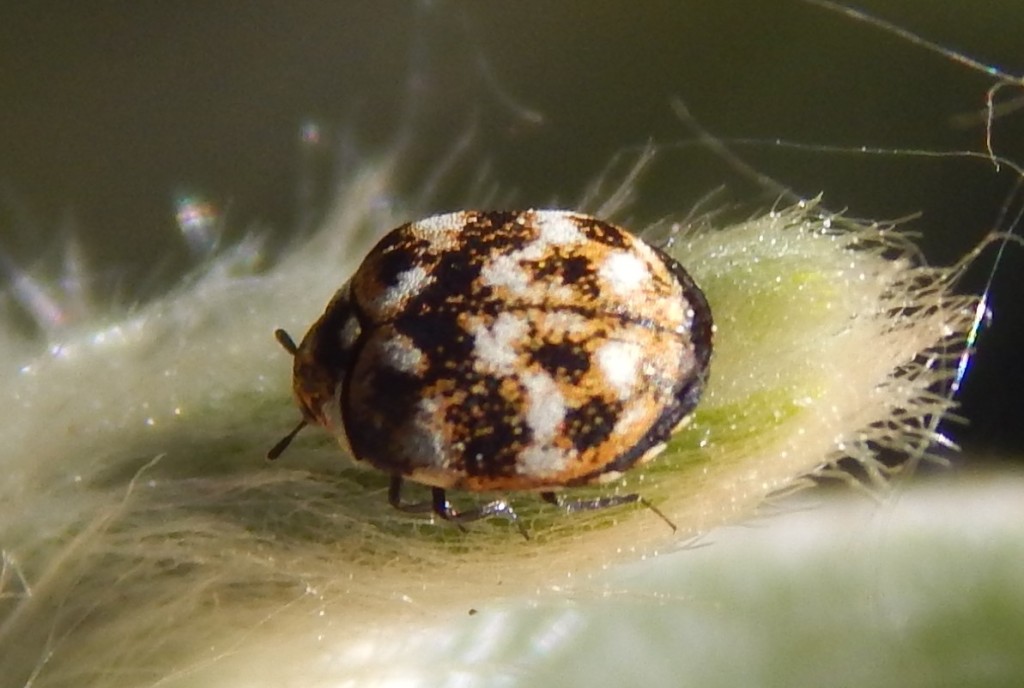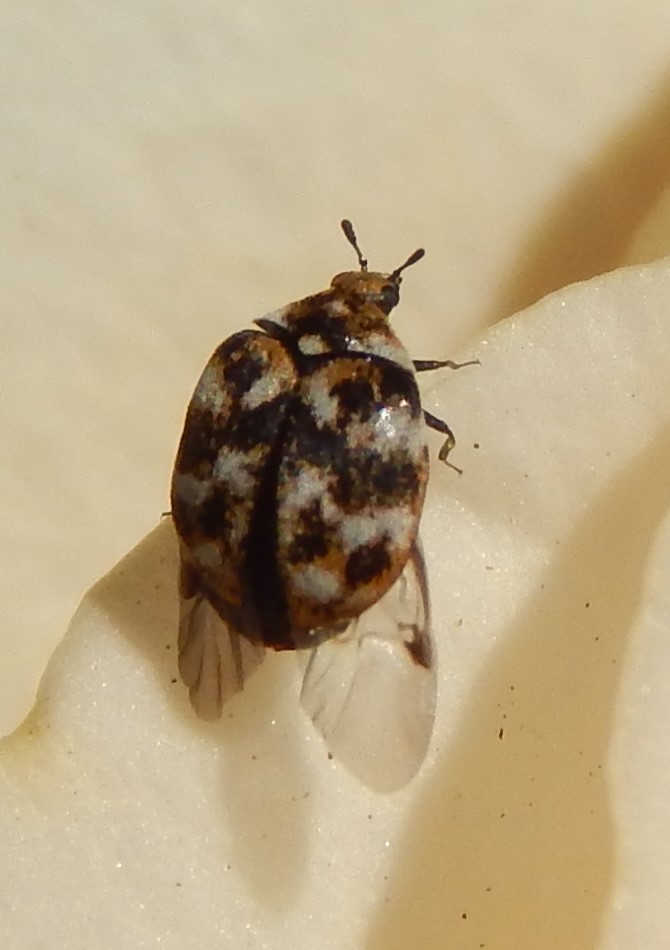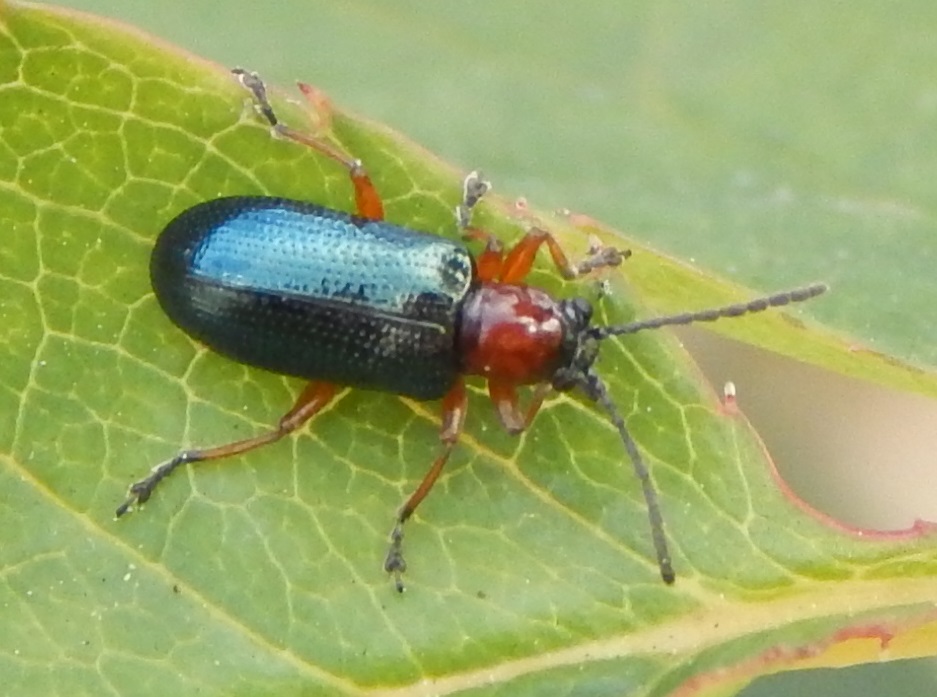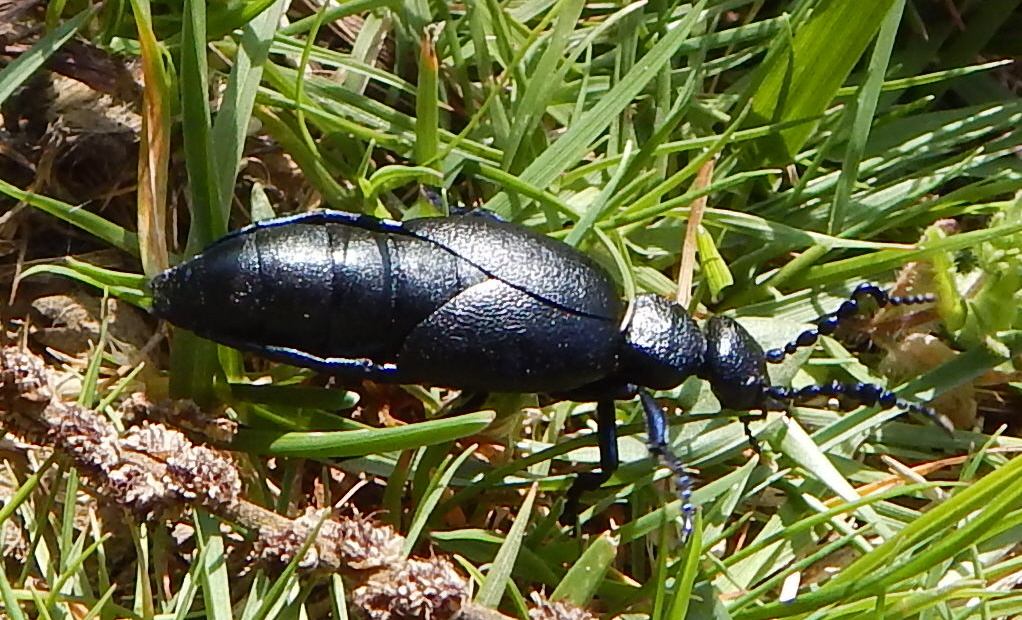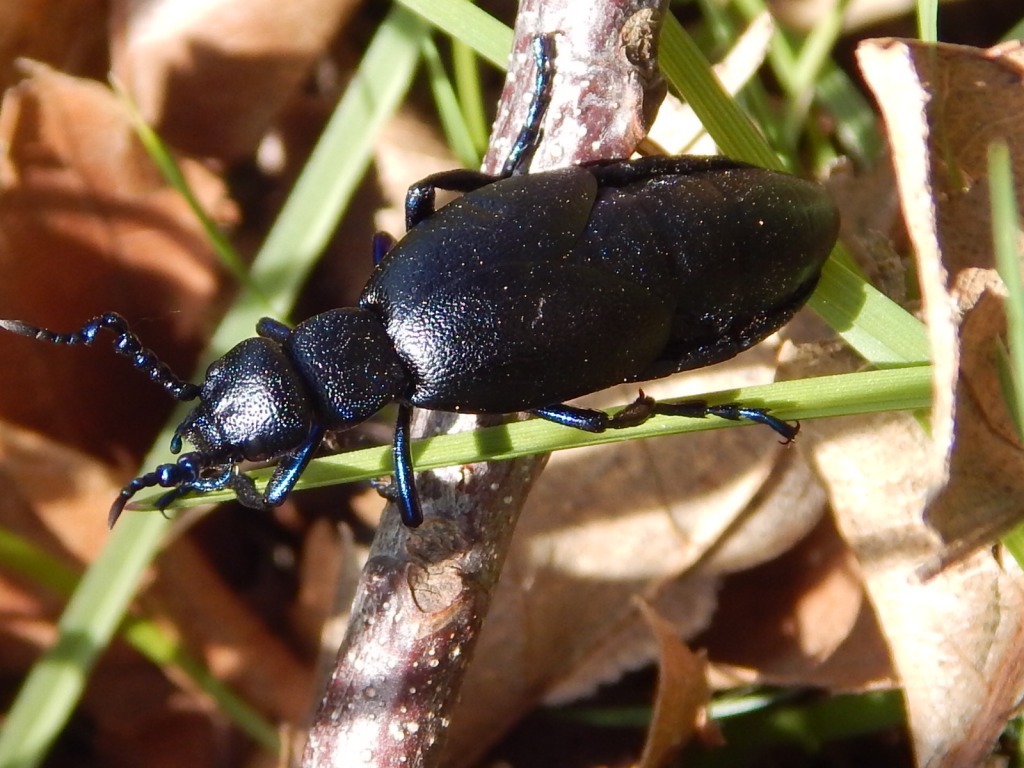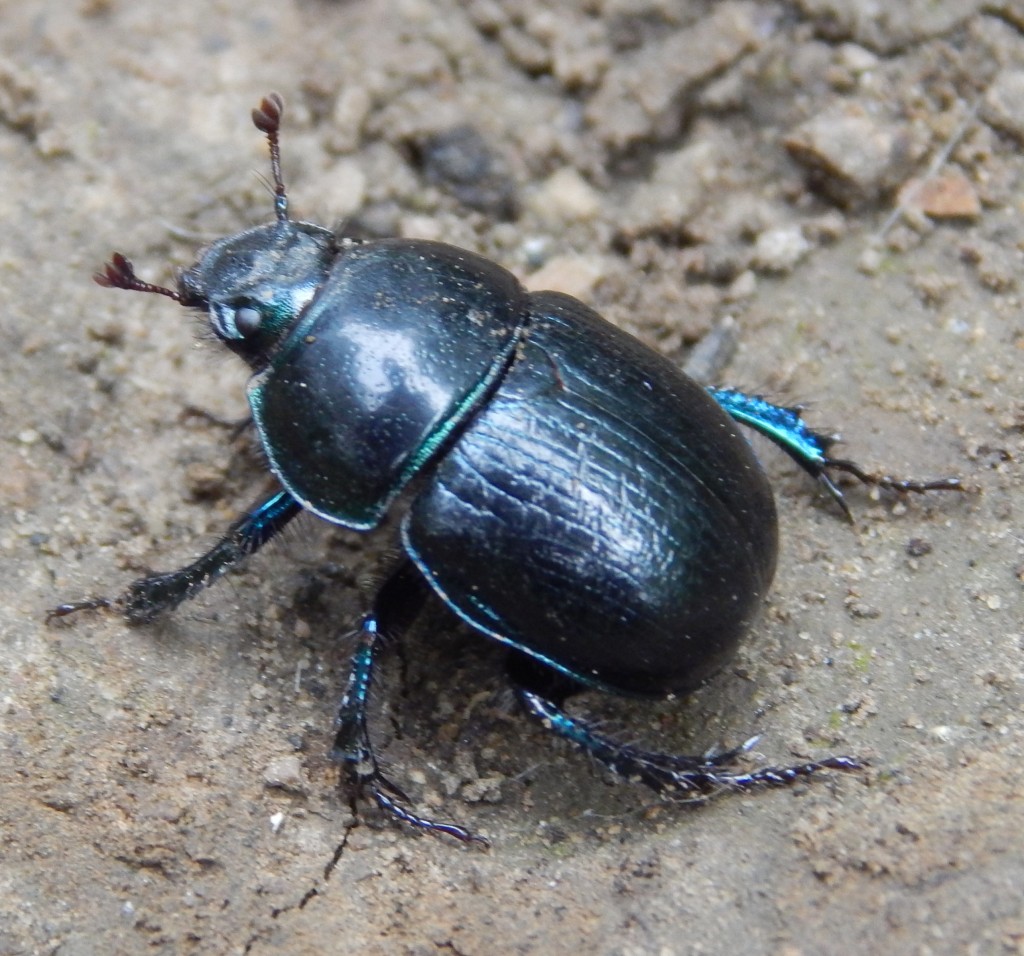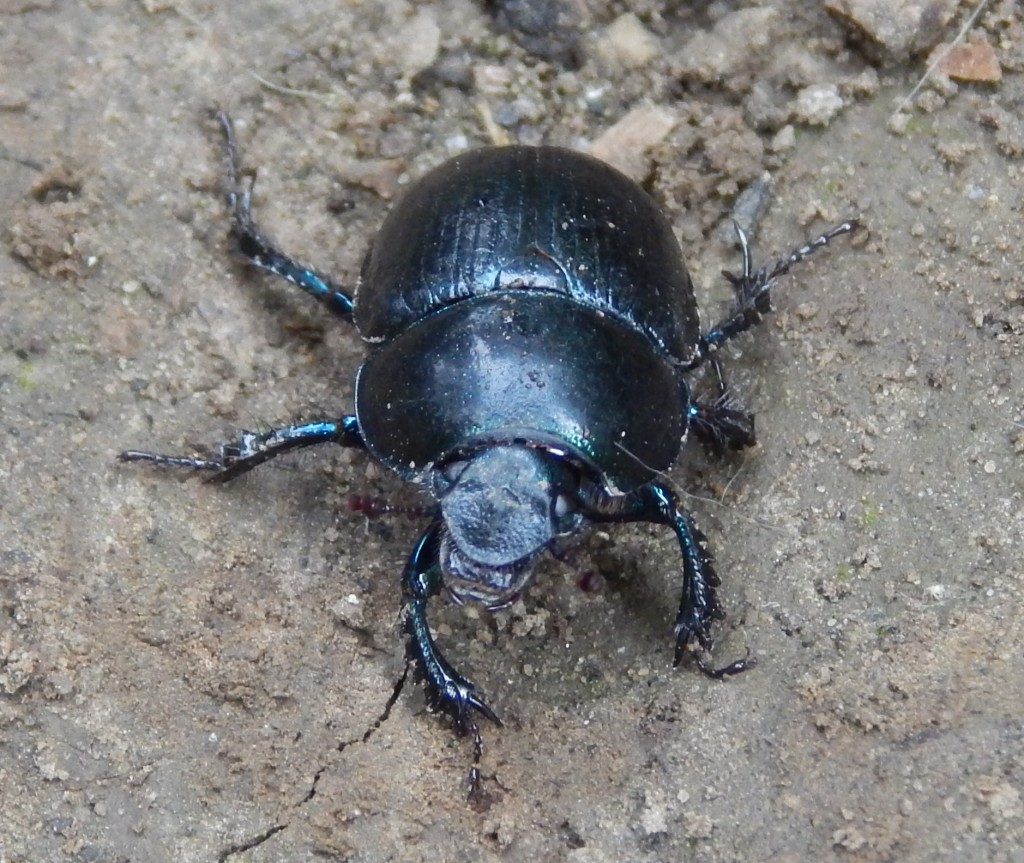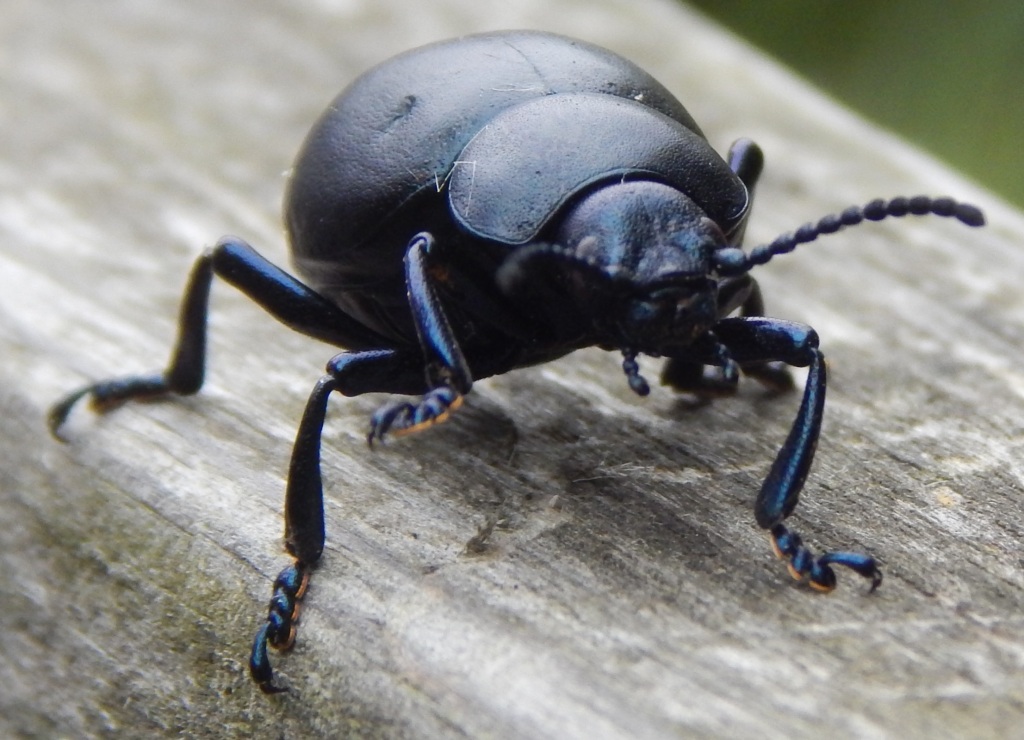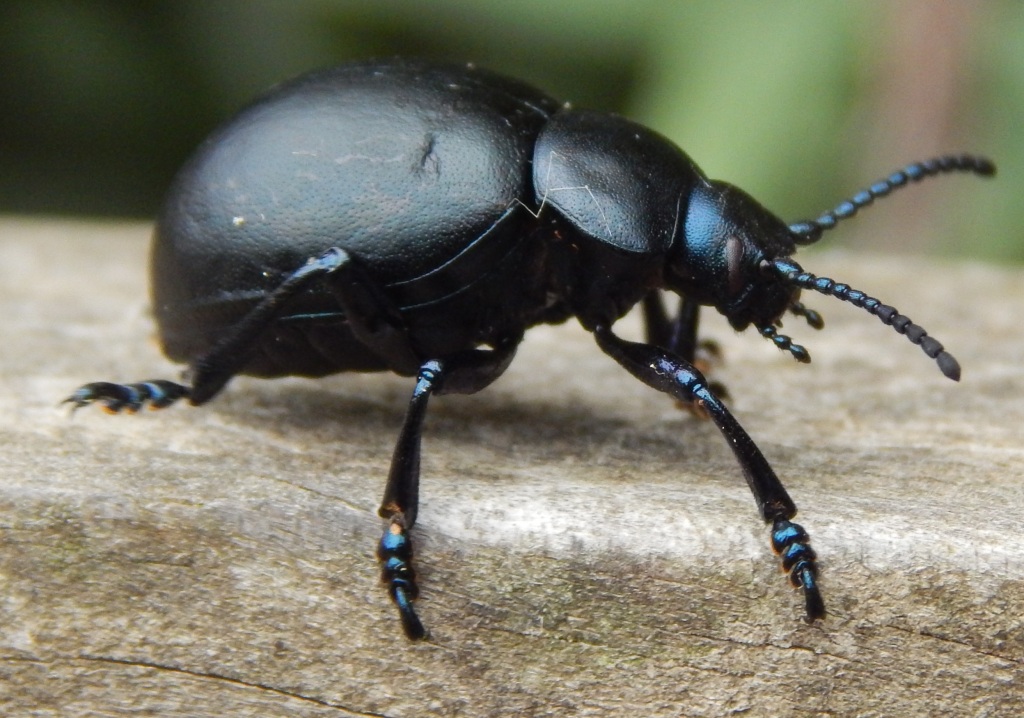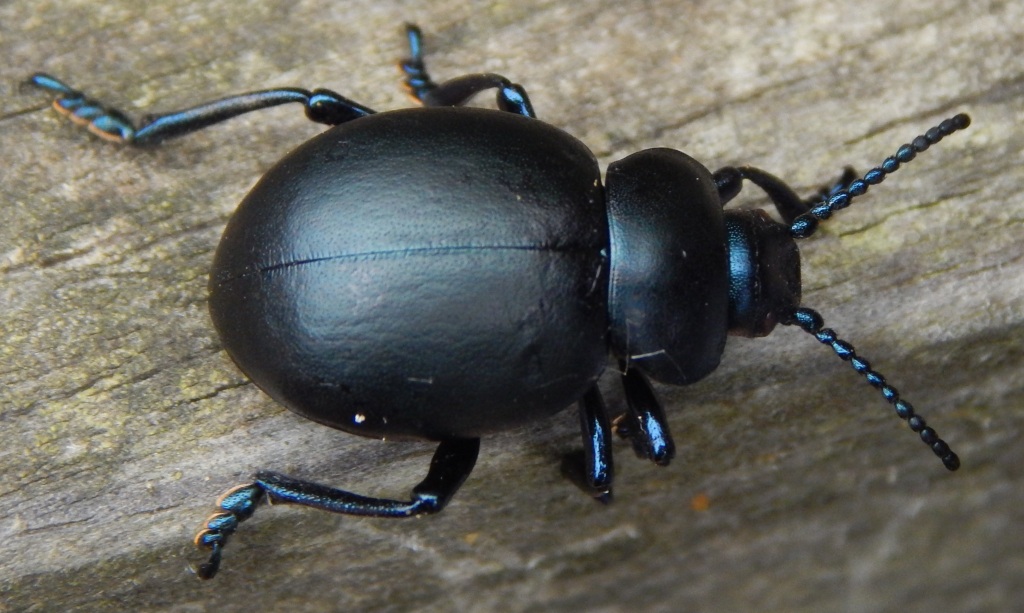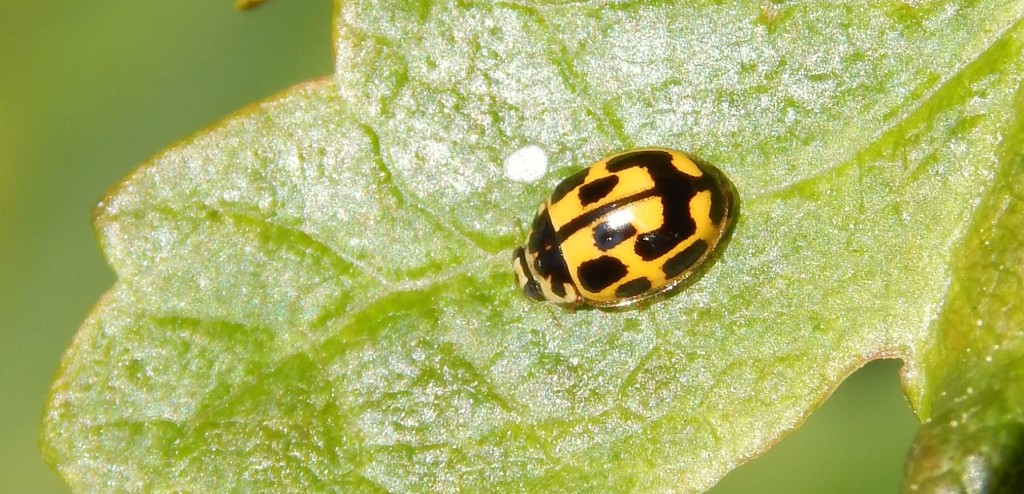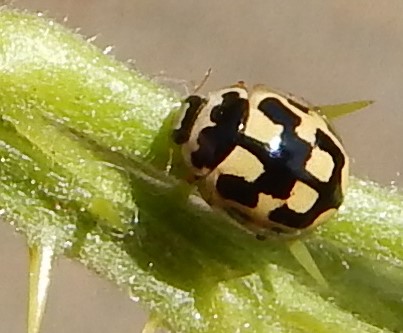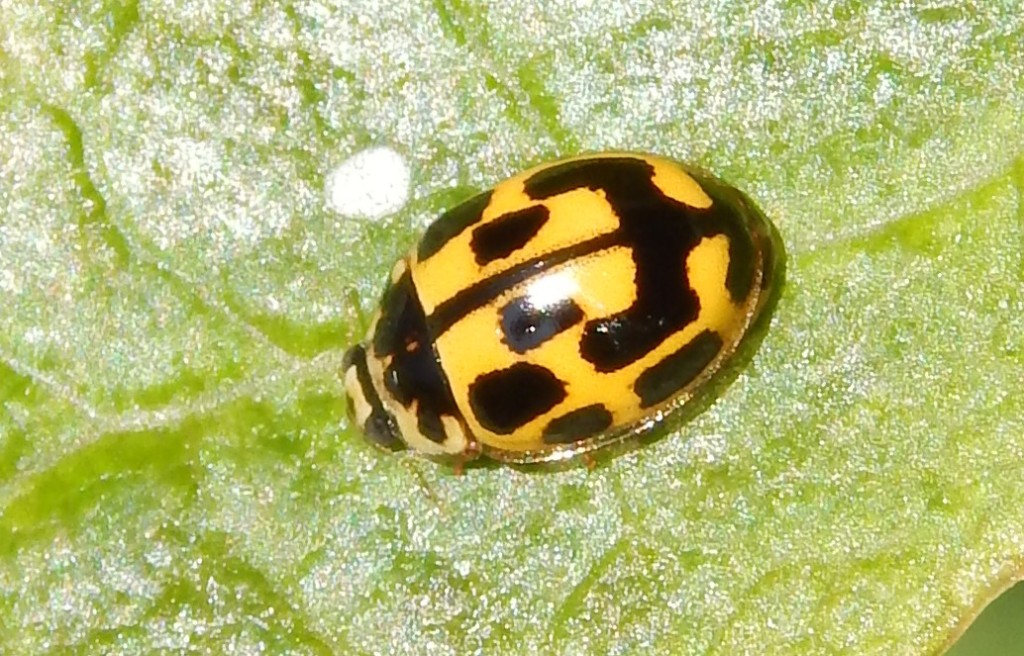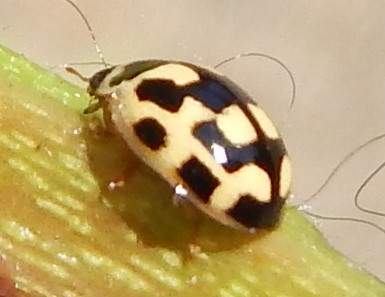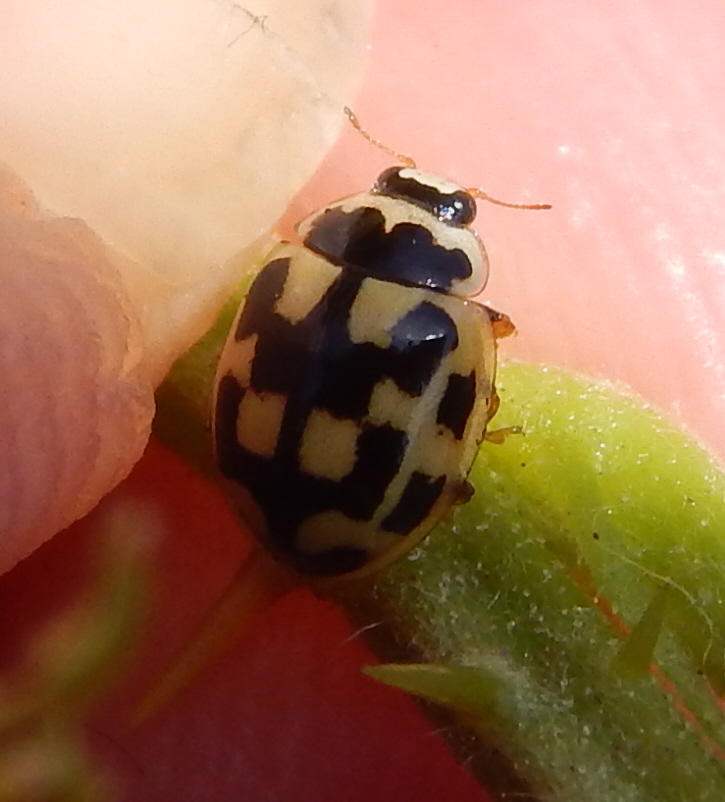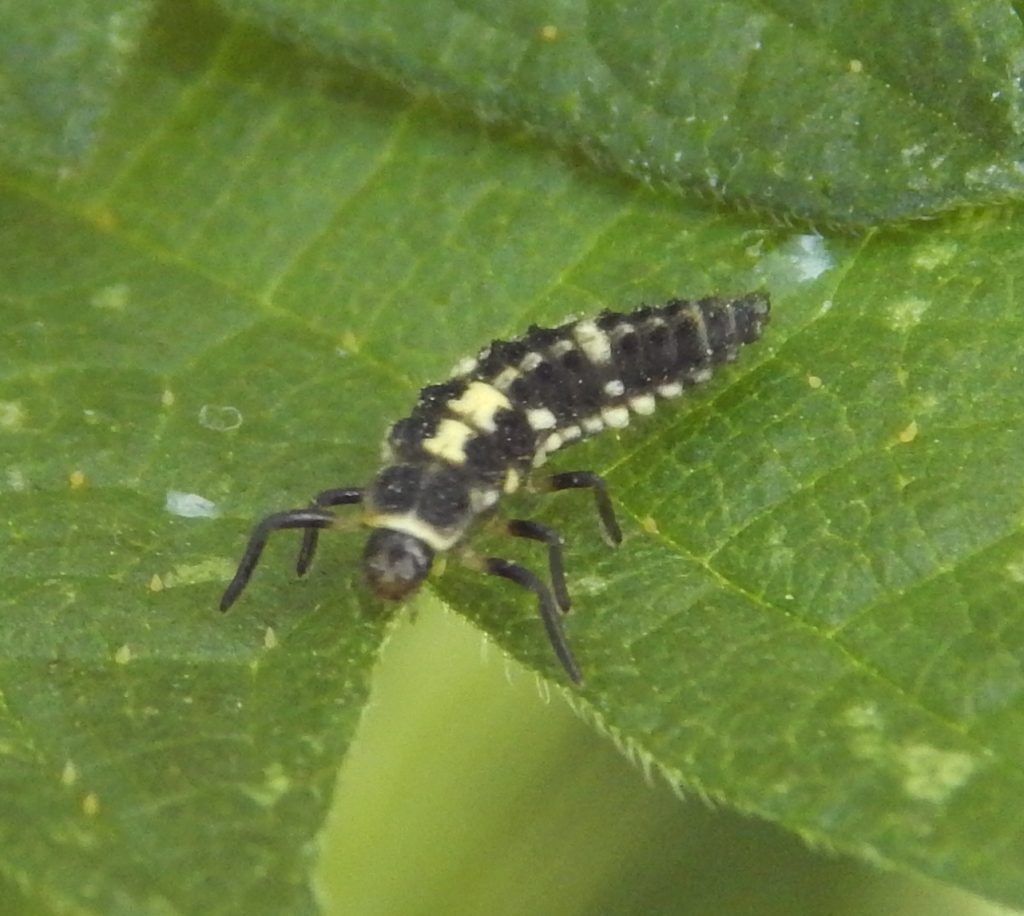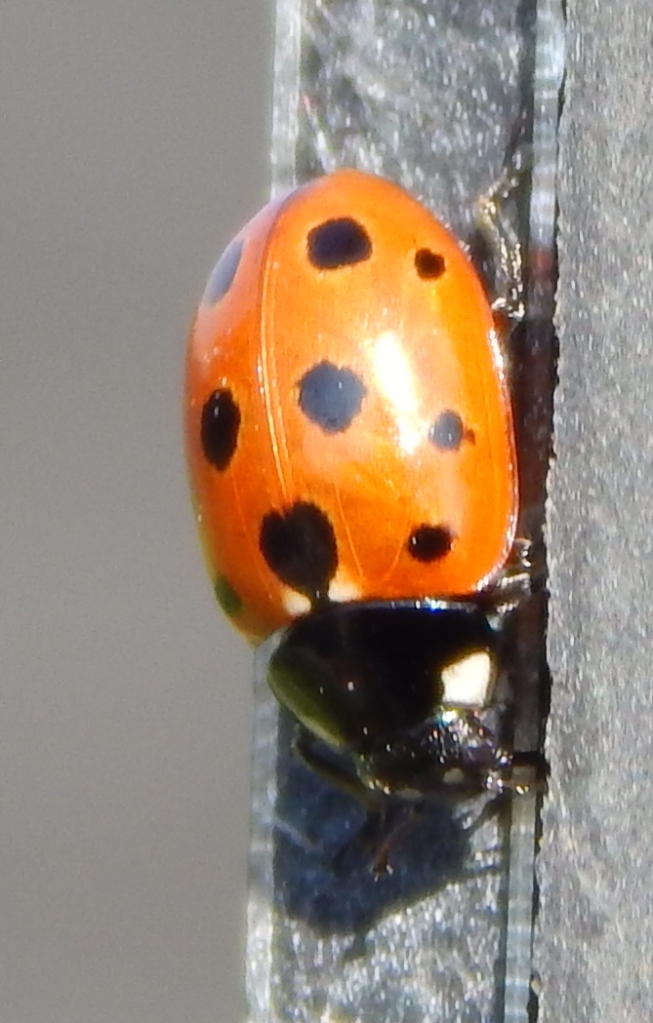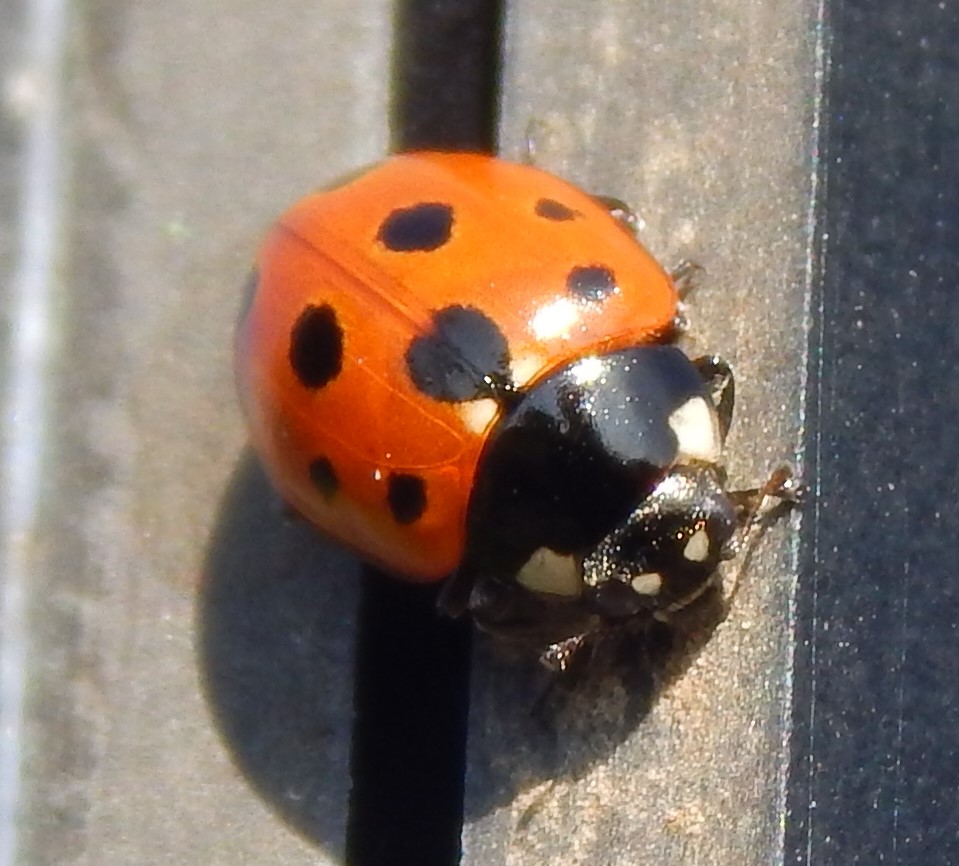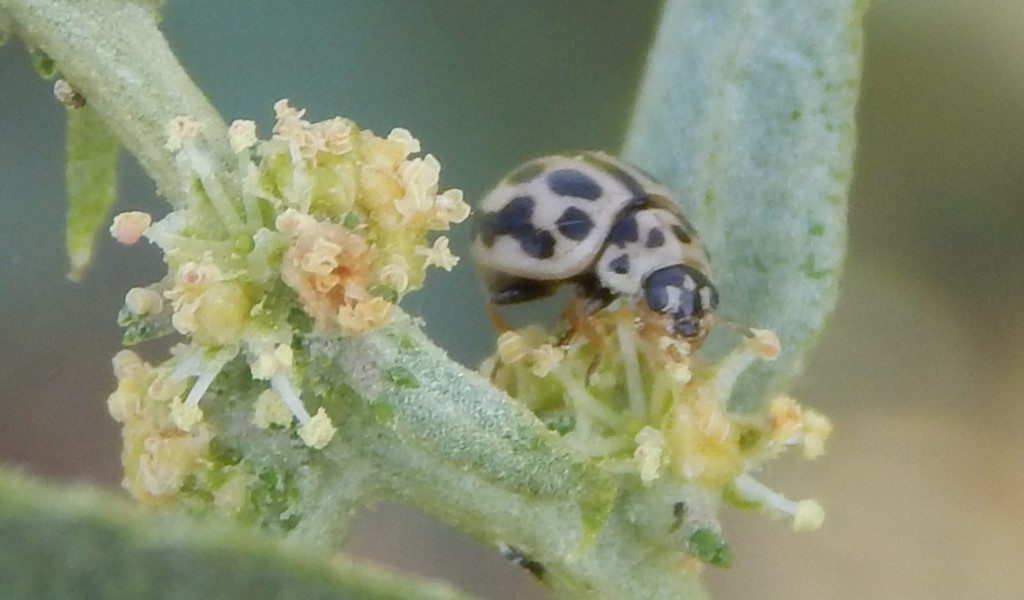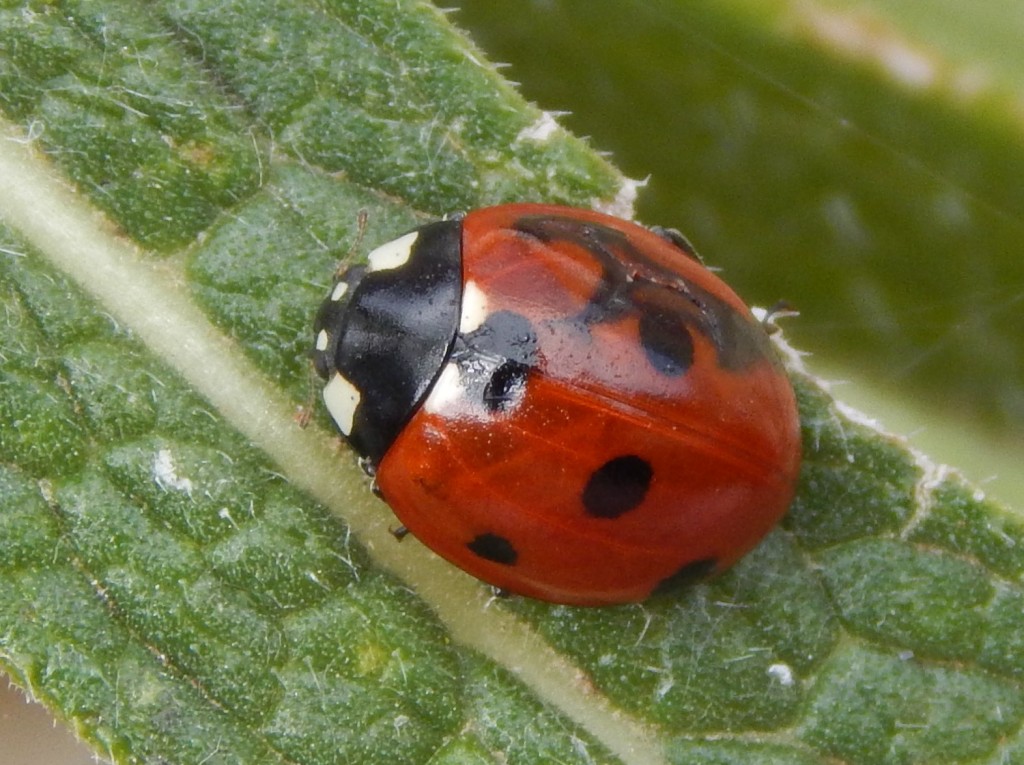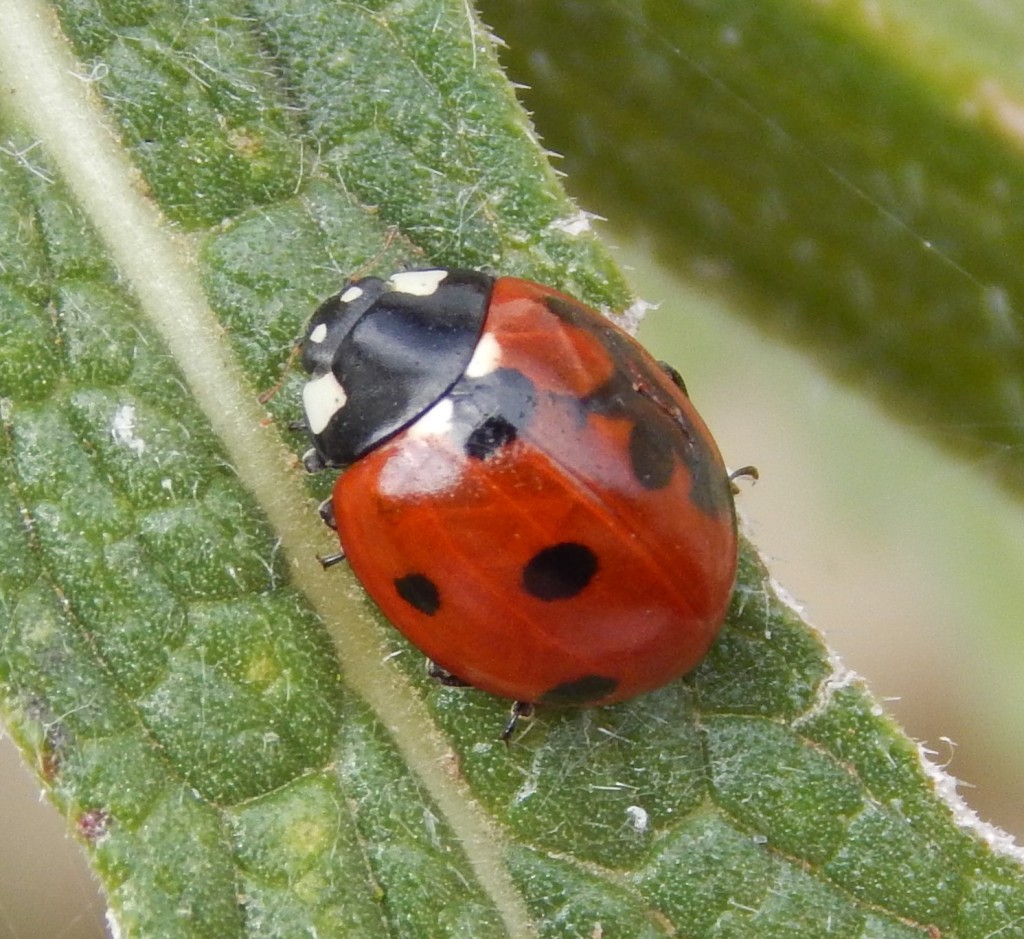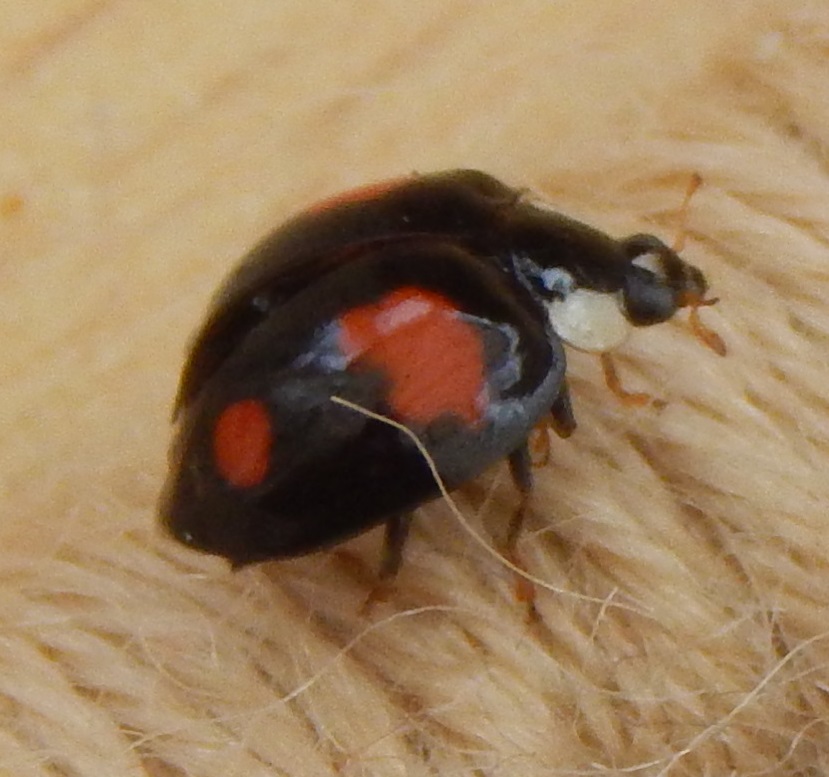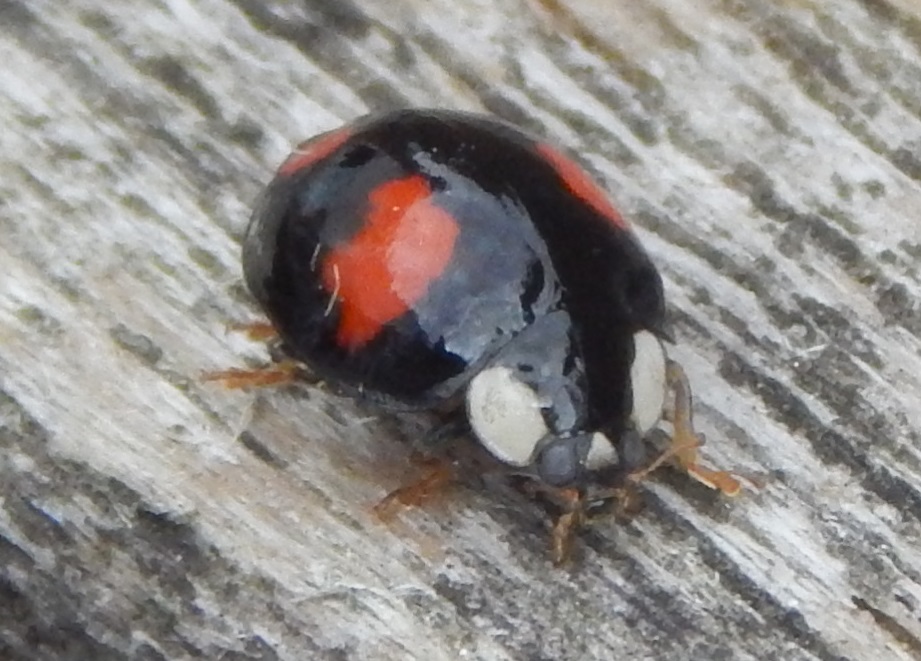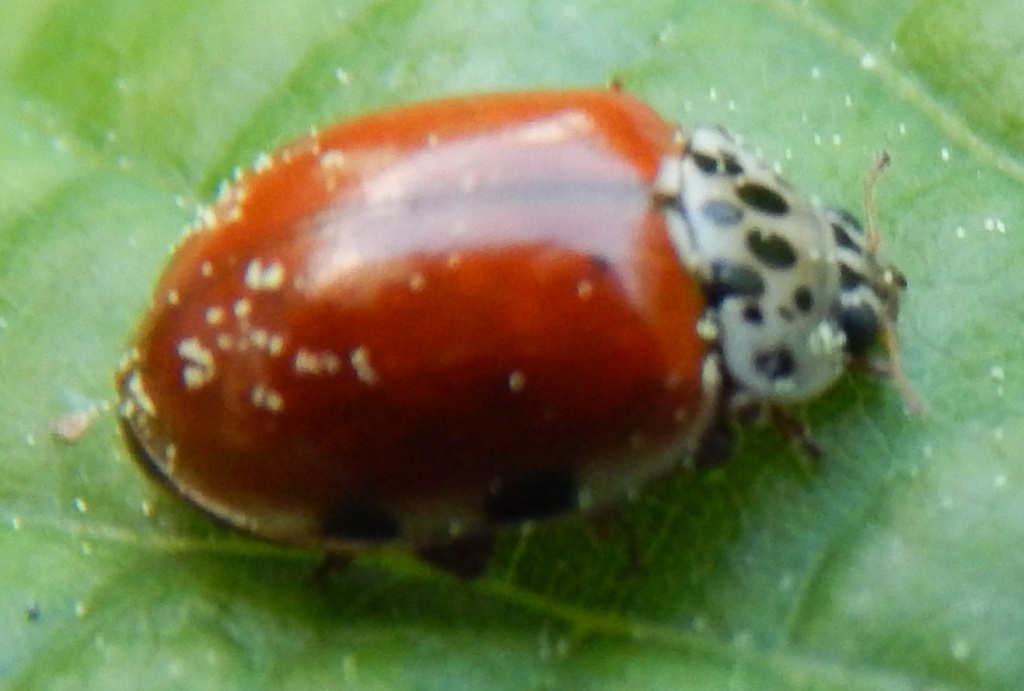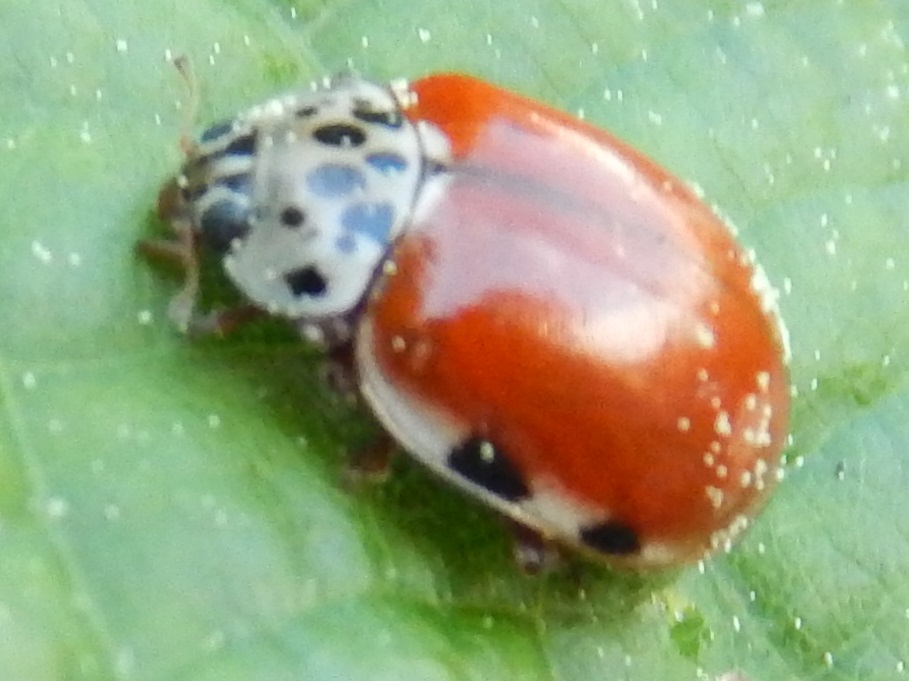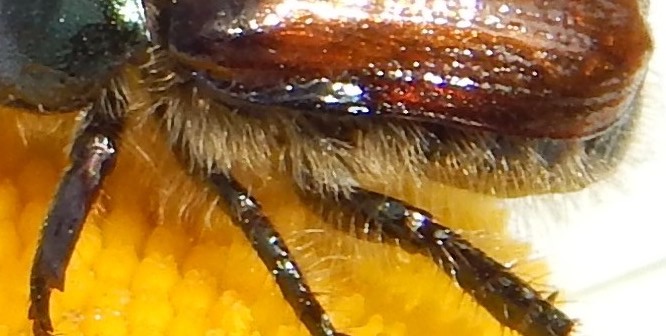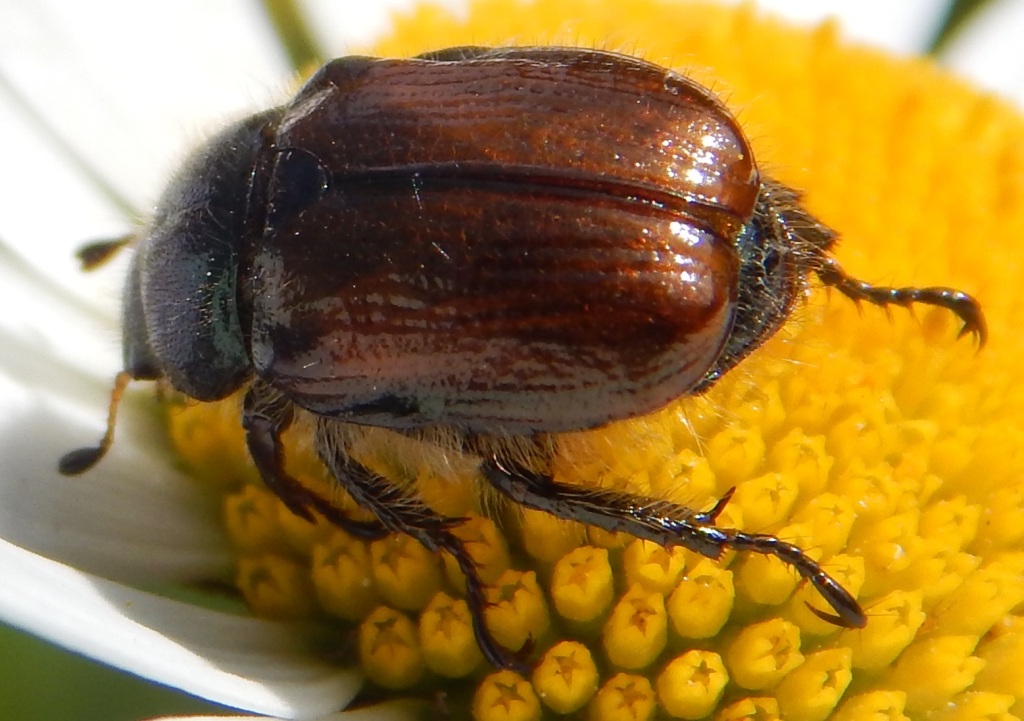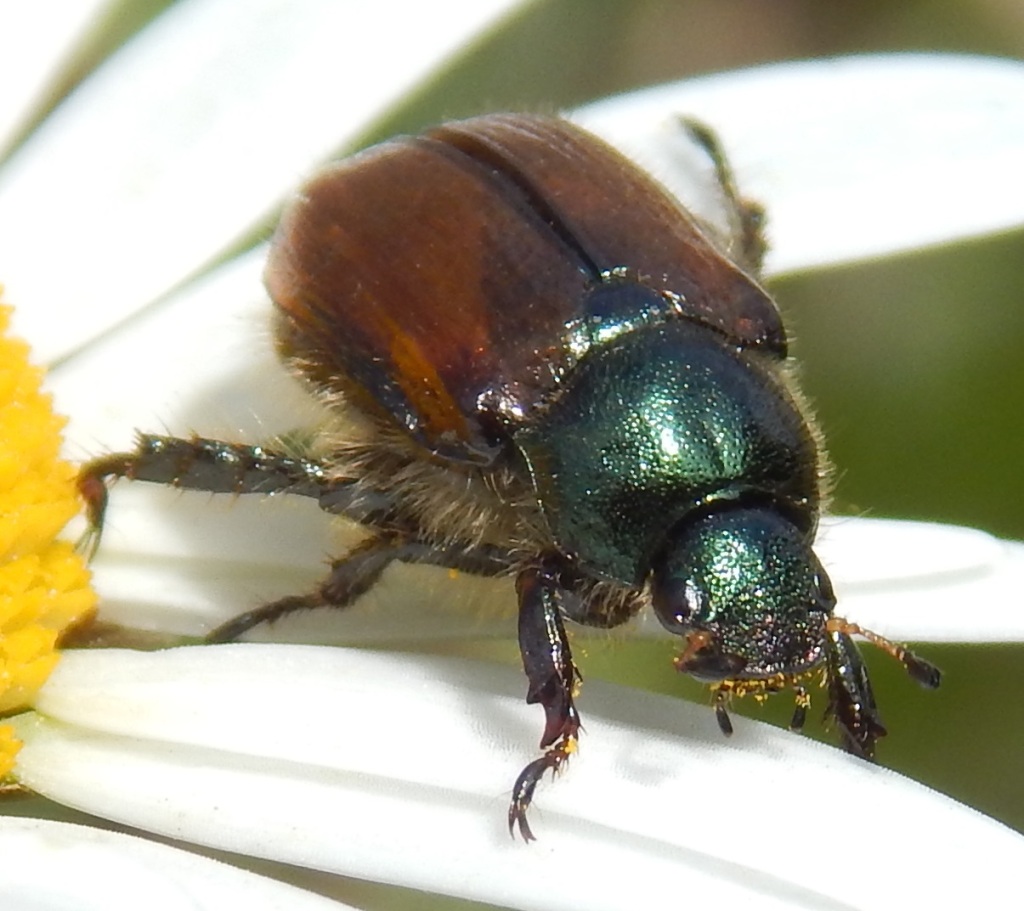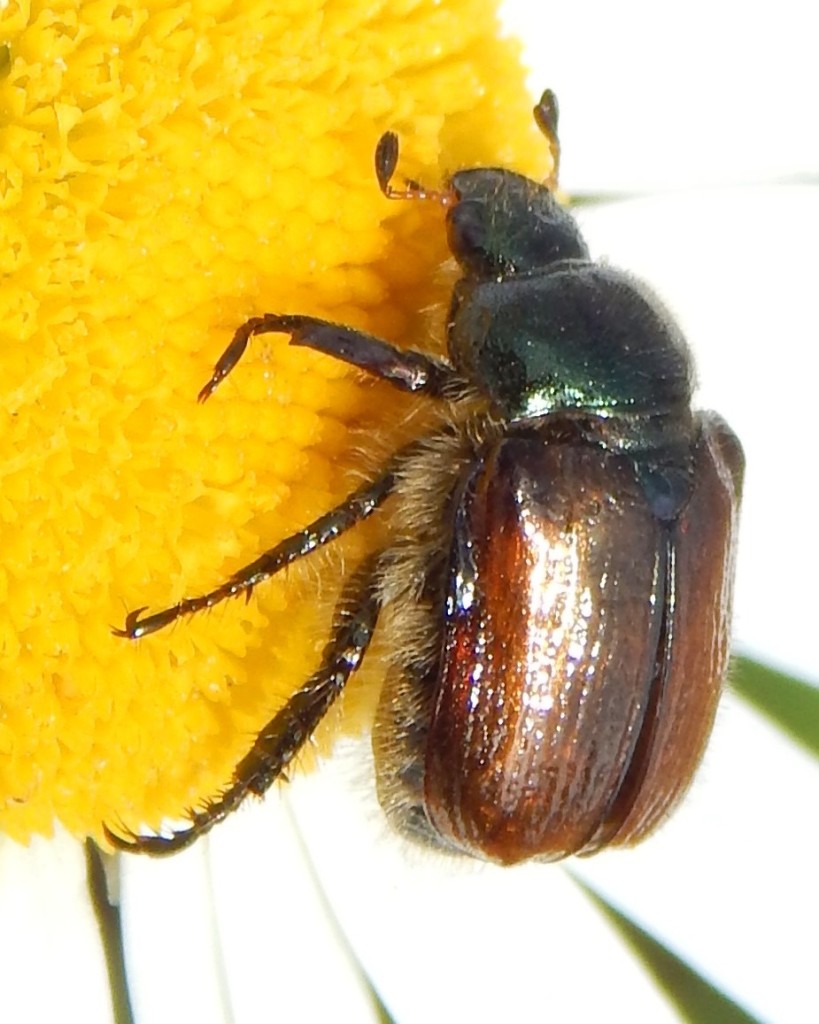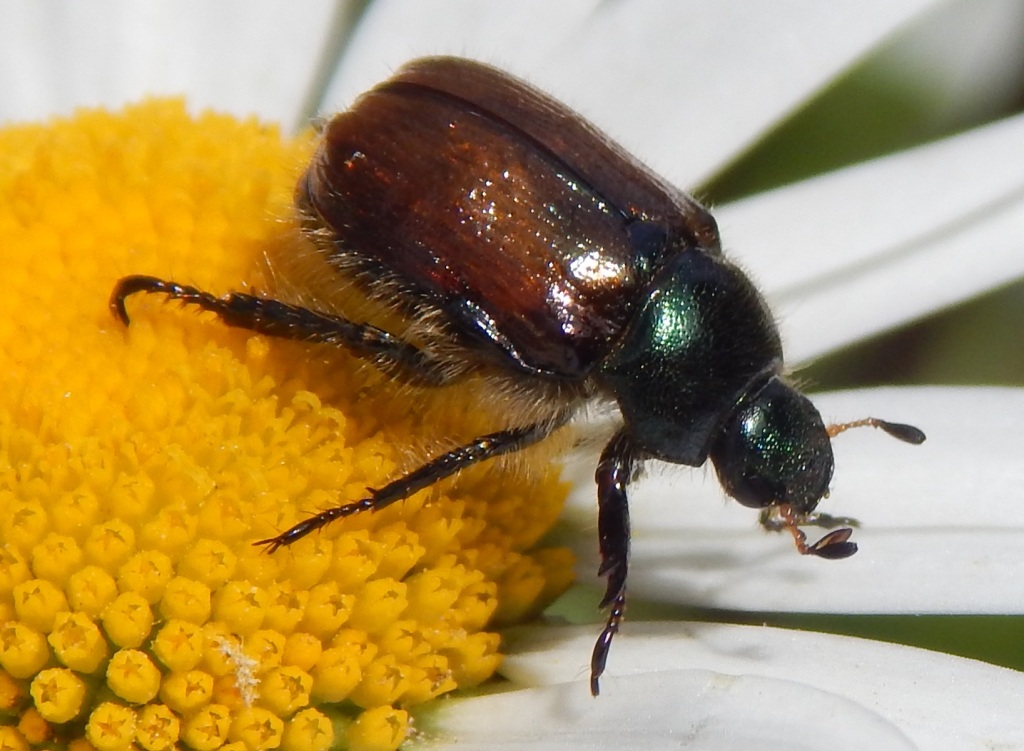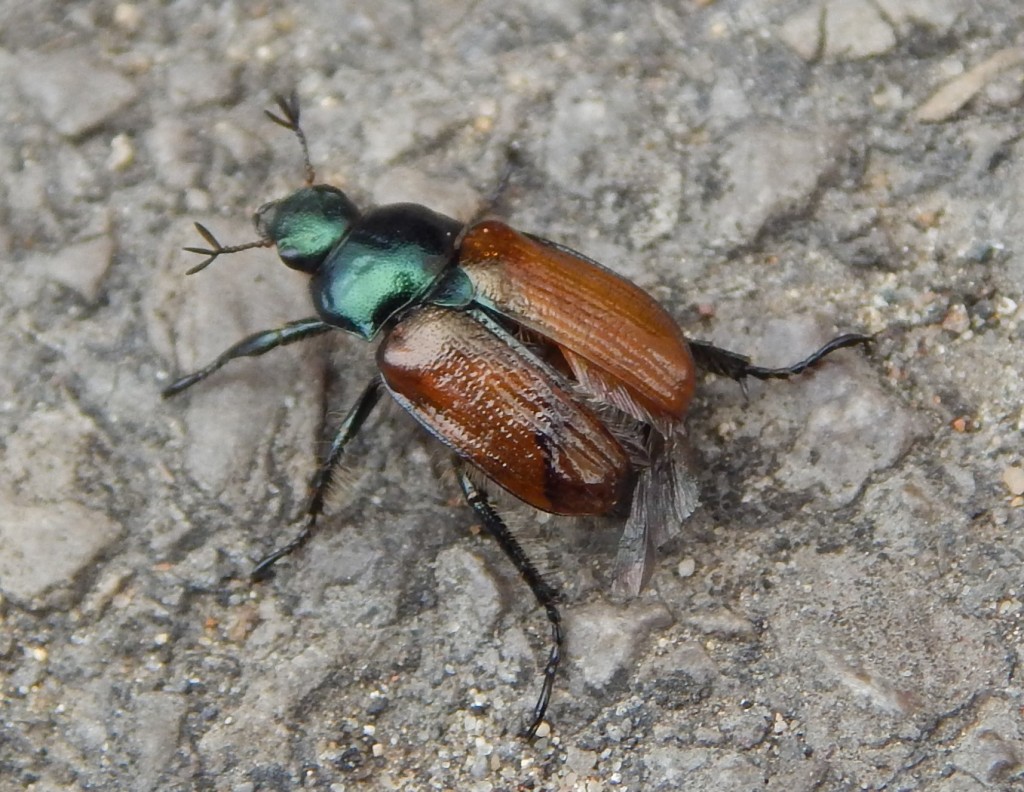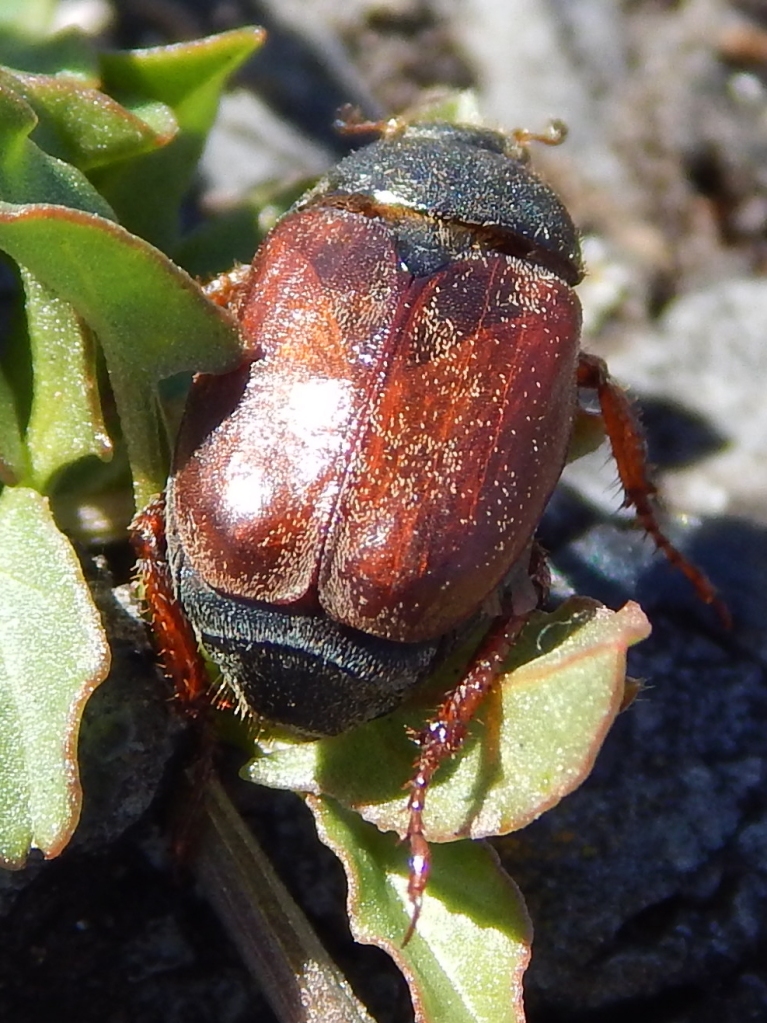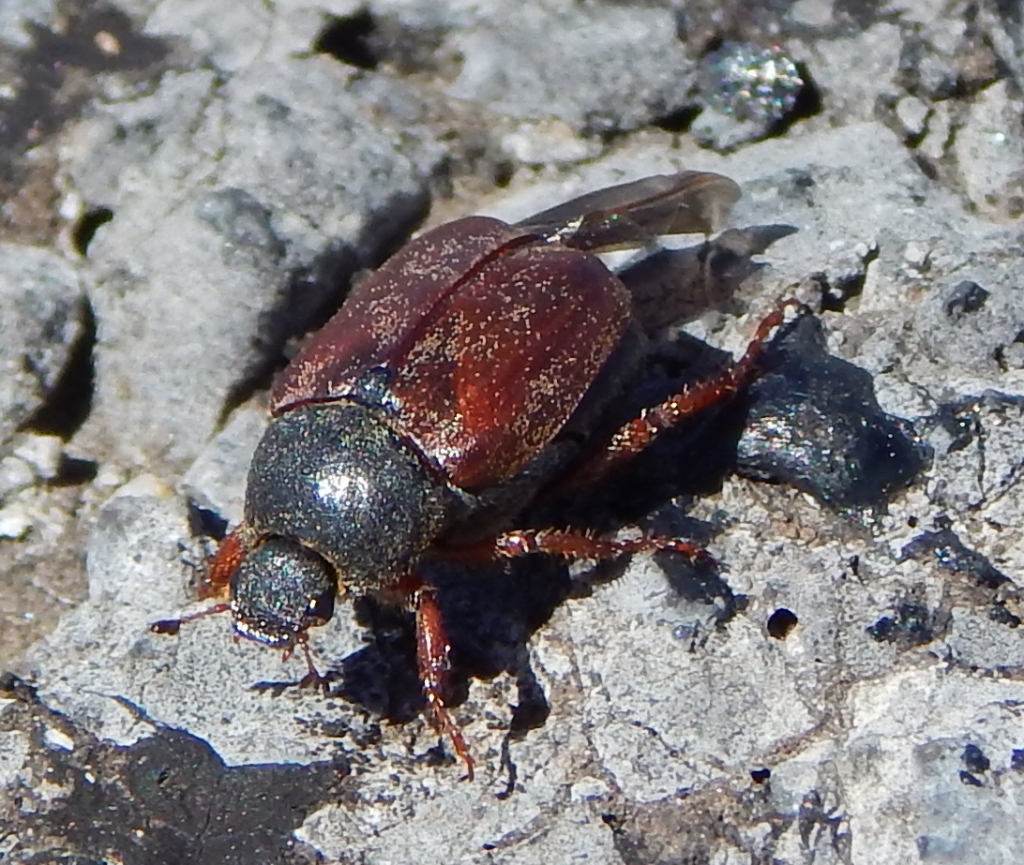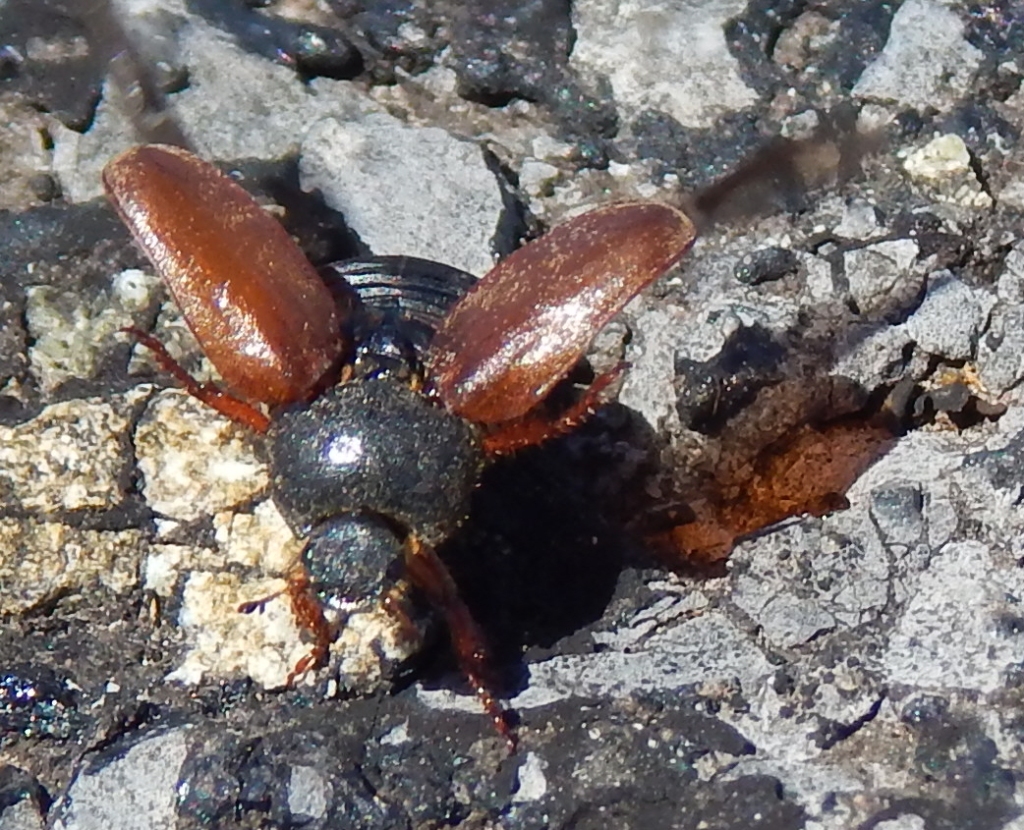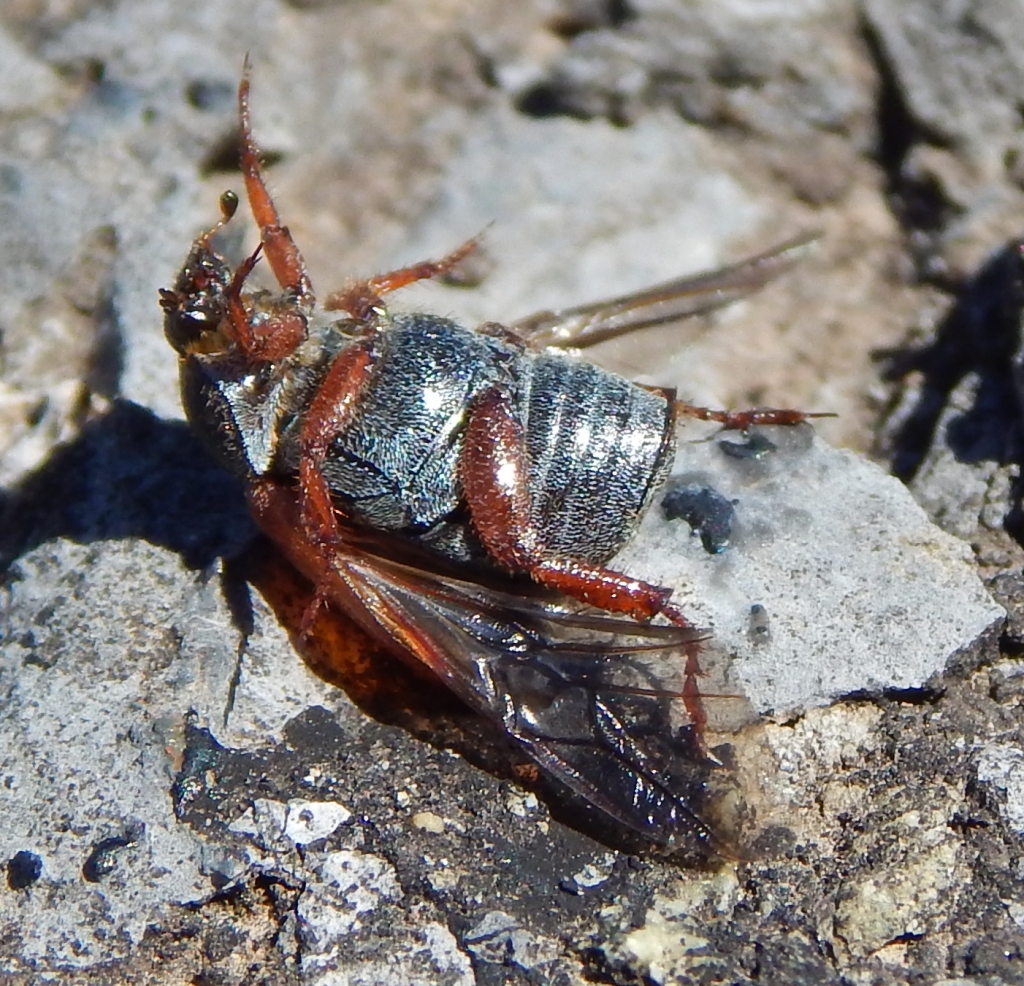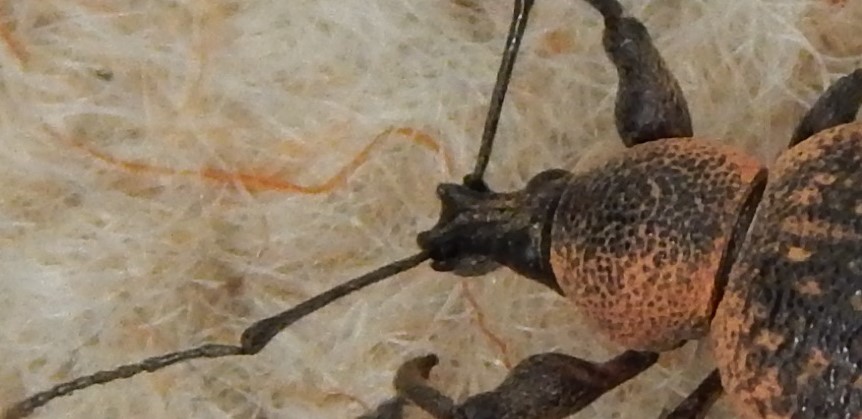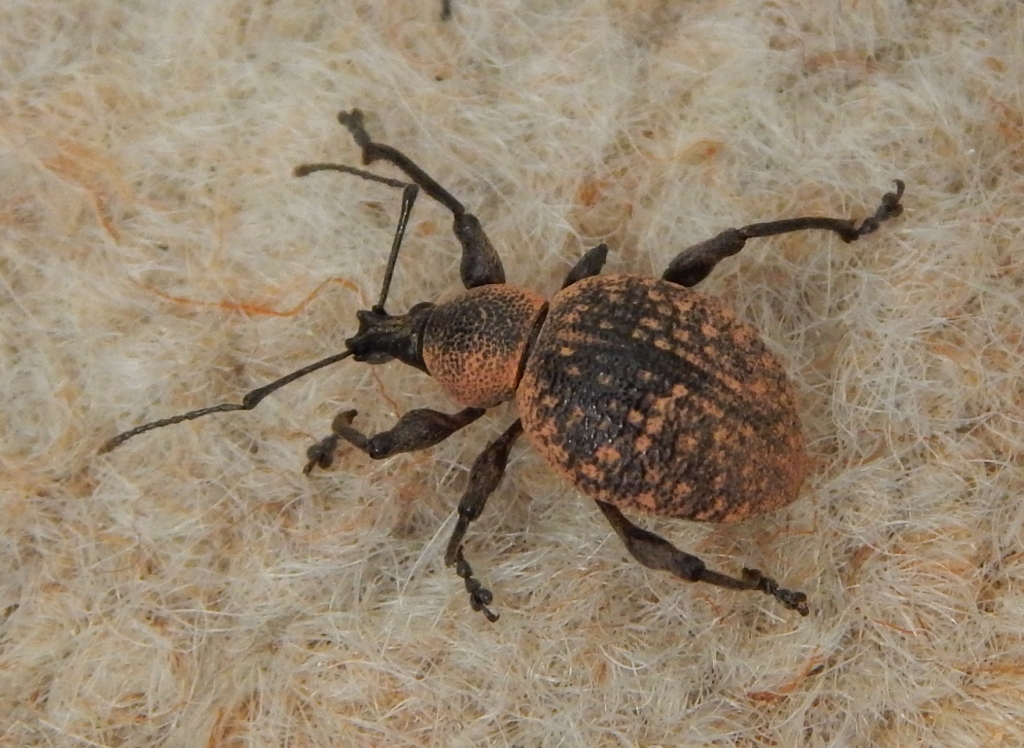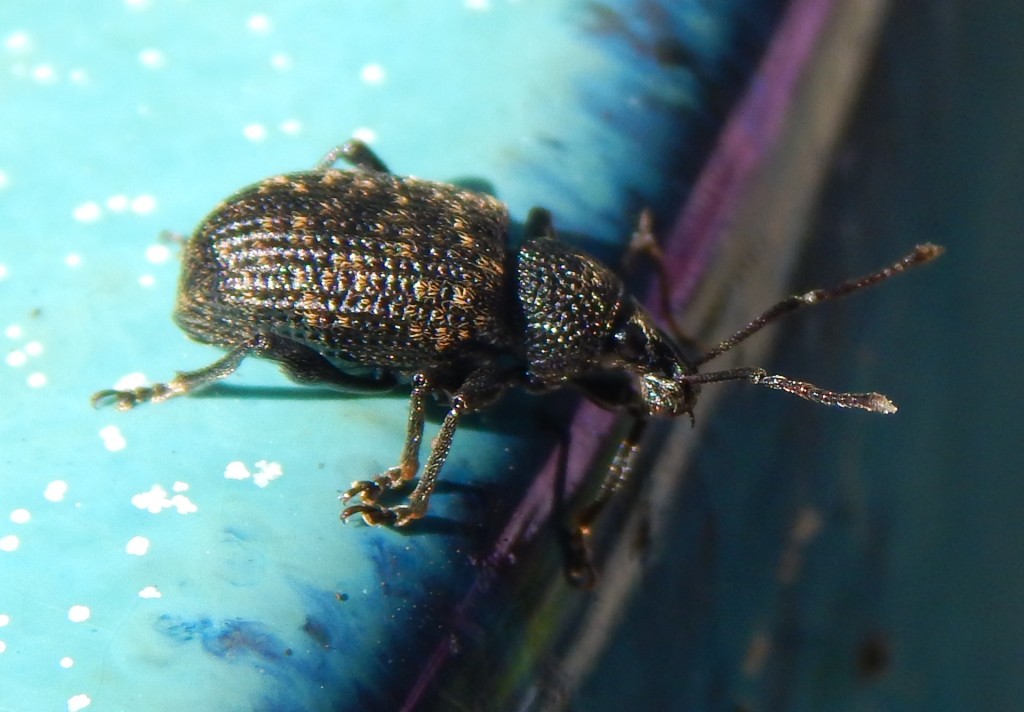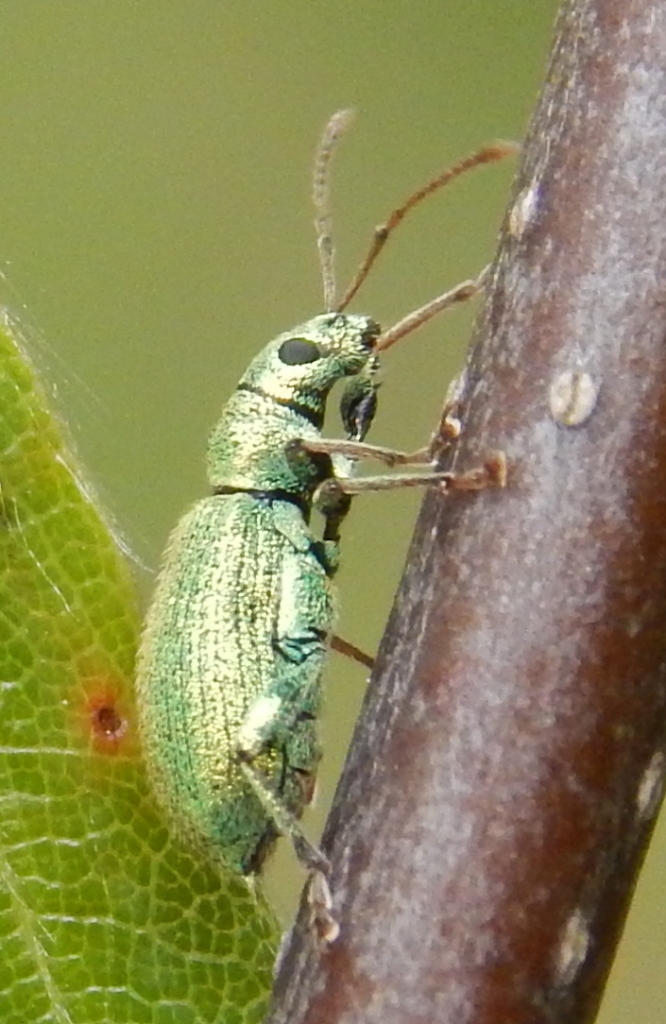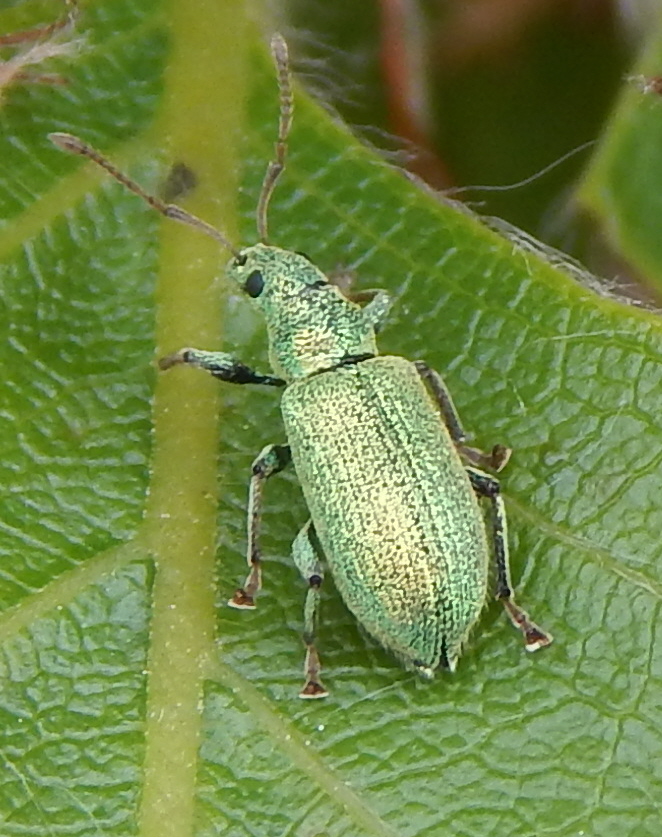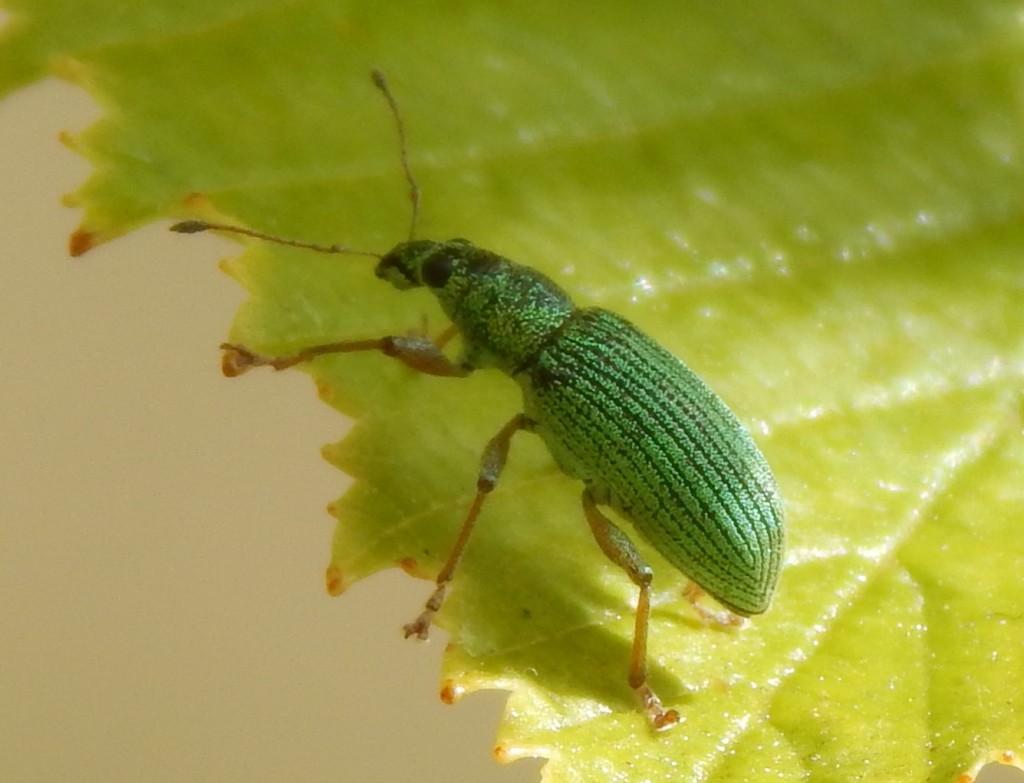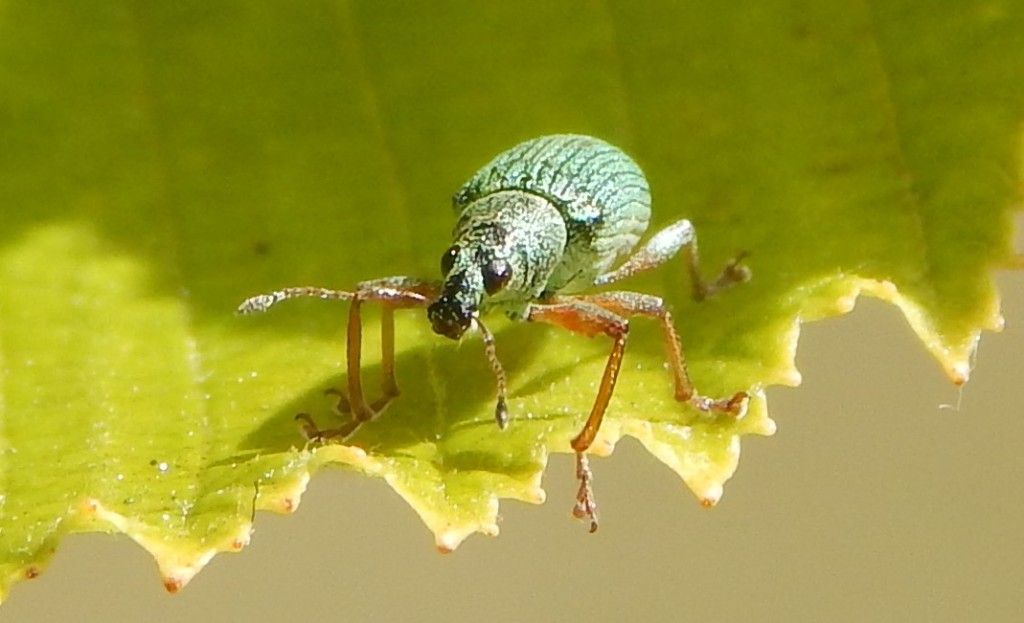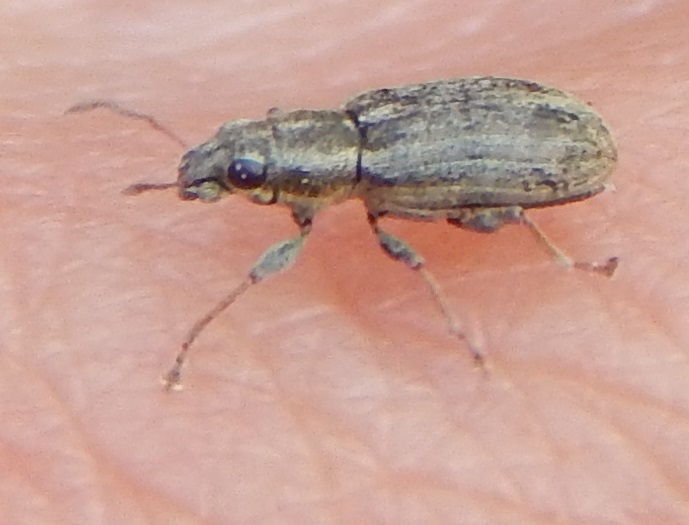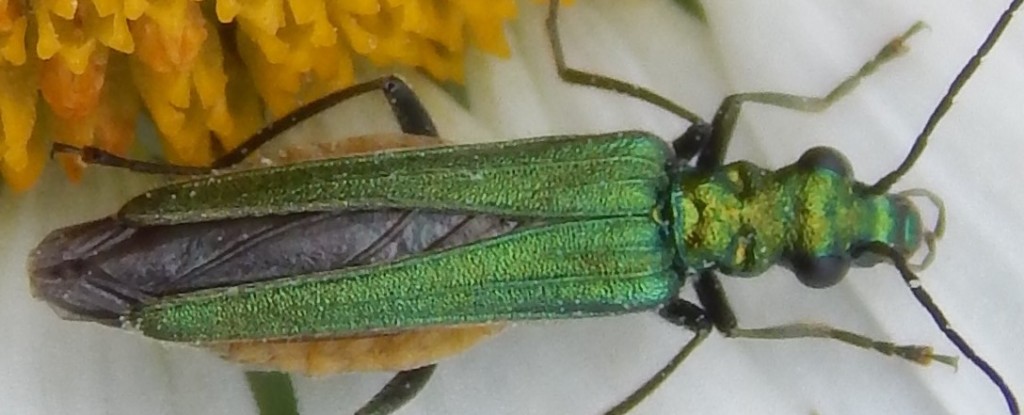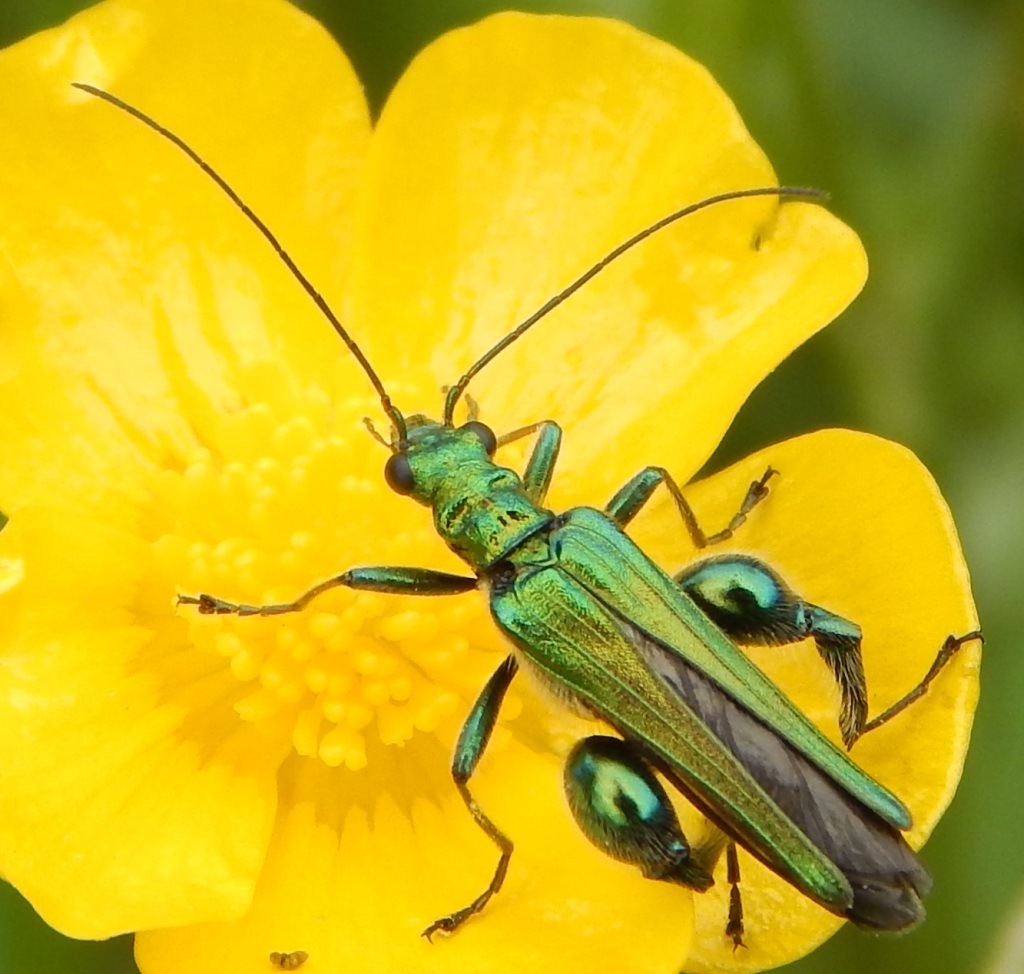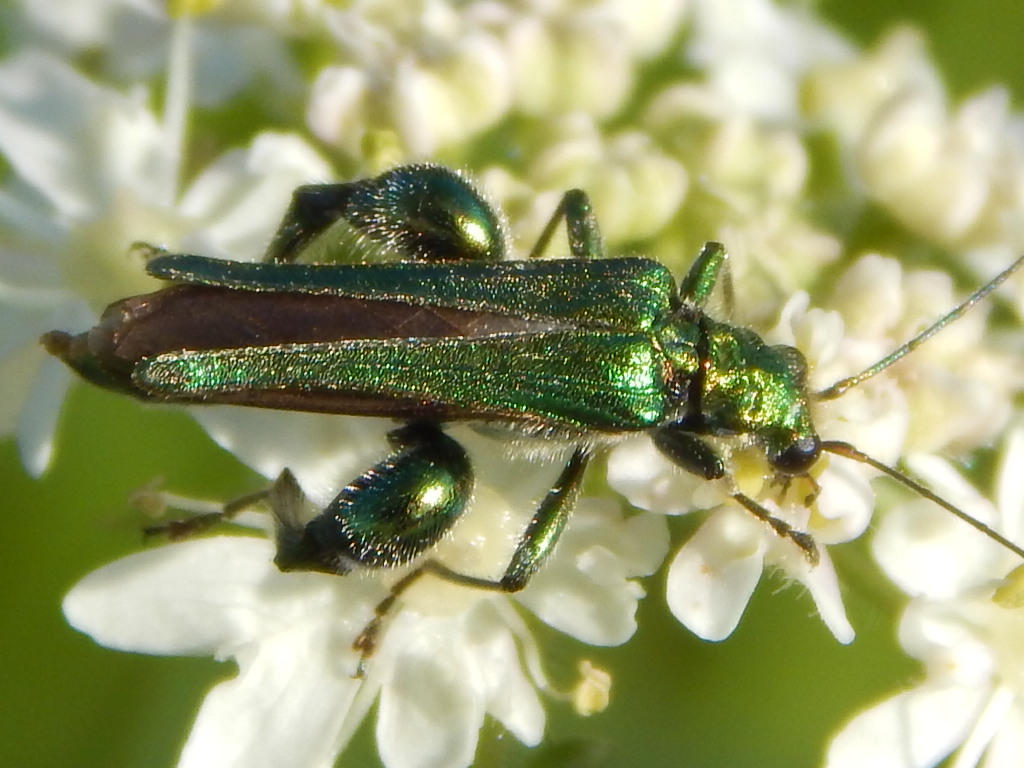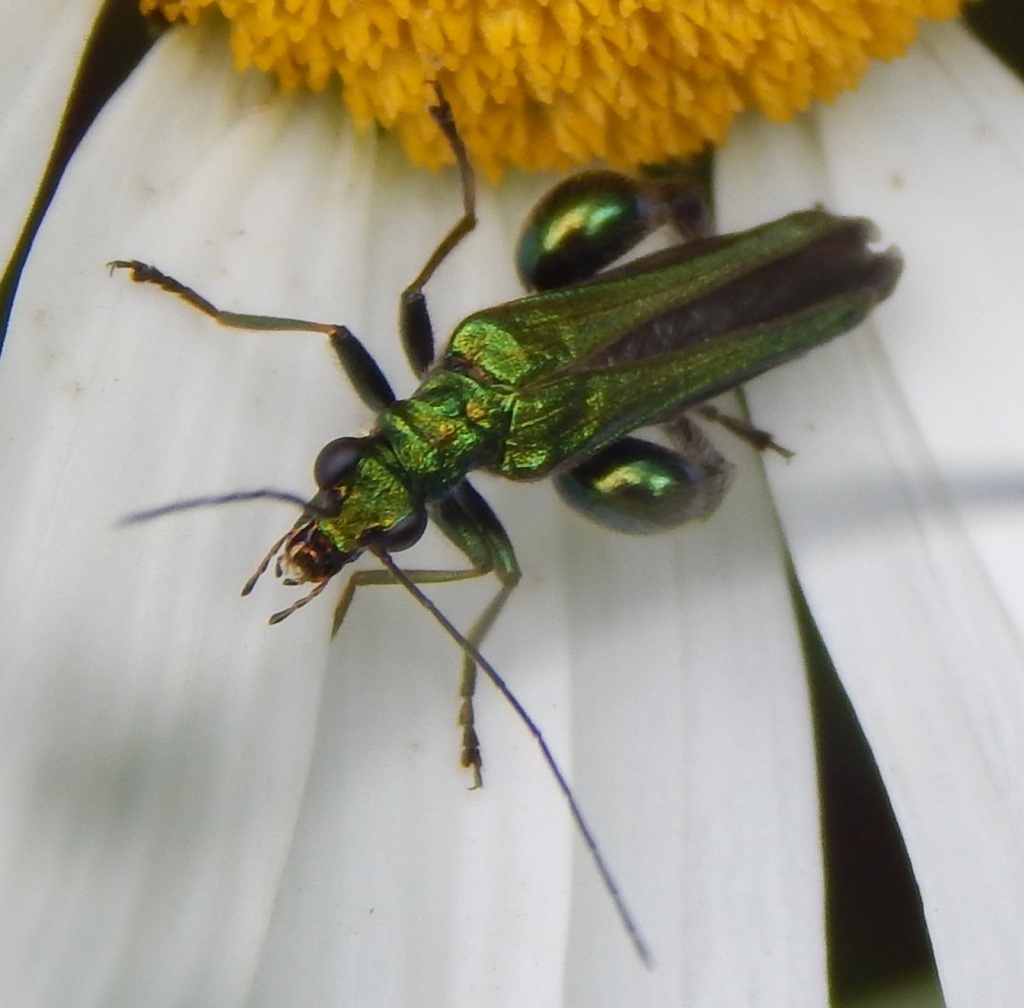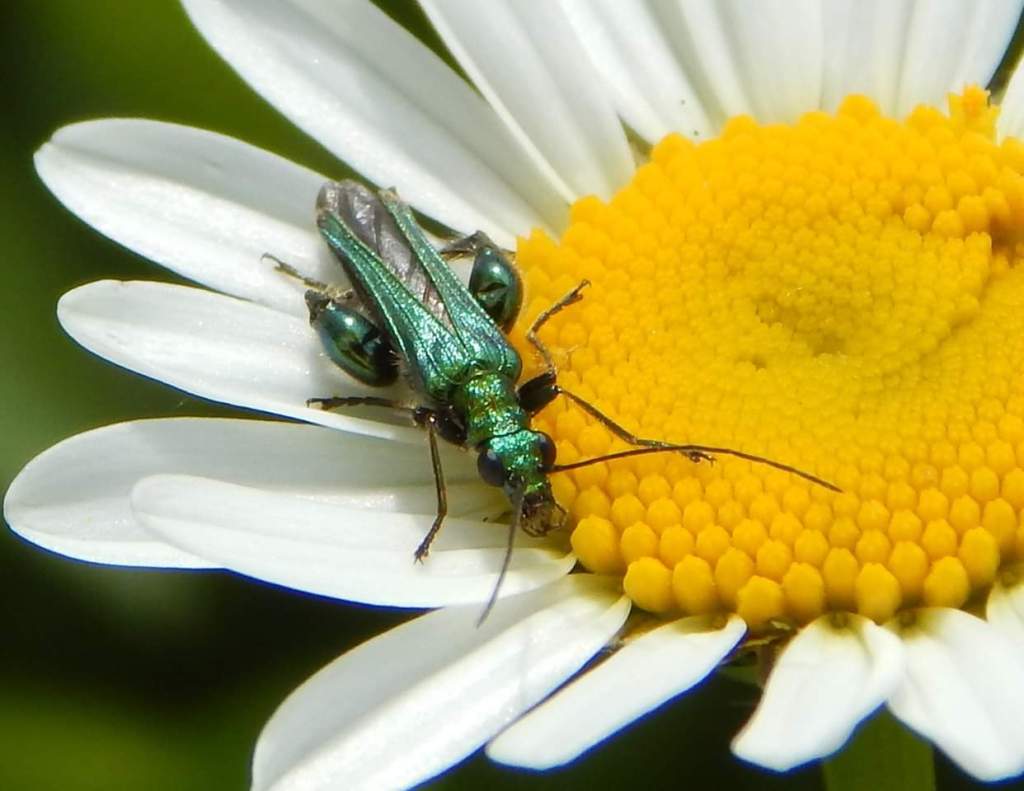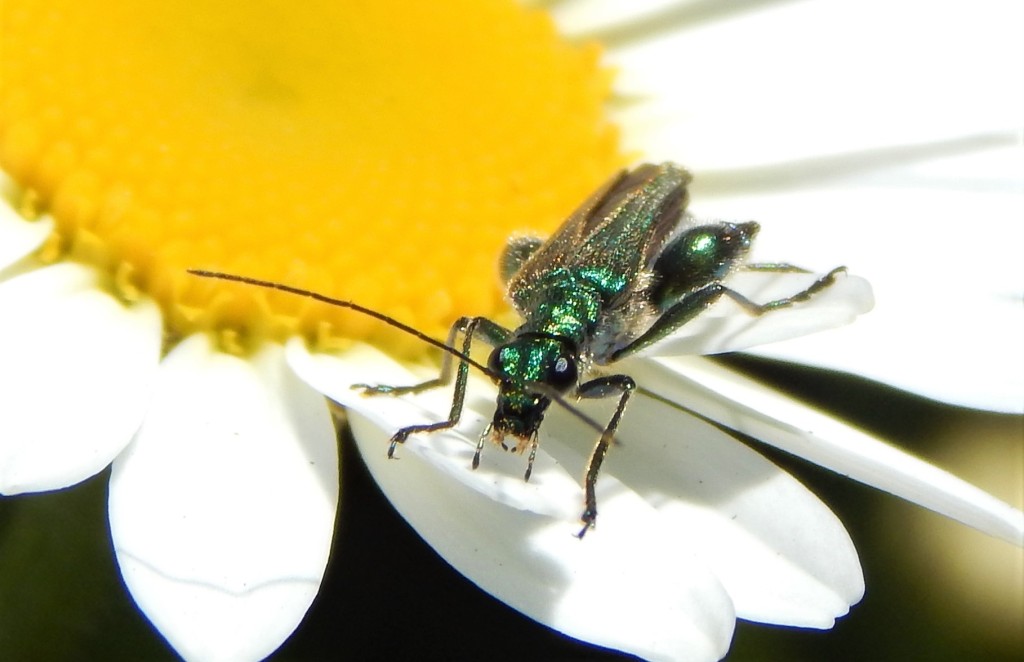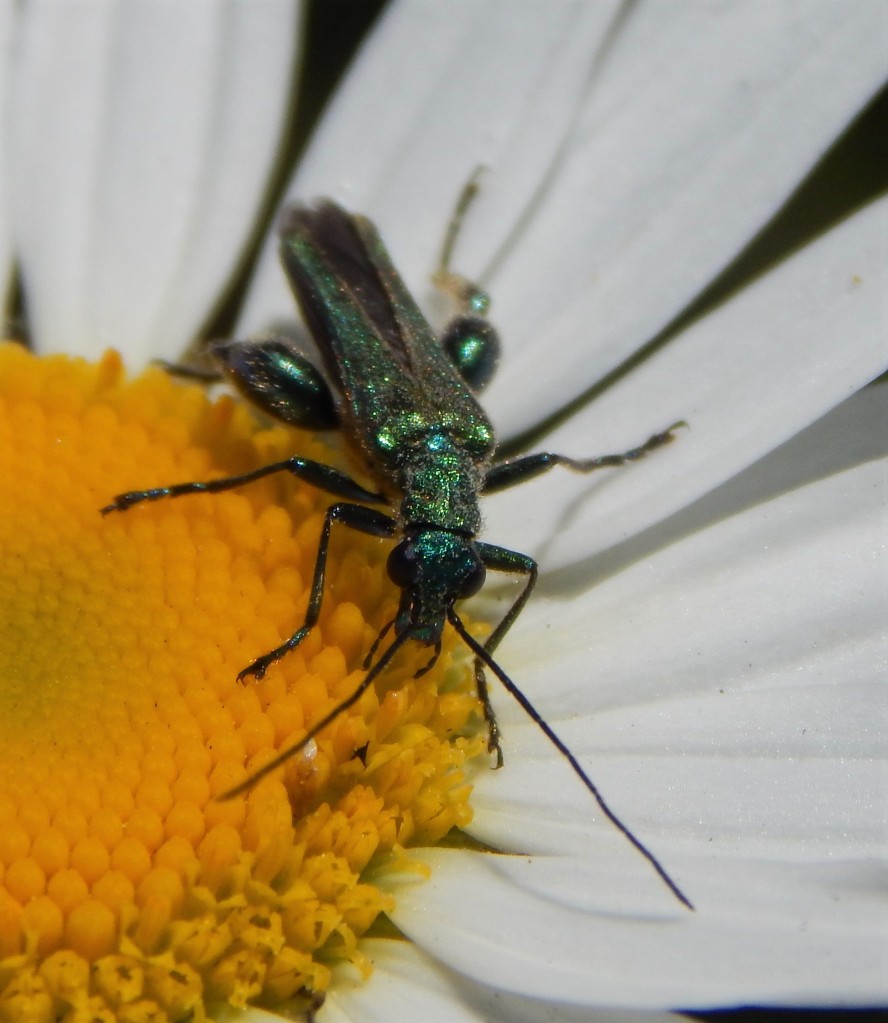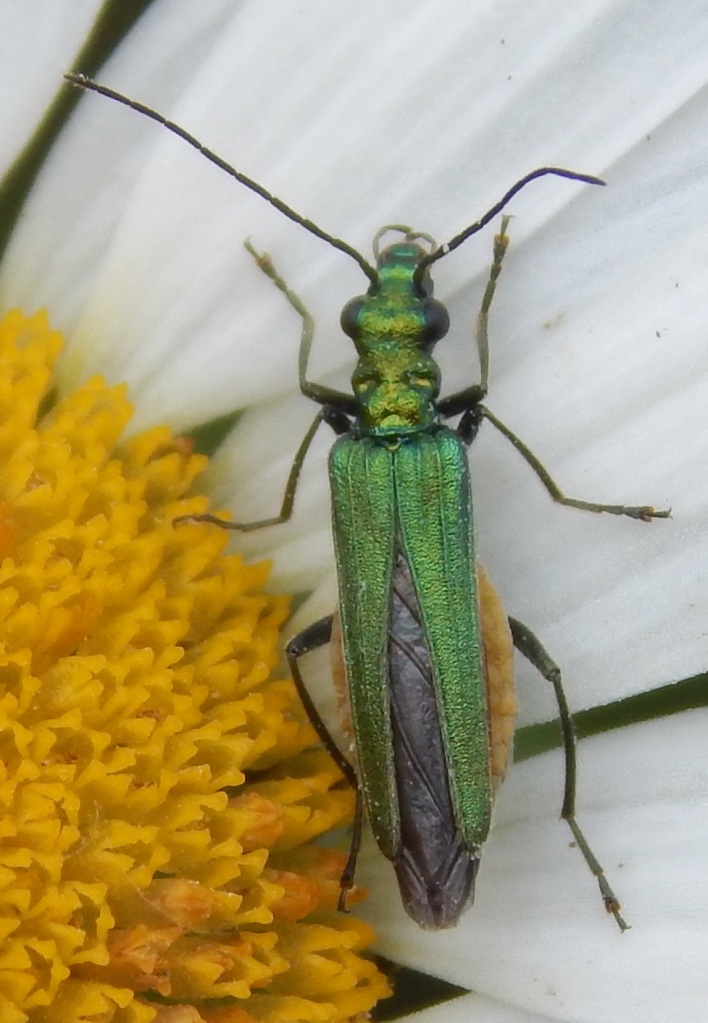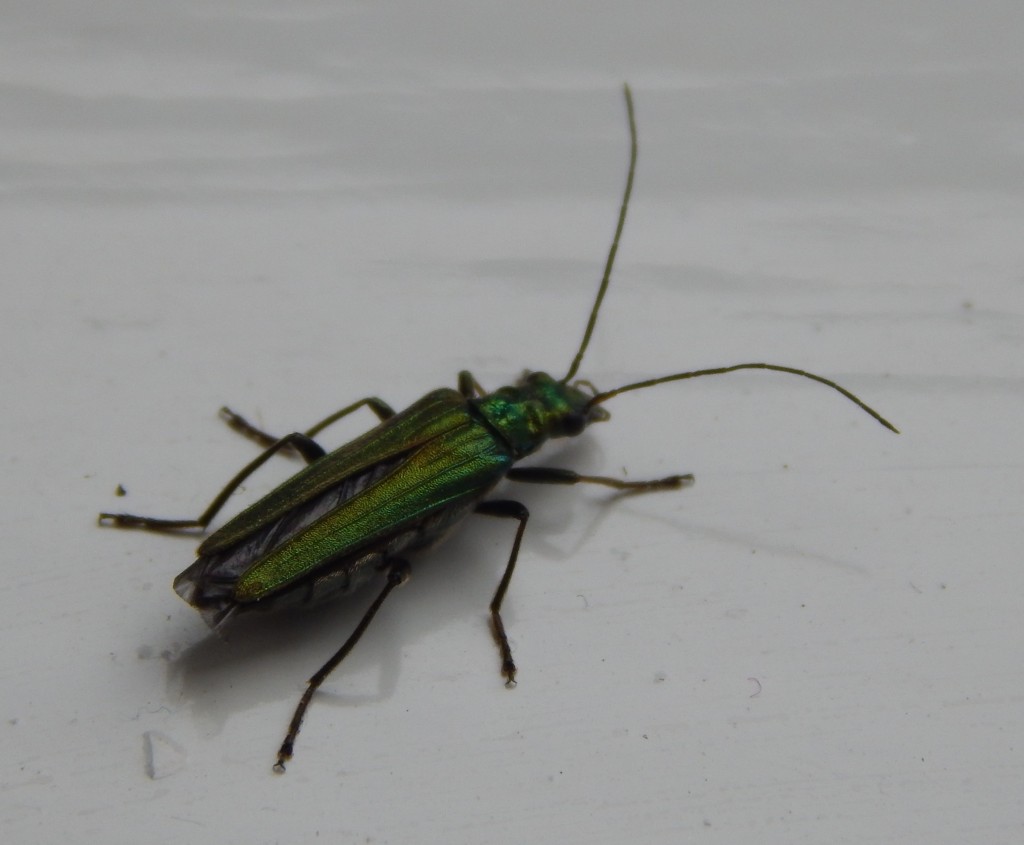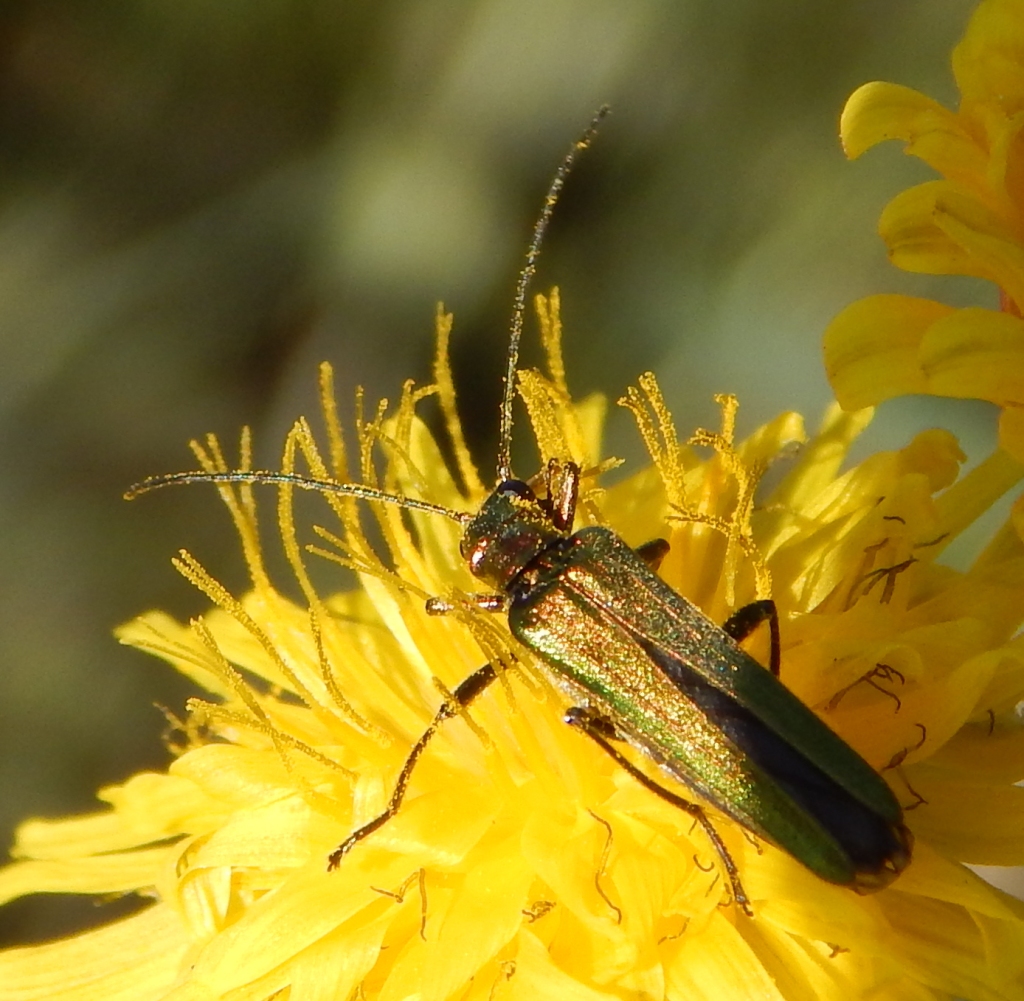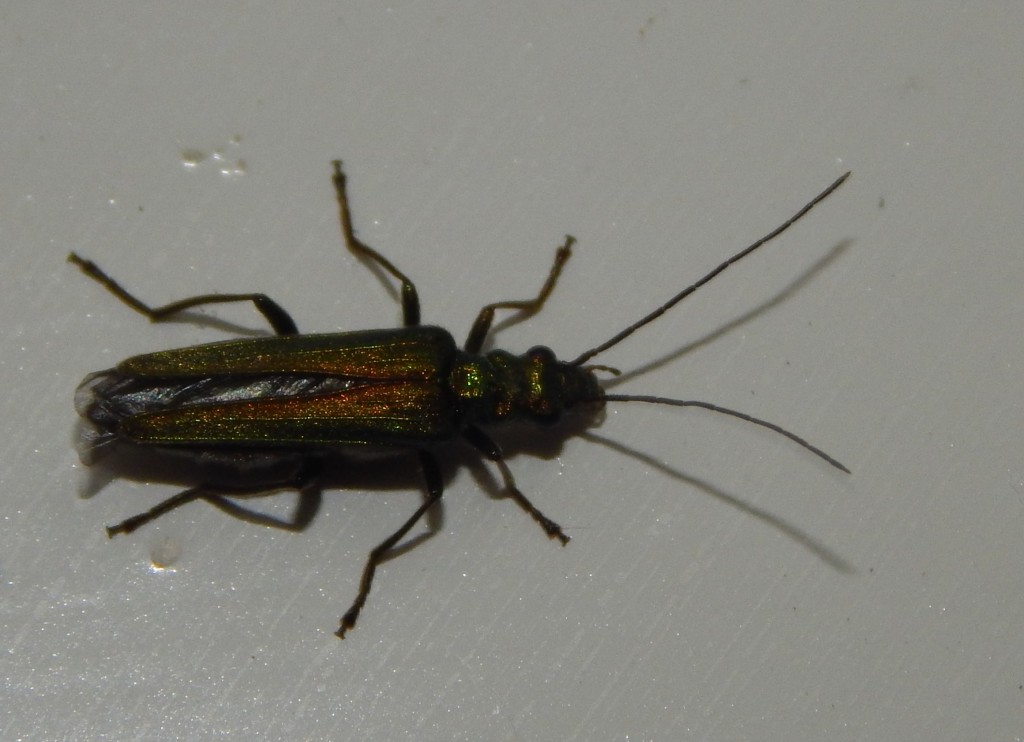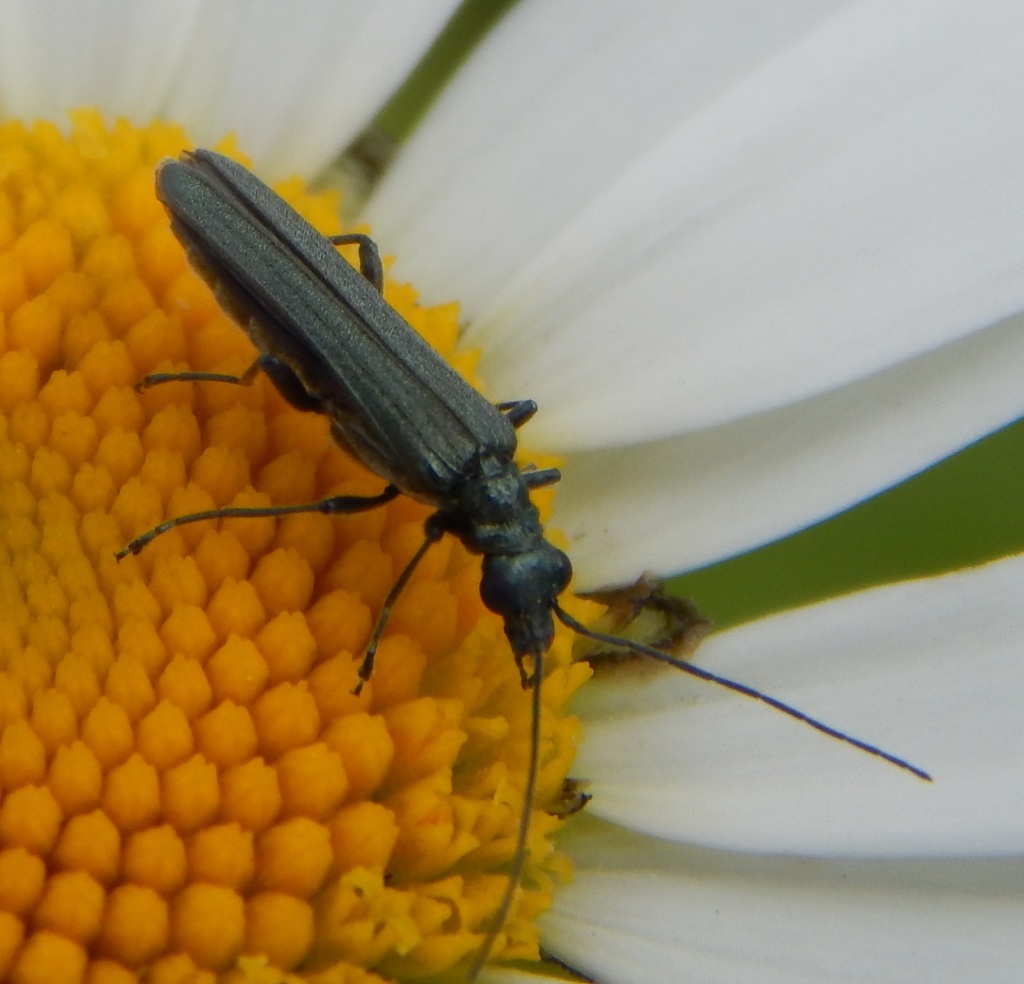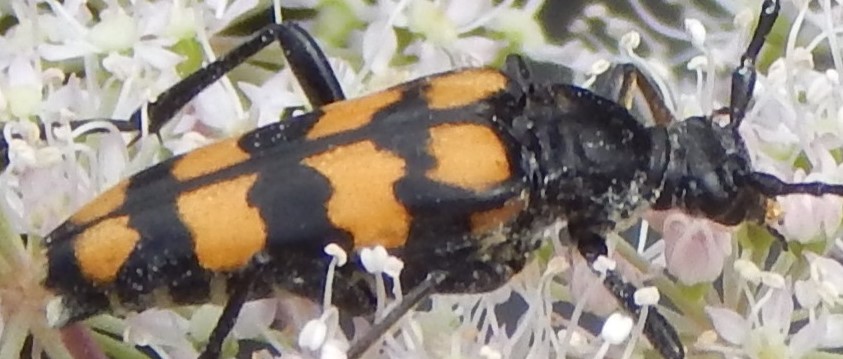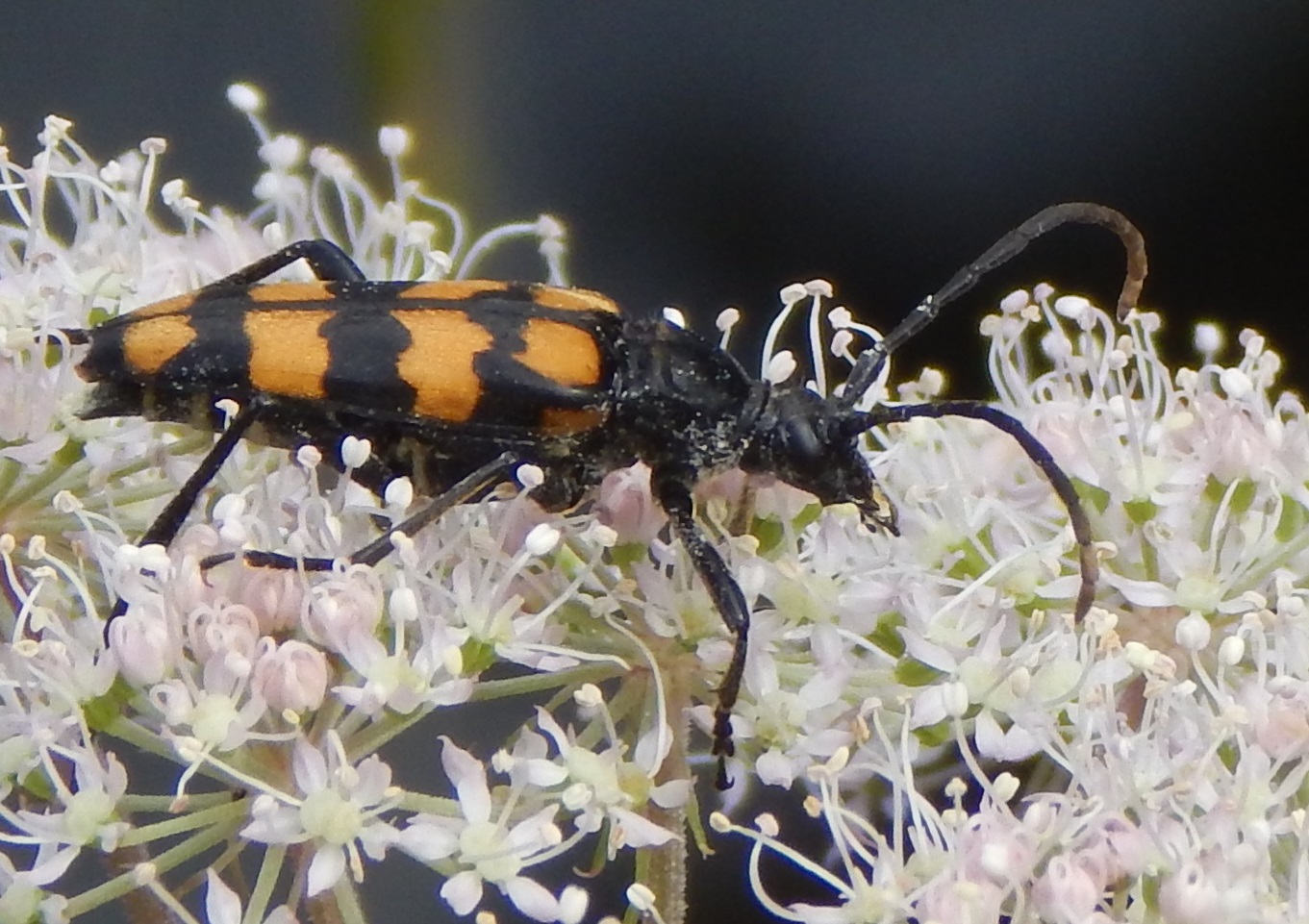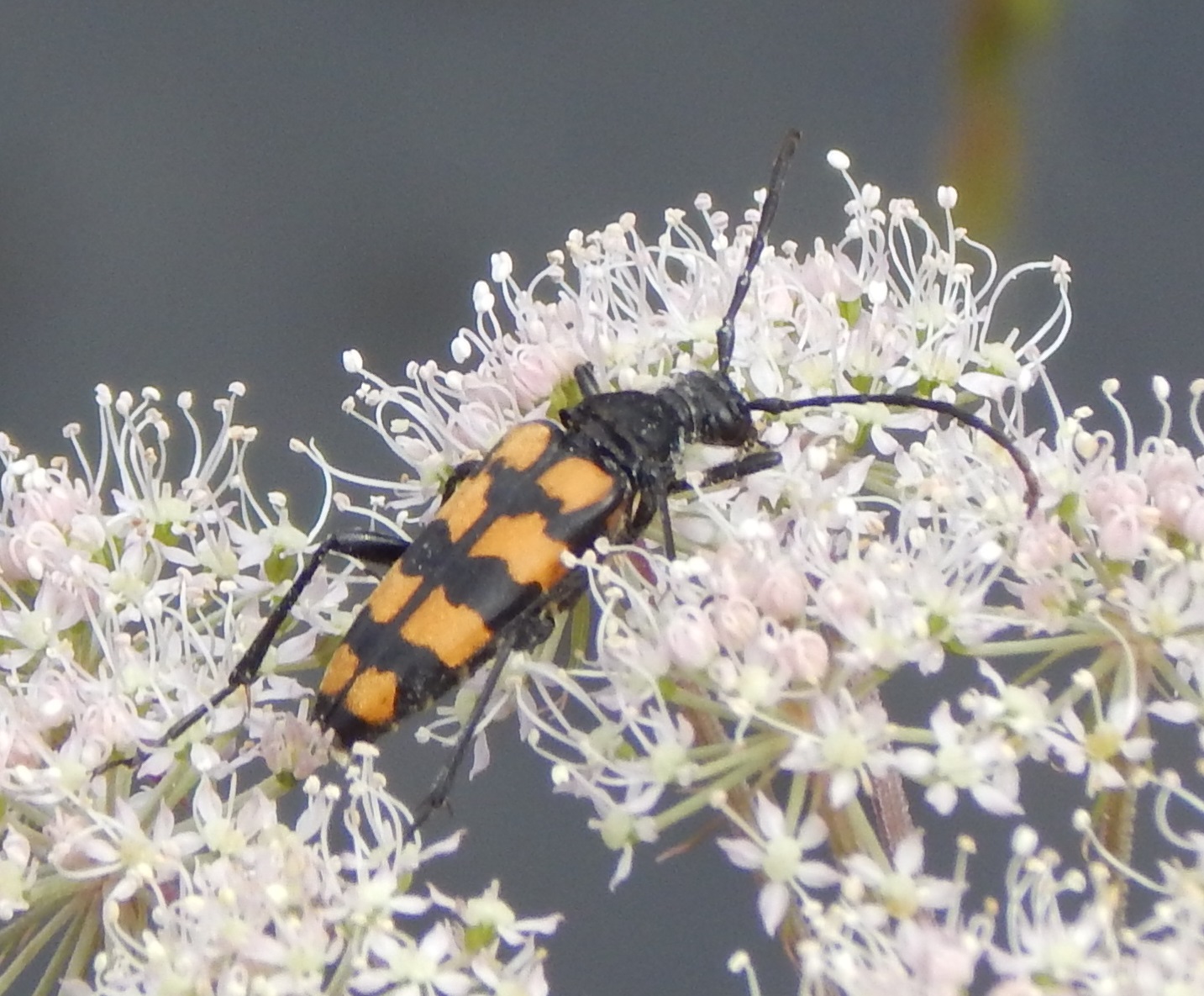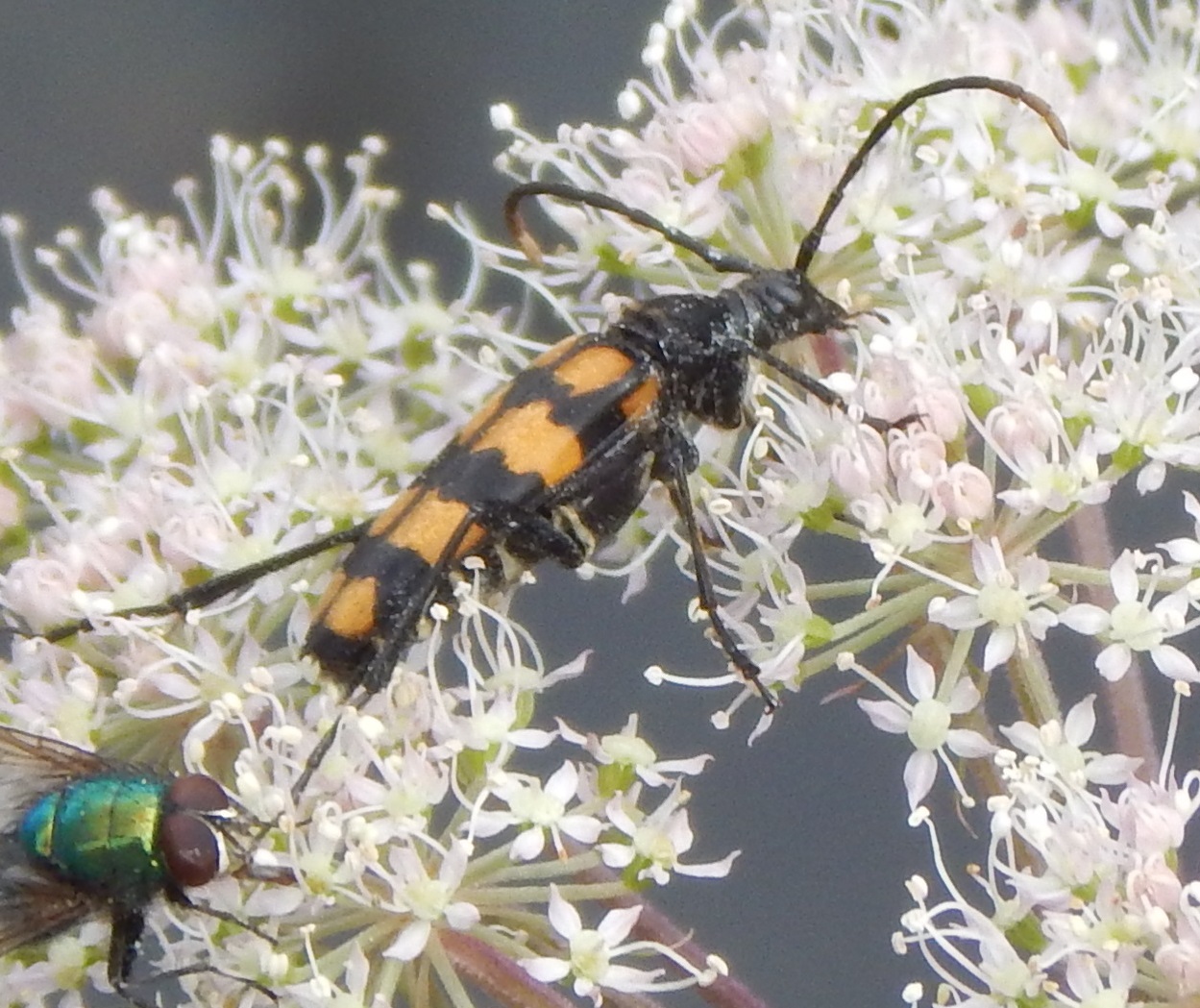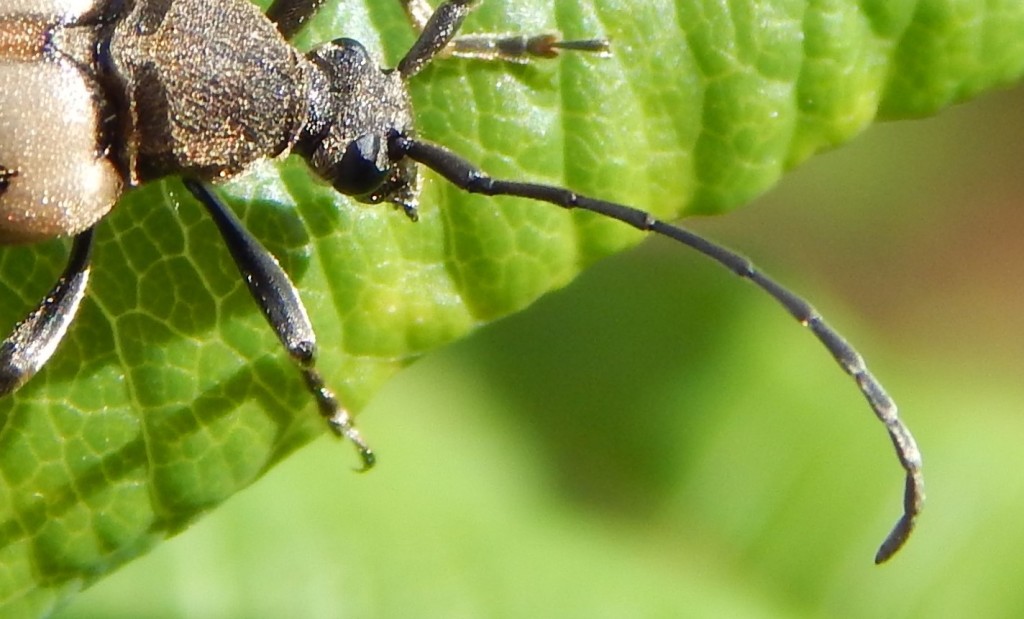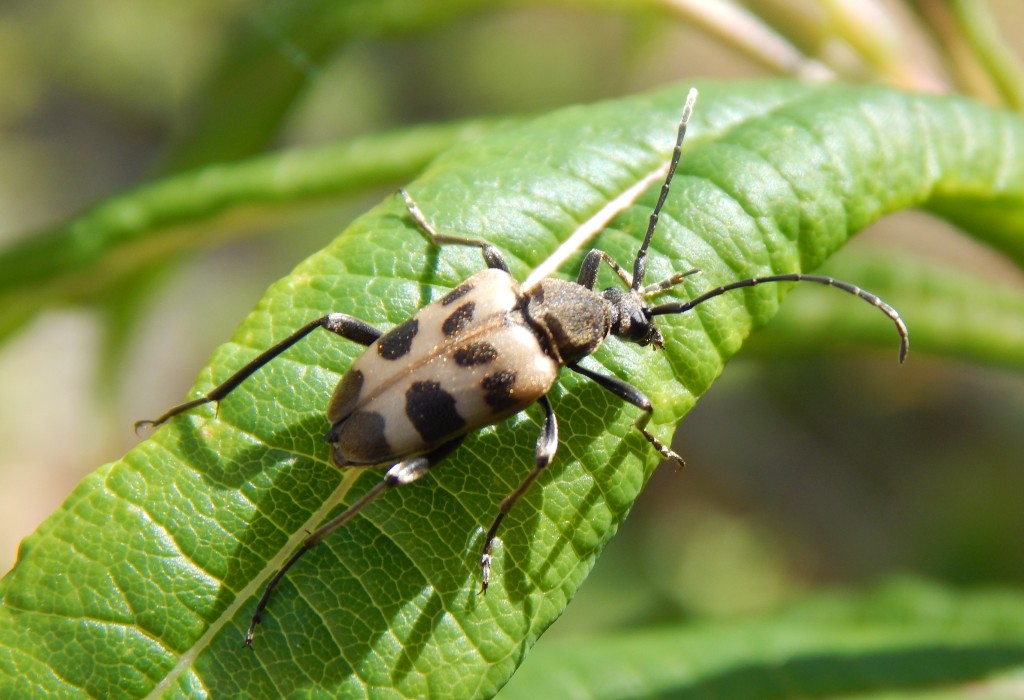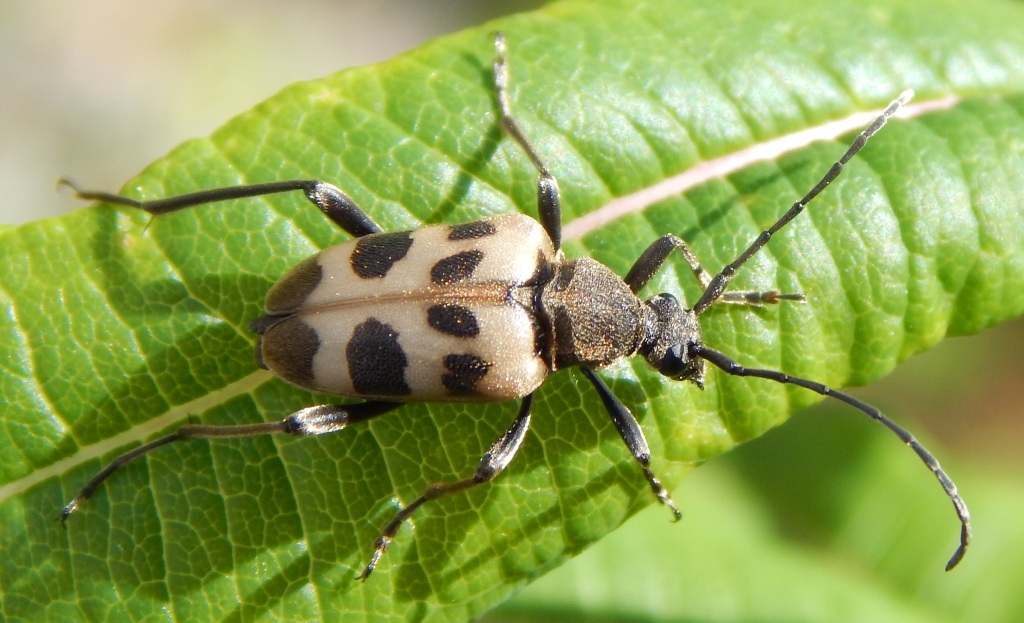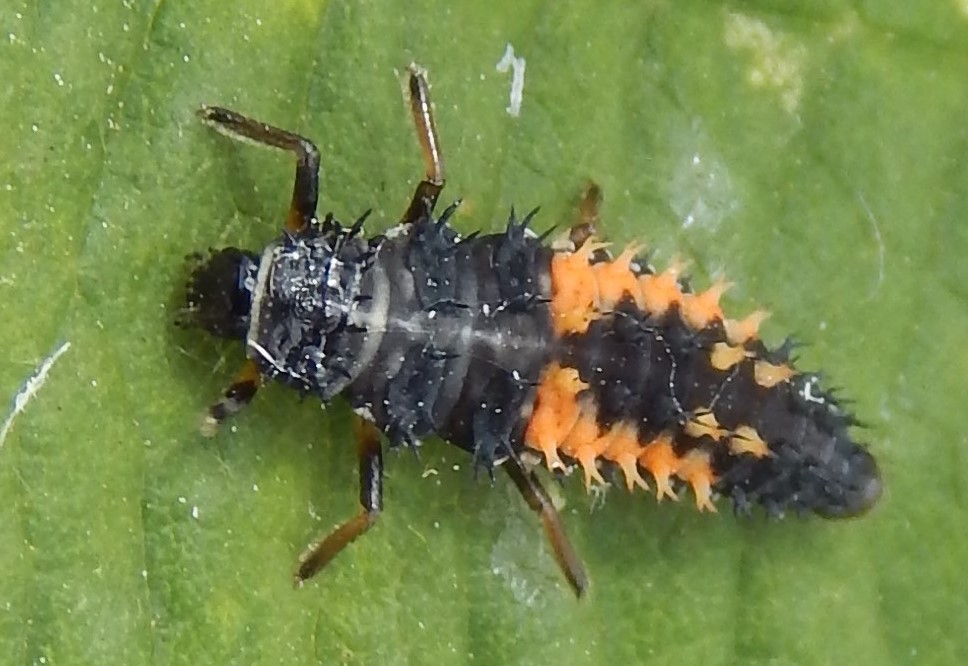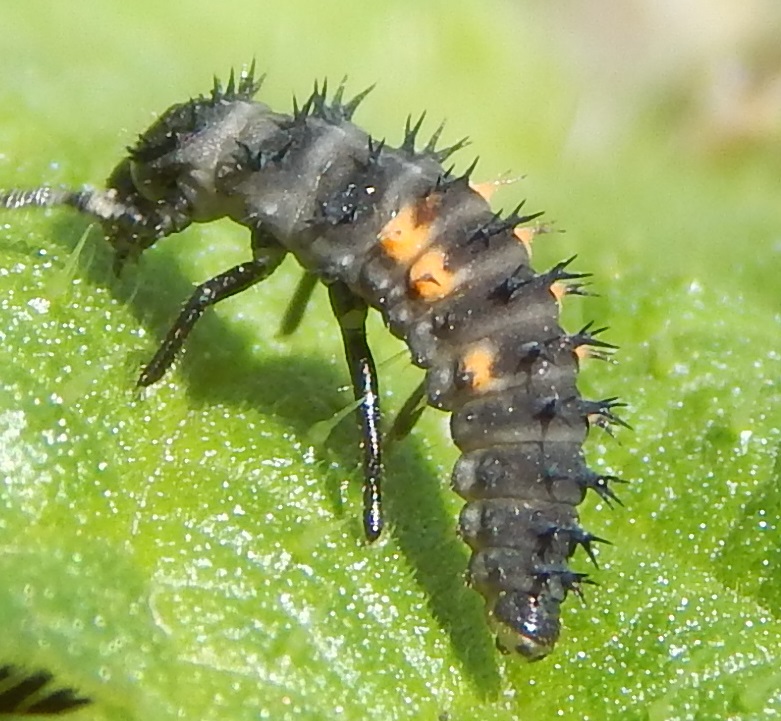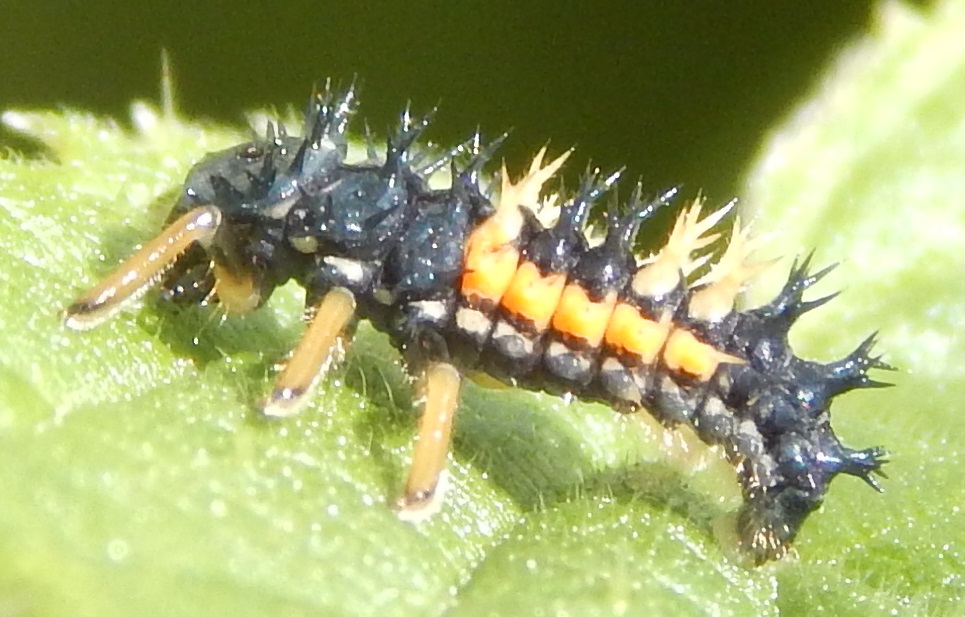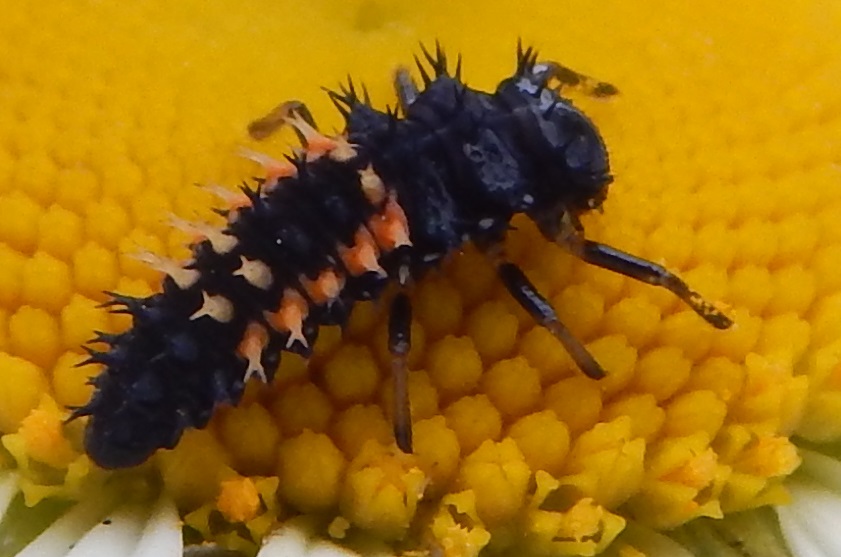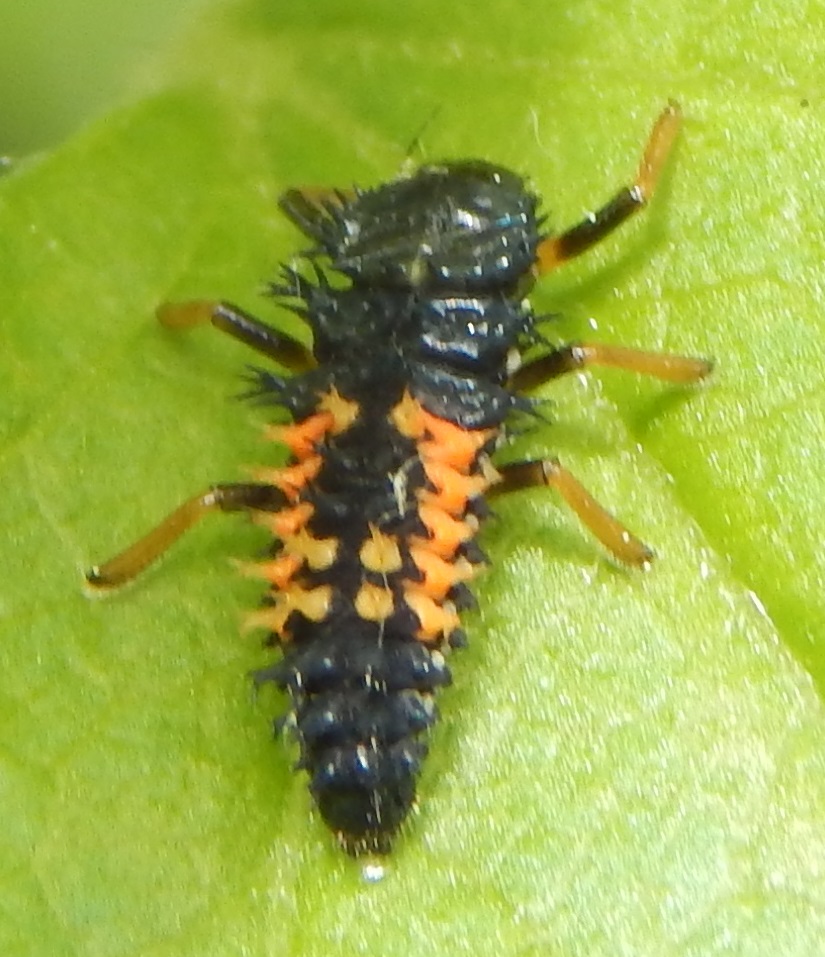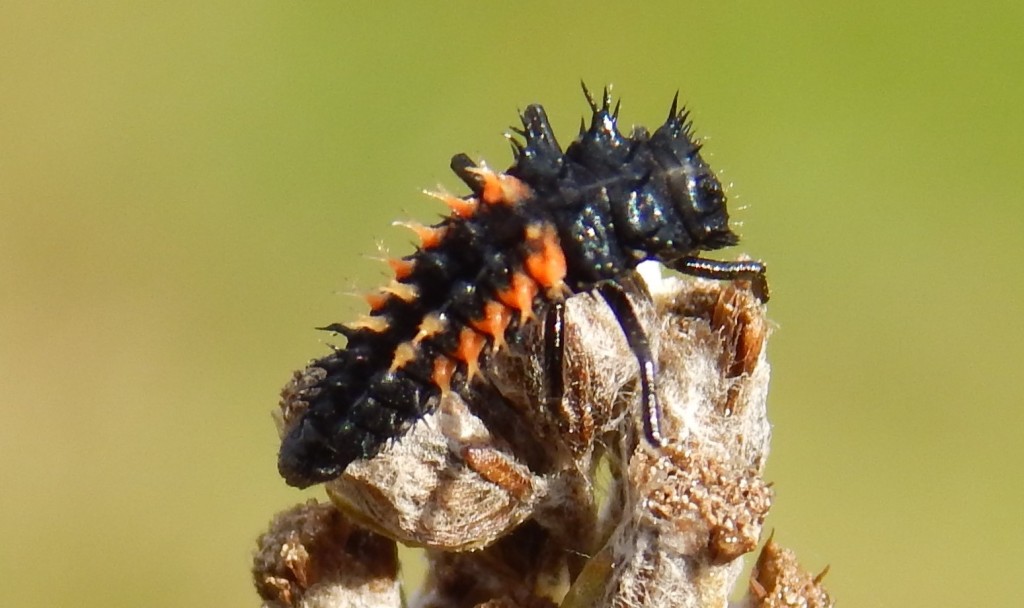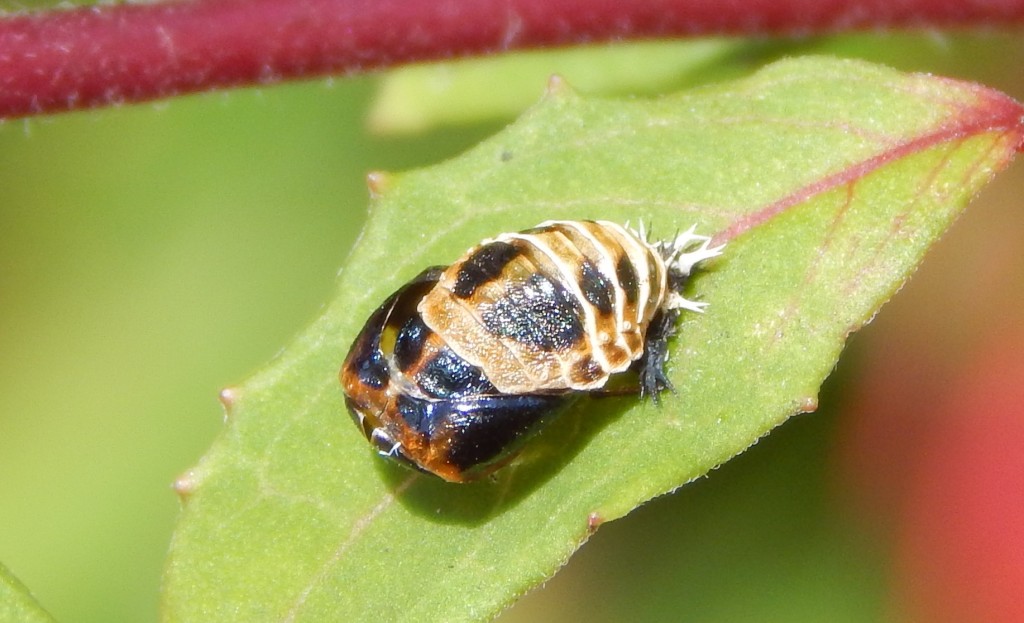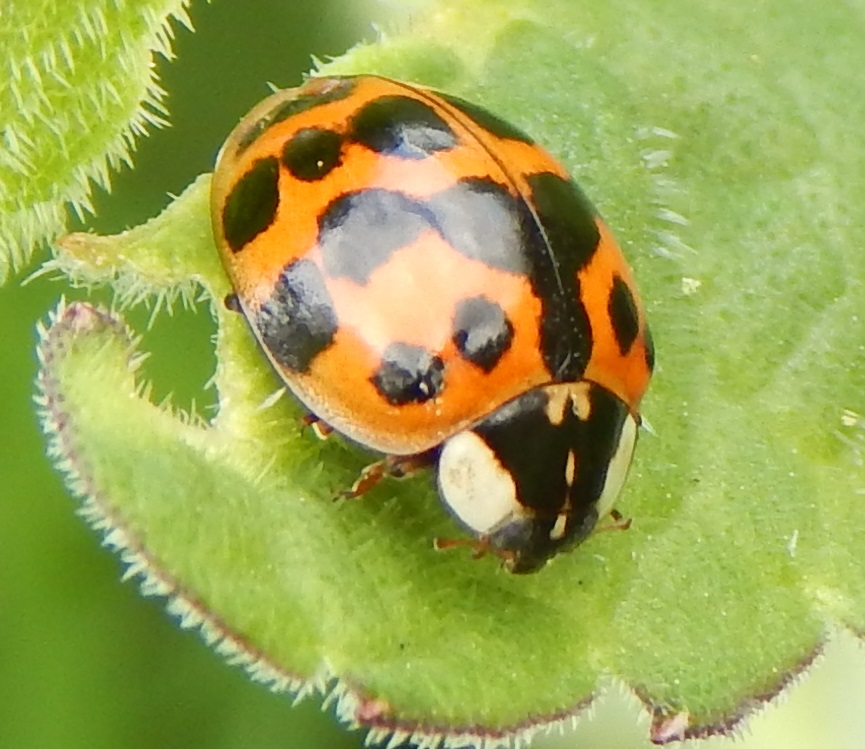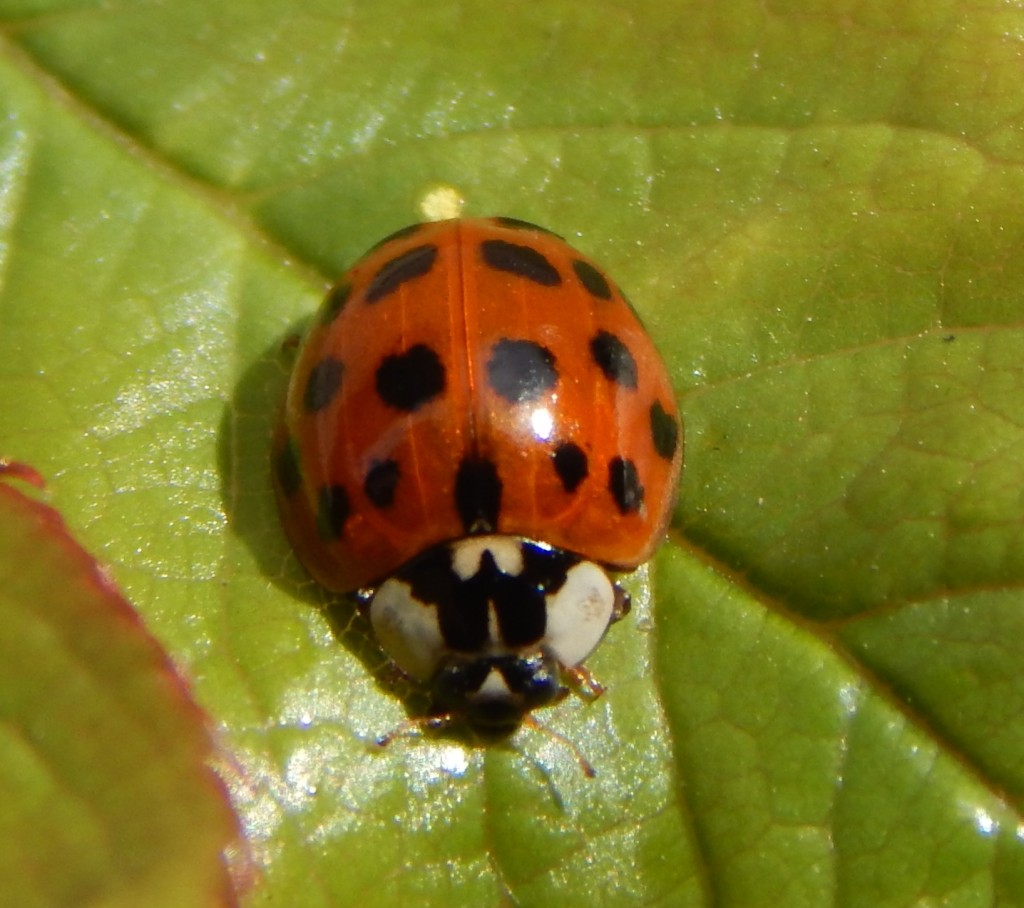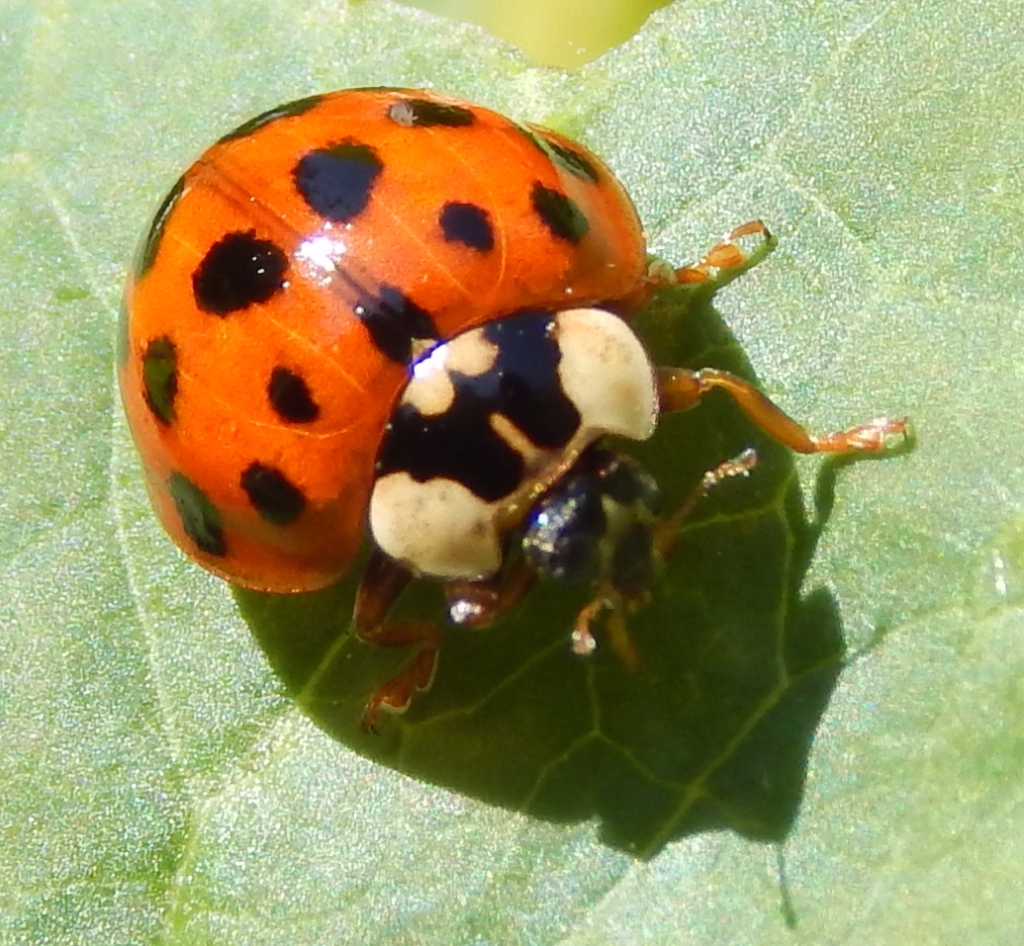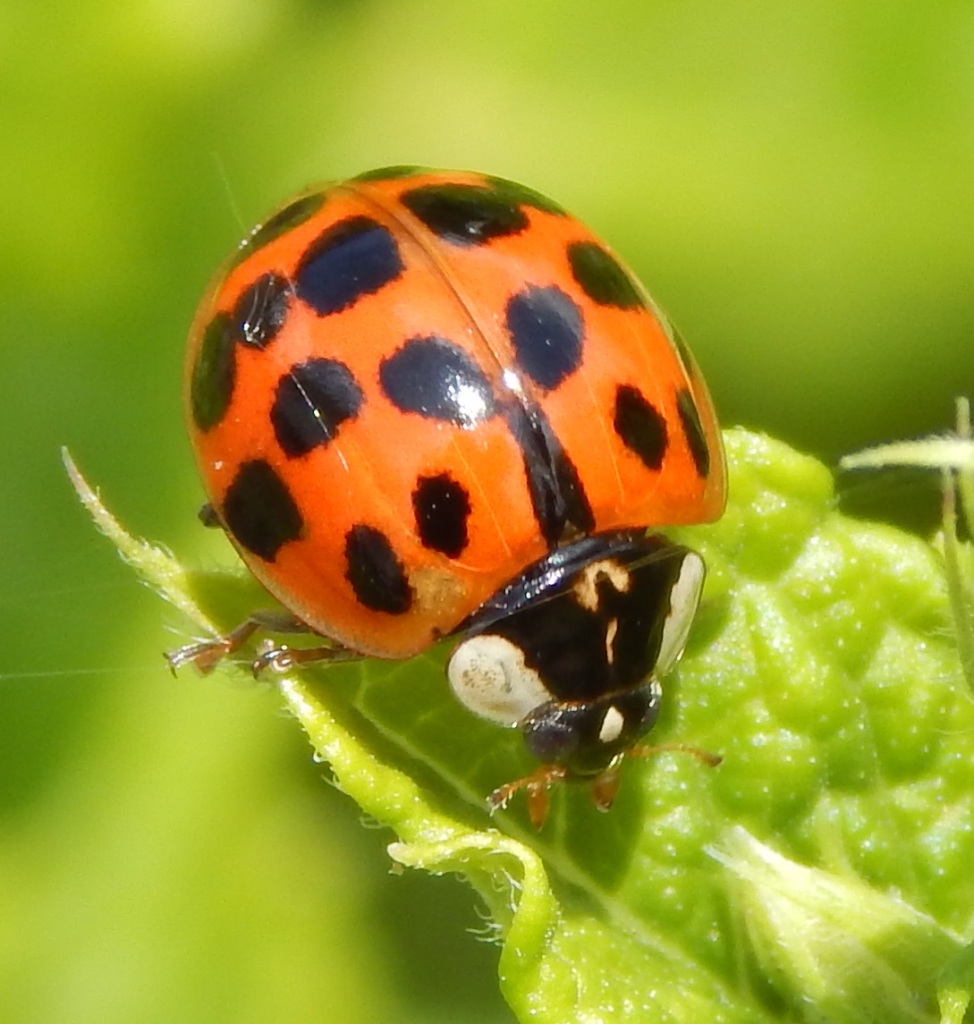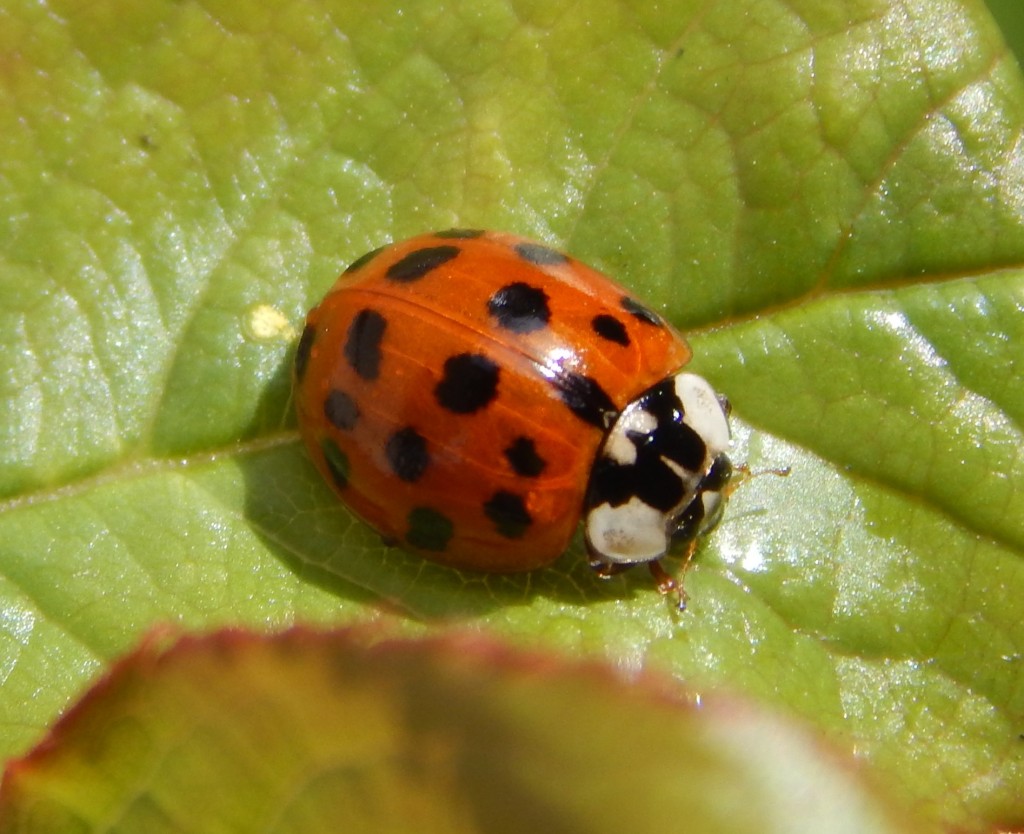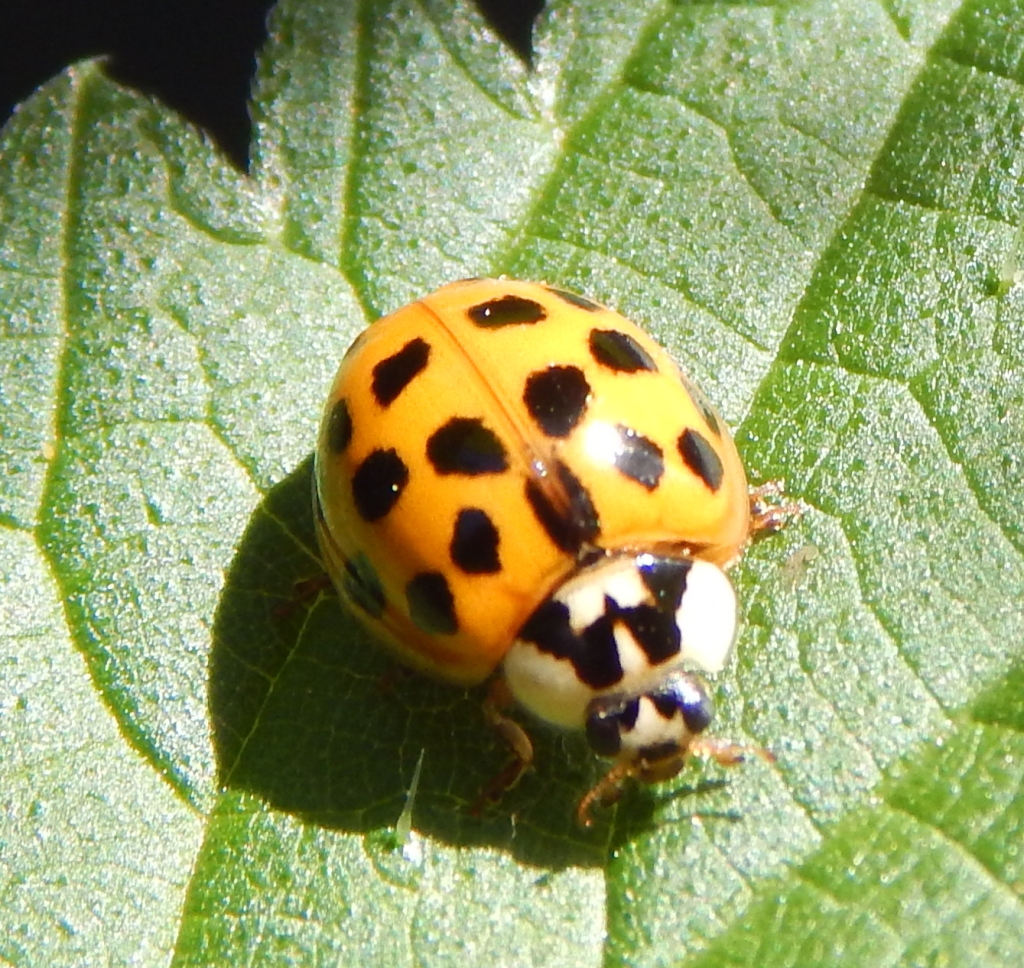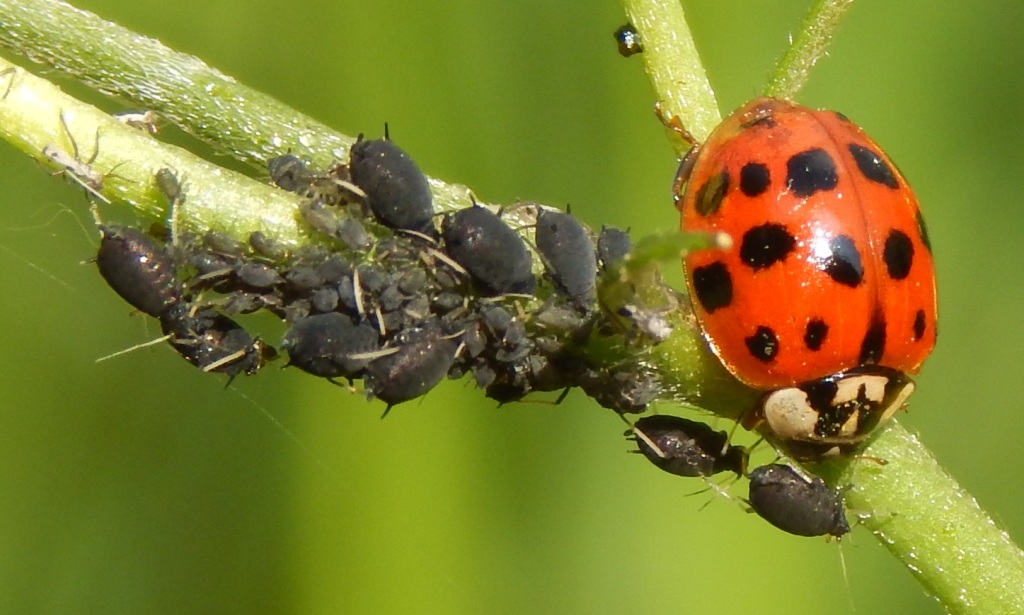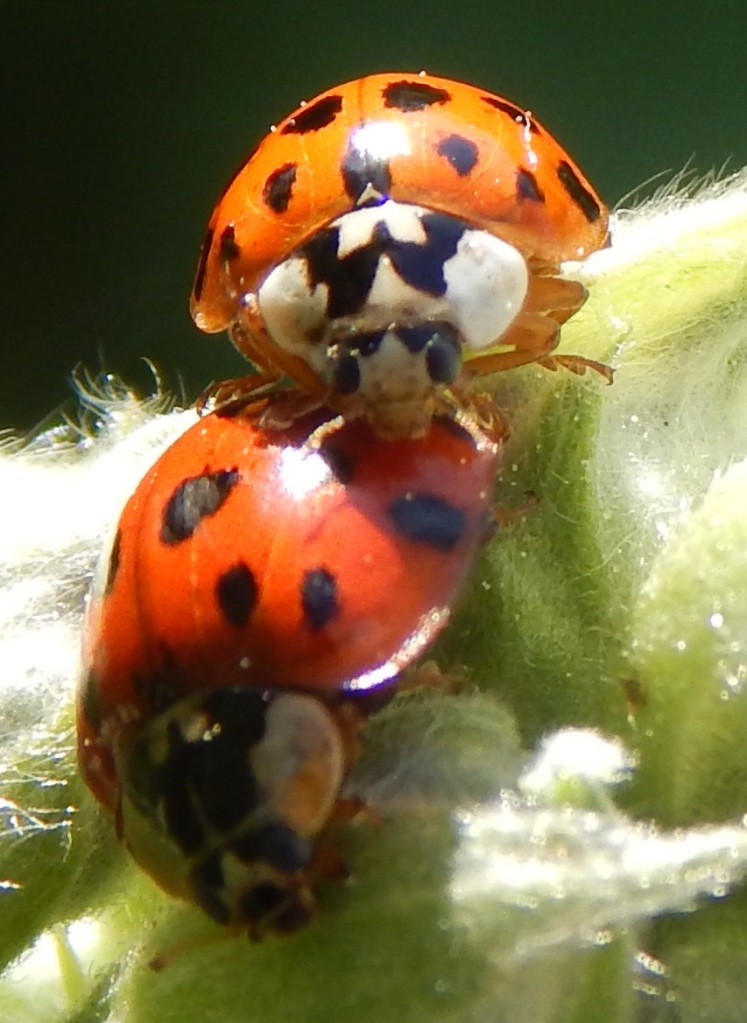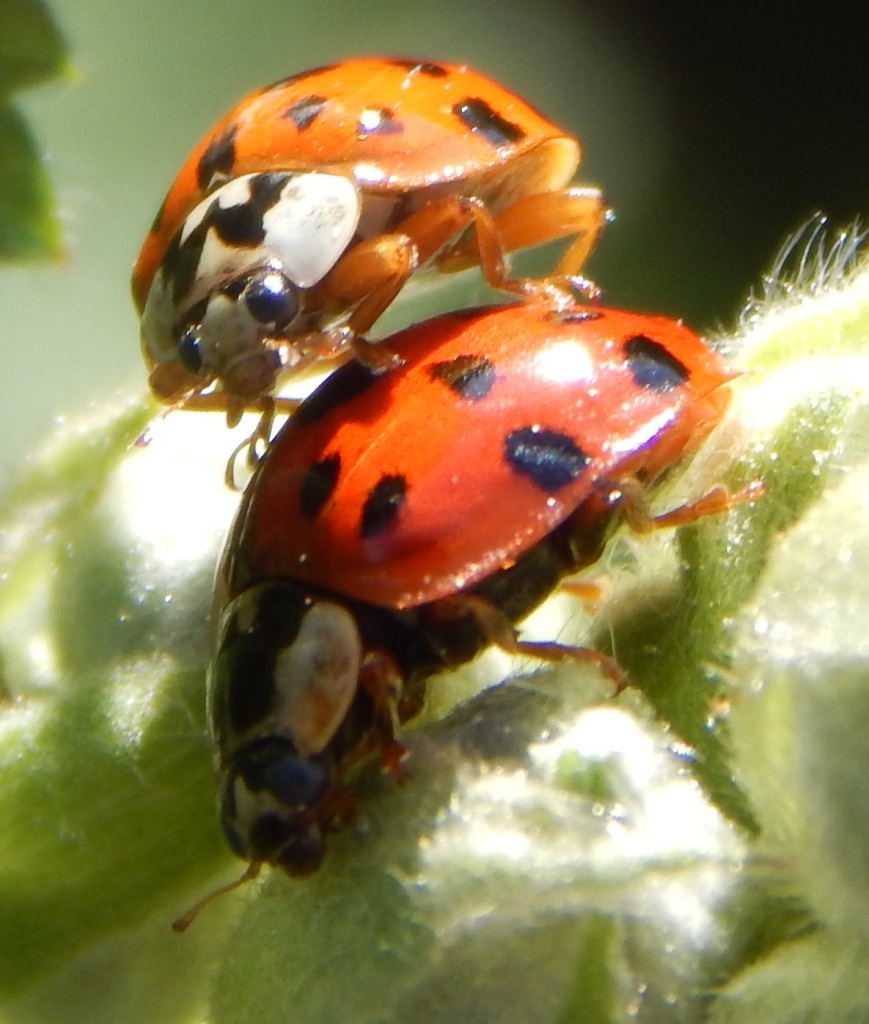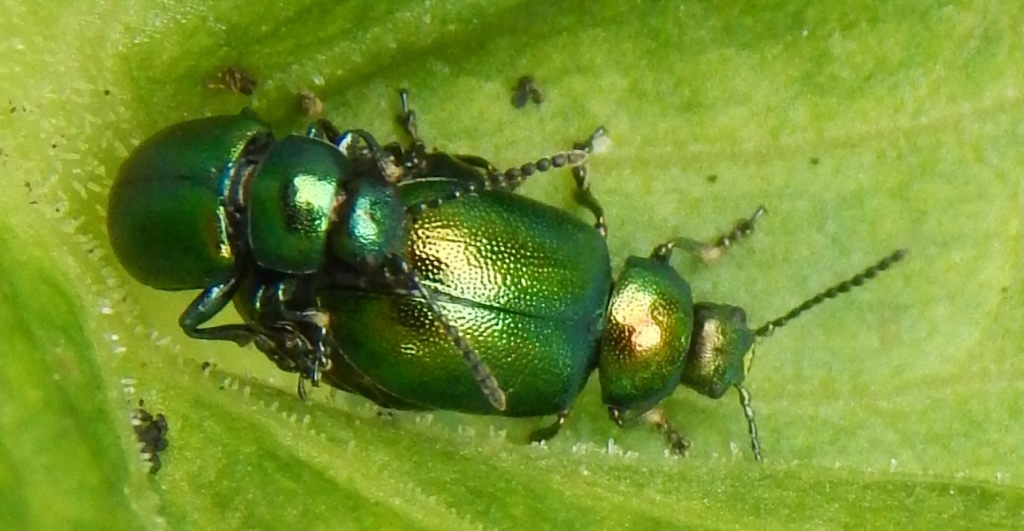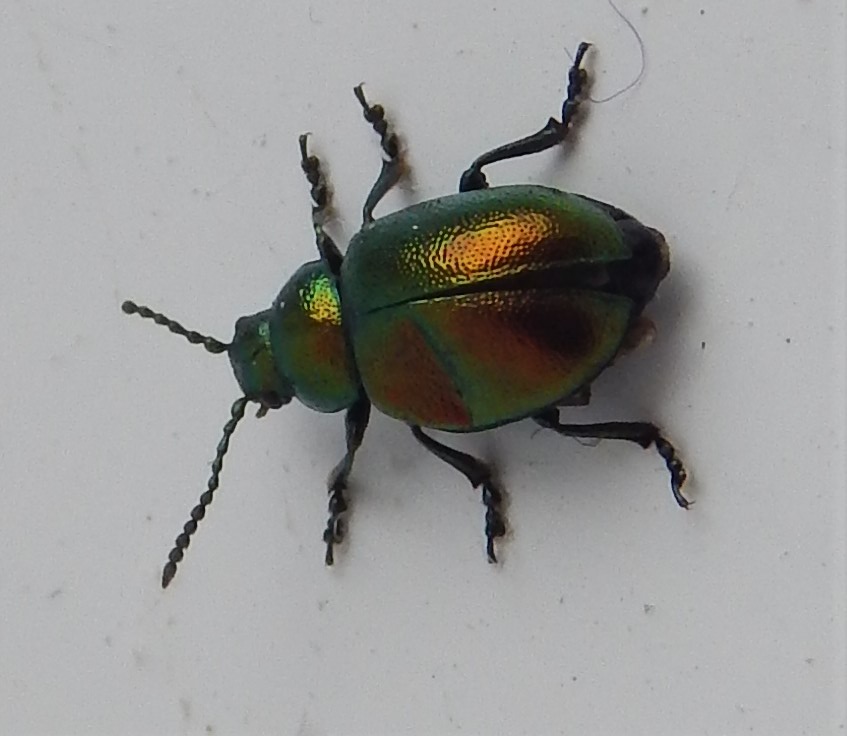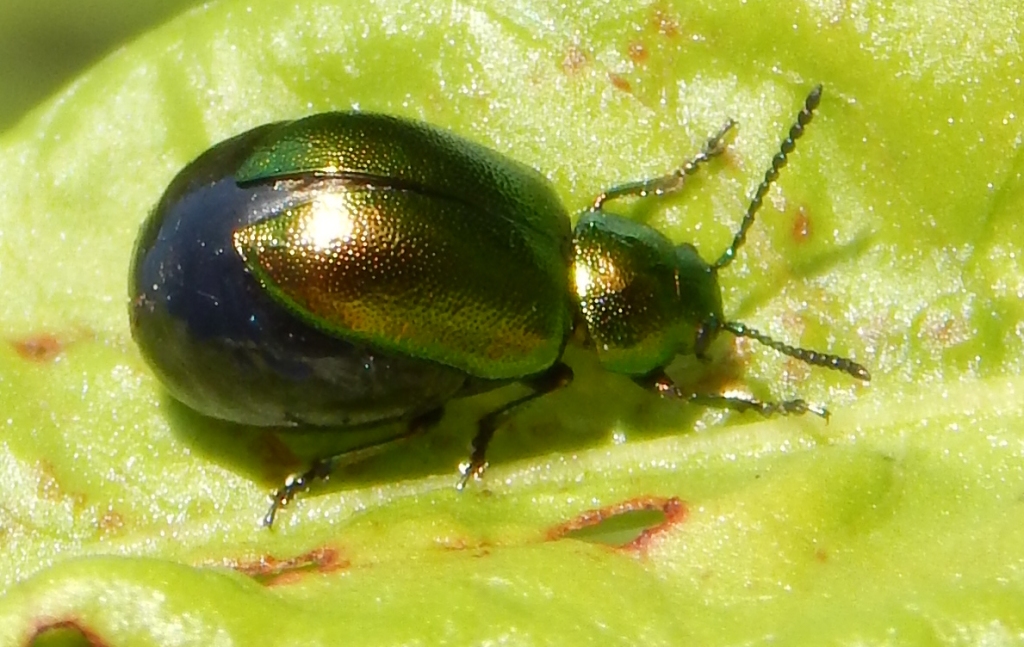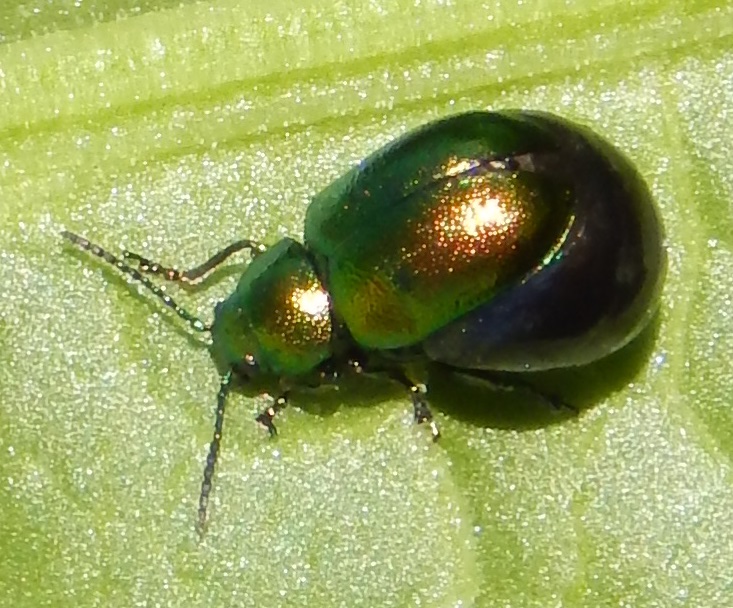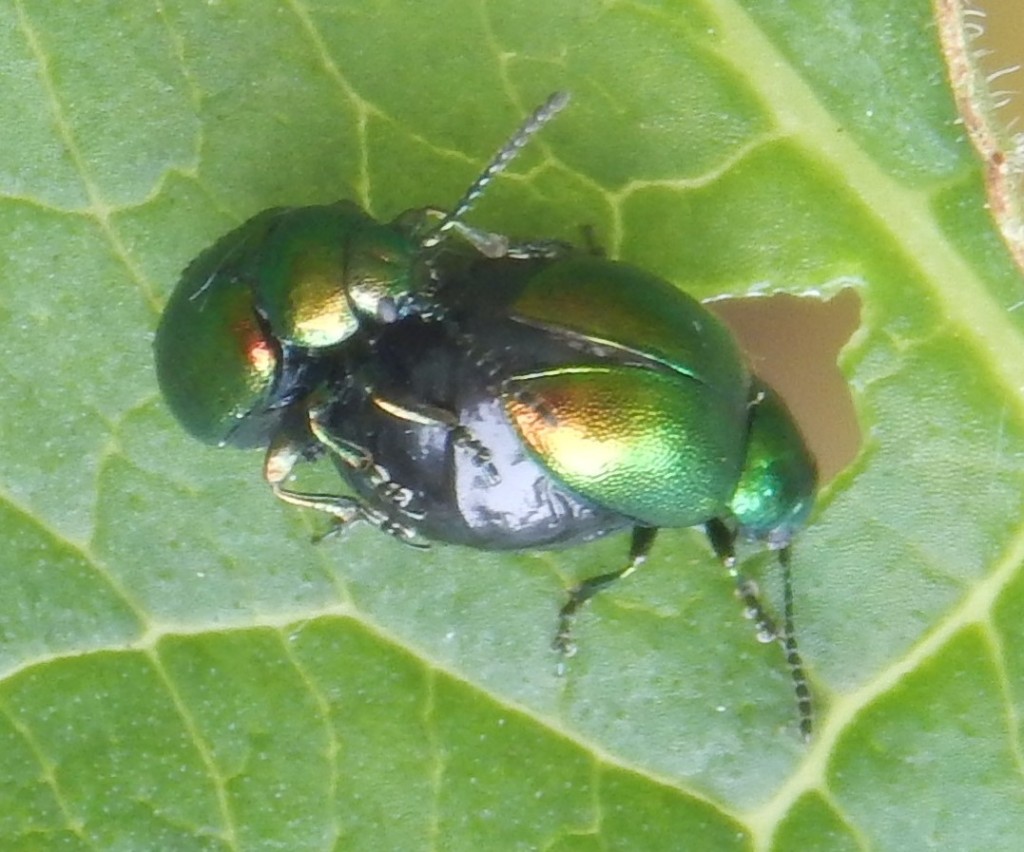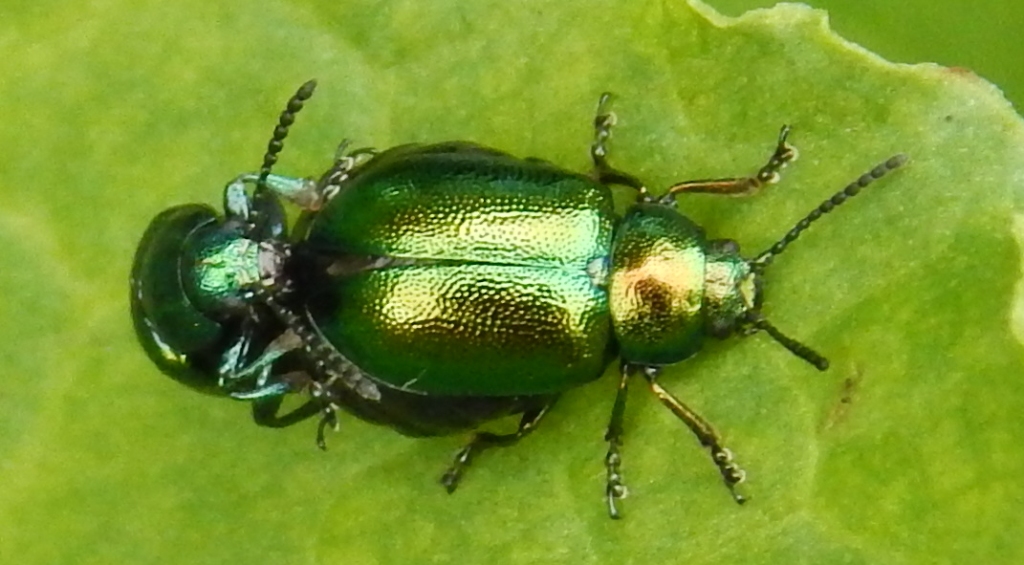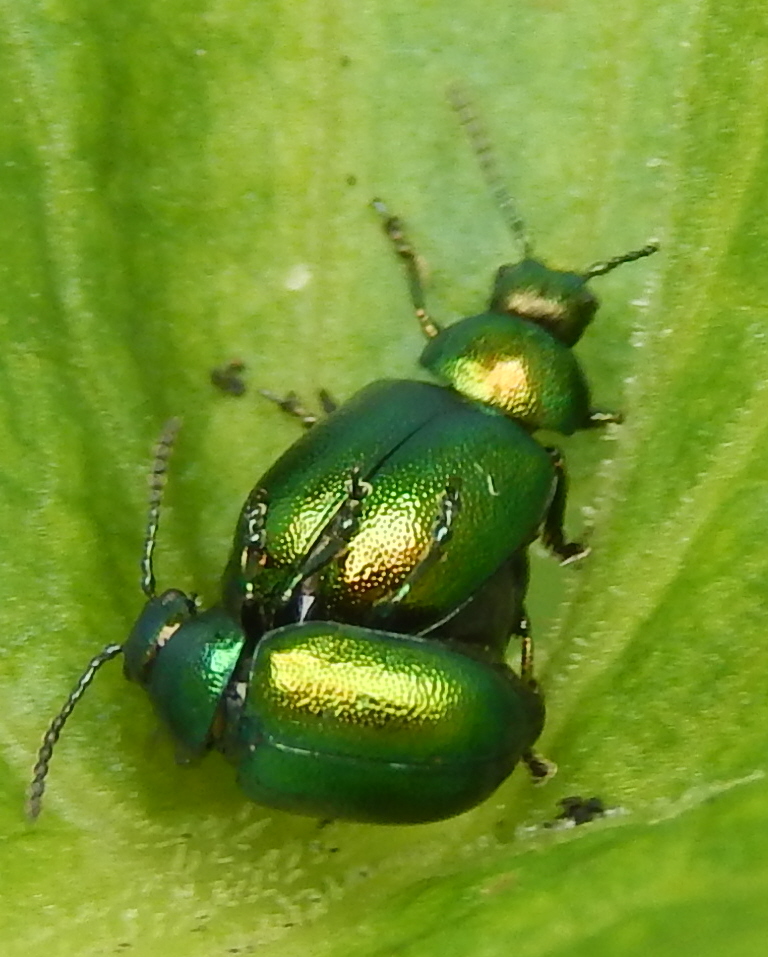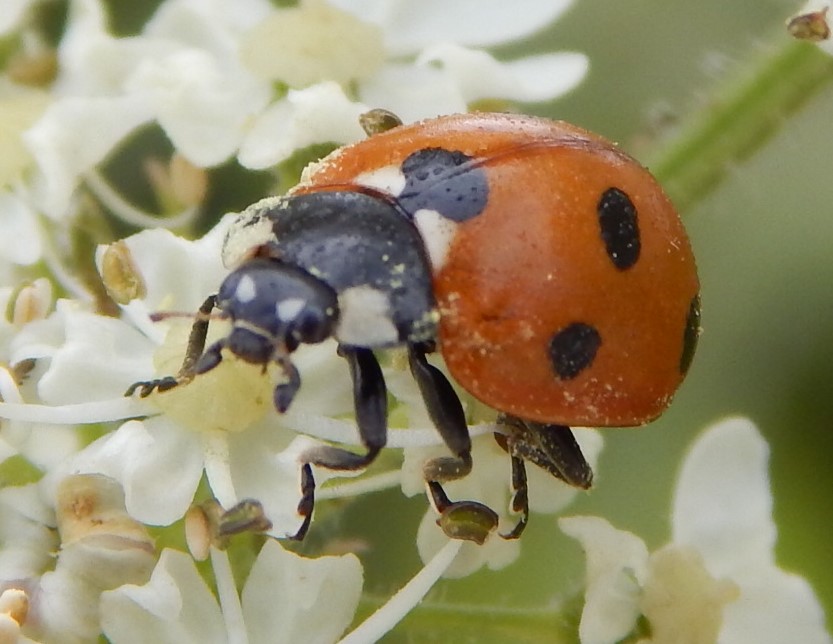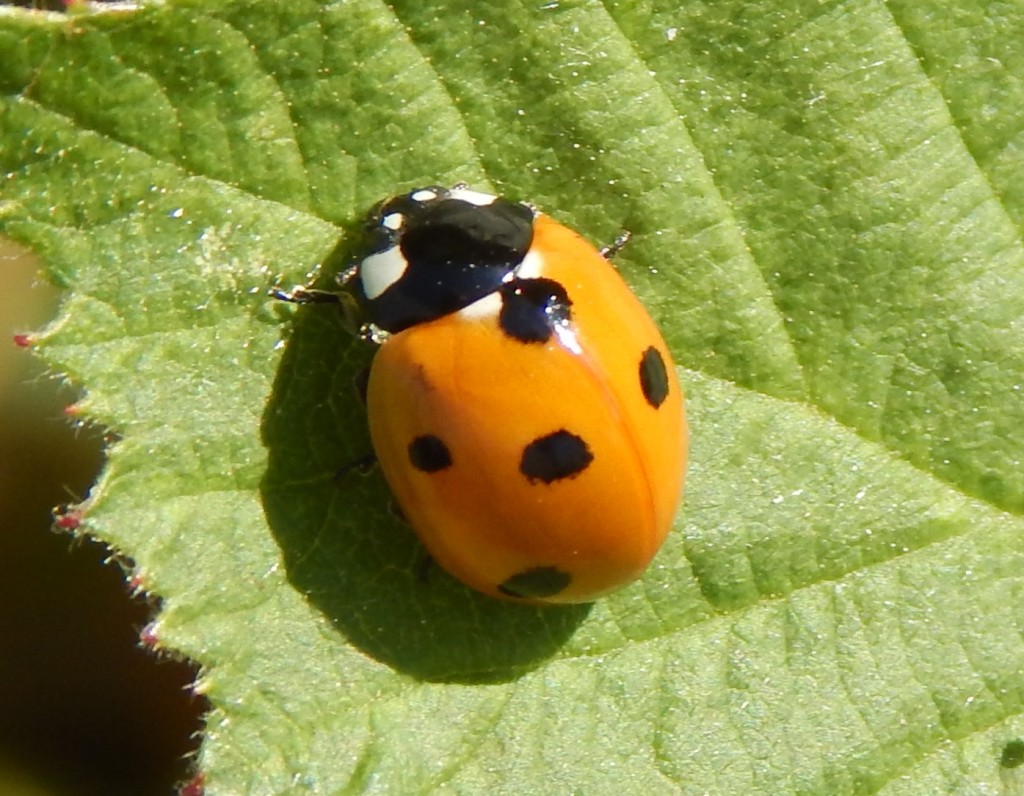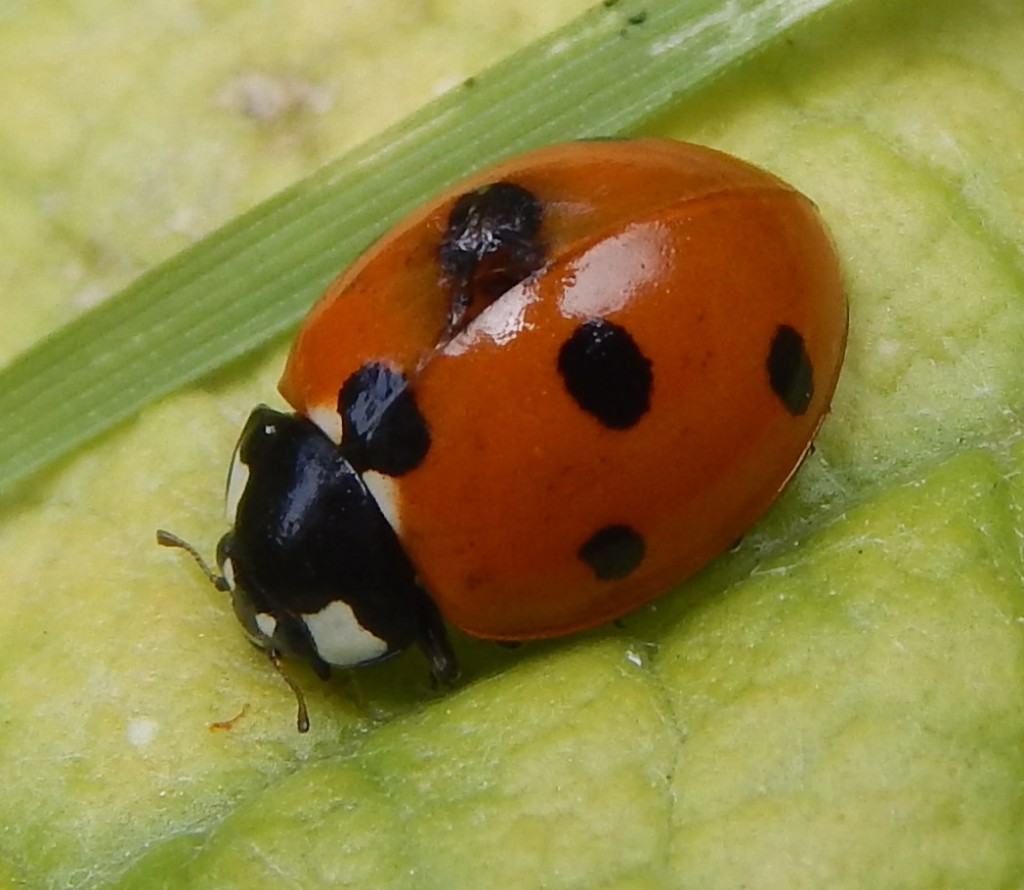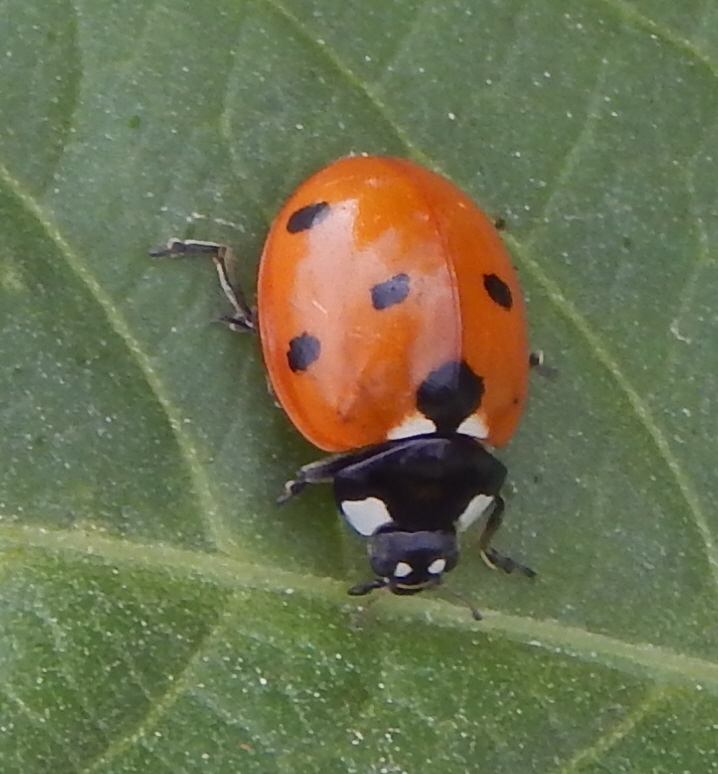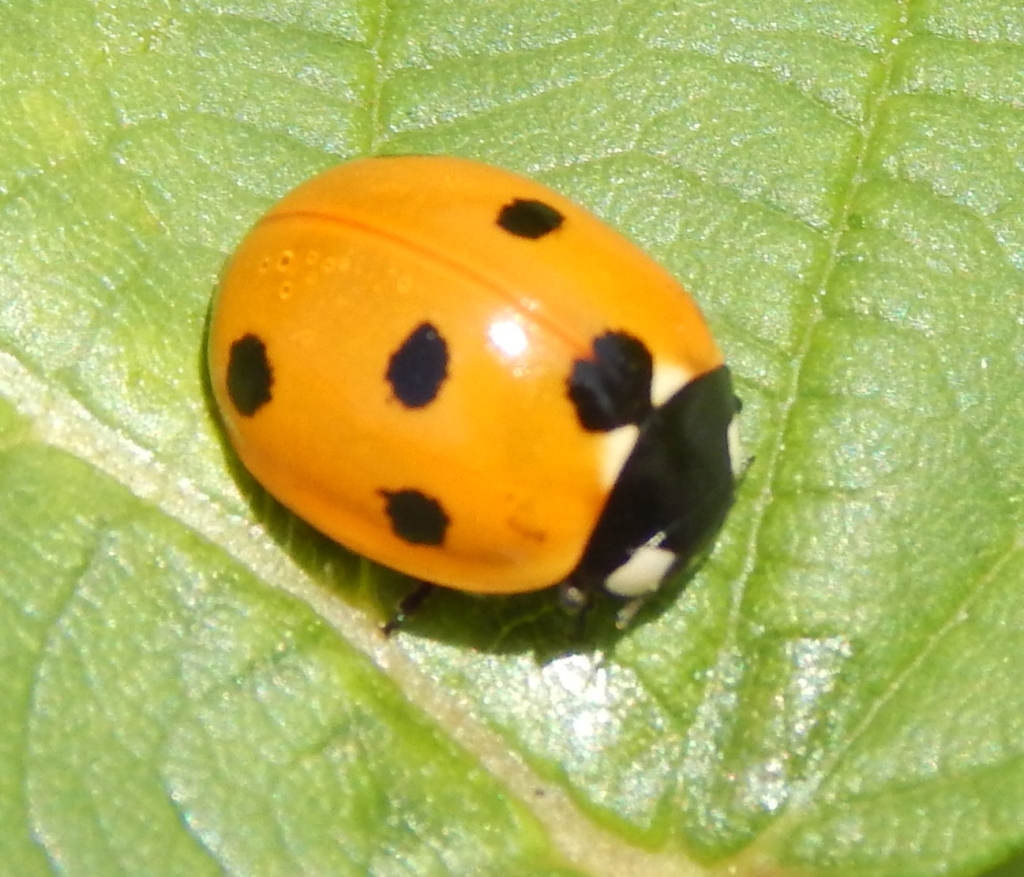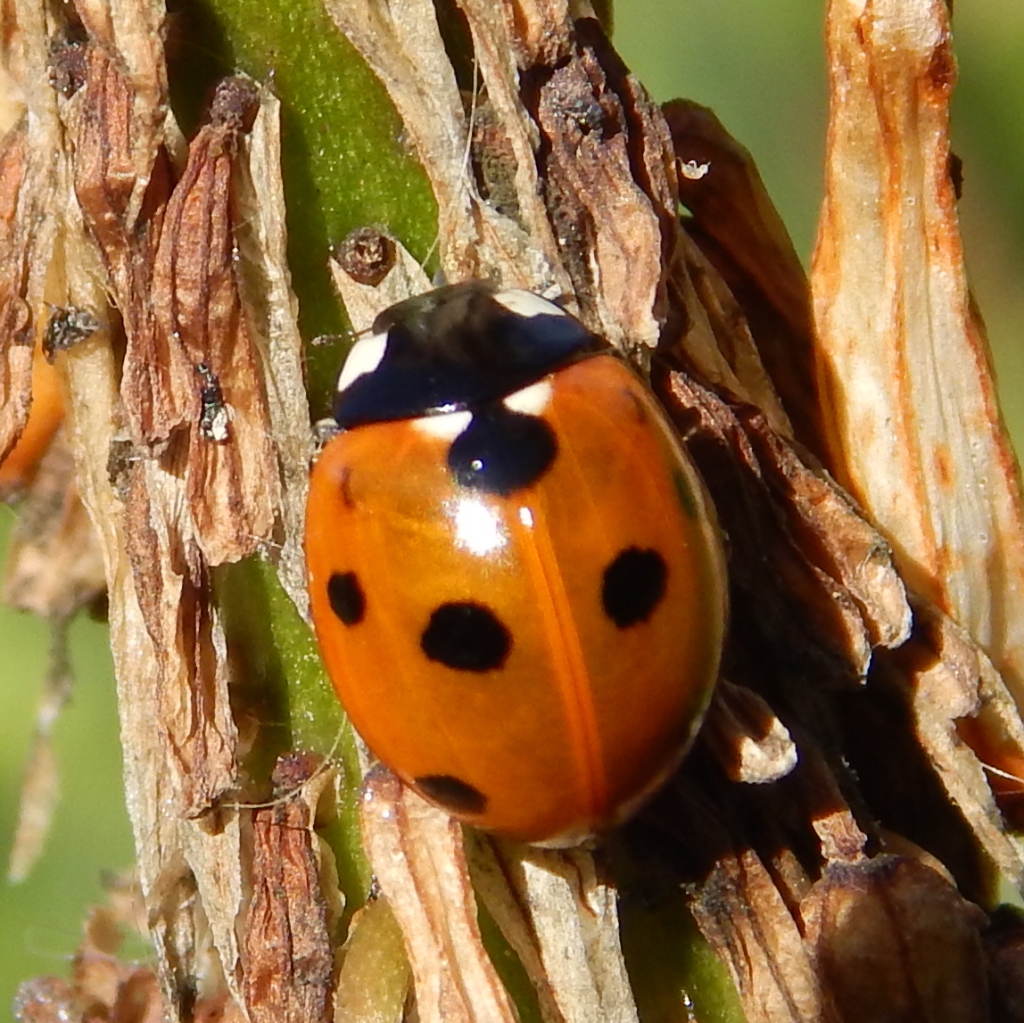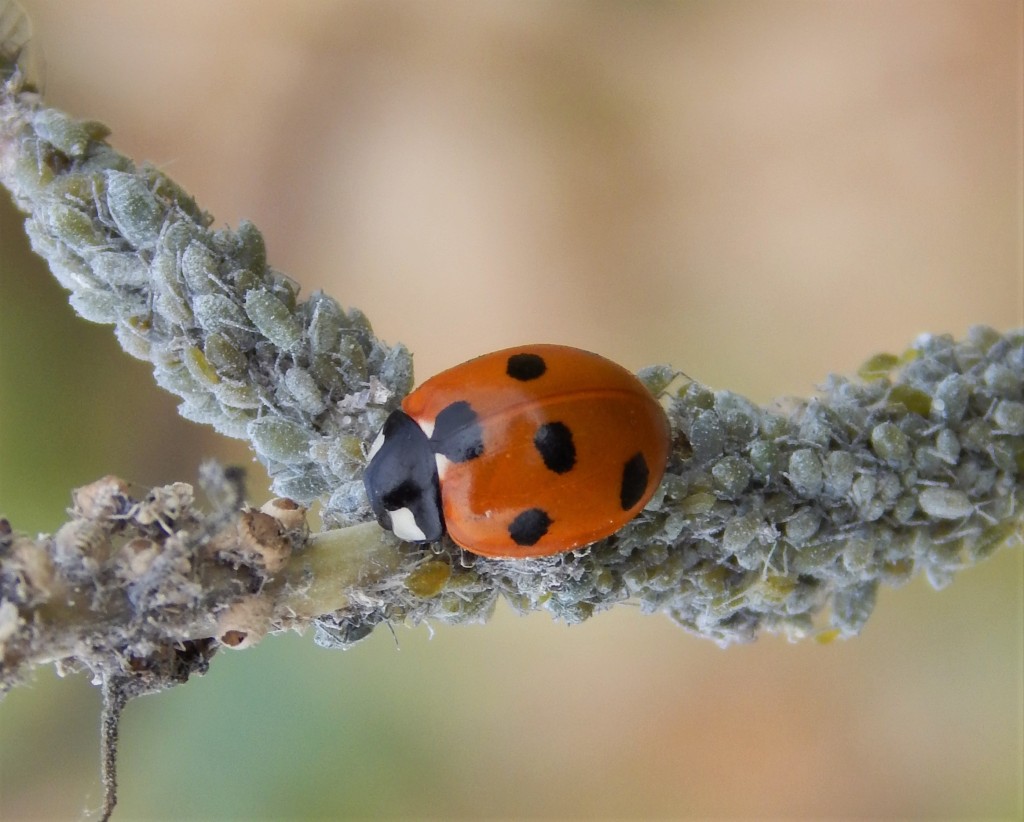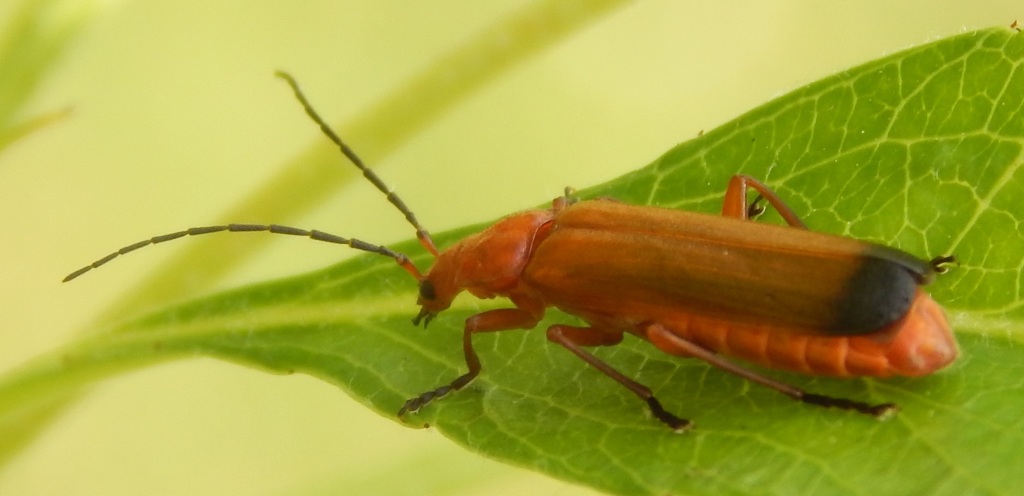
[300] Rhagonycha fulva, Common Red Soldier Beetle
Introduction
Rhagonycha fulva, the Common Red Soldier Beetle, is one of the most common and widespread species of Beetle in the UK and is often seen in summer on flowers. It has recently acquired the informal name (Hogweed) Bonking Beetle.
It is also known as the Bloodsucker Beetle.
I will also consider Cantharis species, the other most common Soldier Beetles found in Britain
Taxonomy
Kingdom – Animals
Phylum – Arthropods
Class – Insects
Order – Coleoptera (Beetles)
Suborder – Polyphaga
Infraorder – Elateriformia
Superfamily – Elateroidea (Click beetles, Soldier beetles, fireflies and others)
Family – Cantharidae (Soldier Beetles)
Subfamily – Cantharinae
Tribe – Cantharini
Genus – Rhagonycha
Scientific Name – Rhagonycha fulva
Not surprisingly, the genus Cantharis comes in the same Tribe.
Soldier Beetles
There are over 1300 species in about a hundred genera in the family Cantharidae. Most species do not have common names.
The Taxonomy of Insects is complicated because it has well over a million species divided into over two hundred families. Soldier Beetles, Cantharidae, were named because one of the first noted species had colours reminiscent of the red coats of British Soldiers. They are also called Leatherwings because of their soft elytra (wing coverings.) They are divided into five subfamilies and several tribes.
[A] Rhagonycha fulva
There are about 150 species of Rhagonycha of which seven are found in Britain. The name Bloodsucker Beetle for Rhagonycha fulva just comes from its red colour.
I cannot trace the origins of the word Rhagonycha. Fulva in Latin is an amber or orange shade of the colour red.
Rhagonycha fulva is a medium size, roughly rectangular beetle, mostly a shiny dark red in colour. The elytra have a black patch on their ends. Its antennae are black.
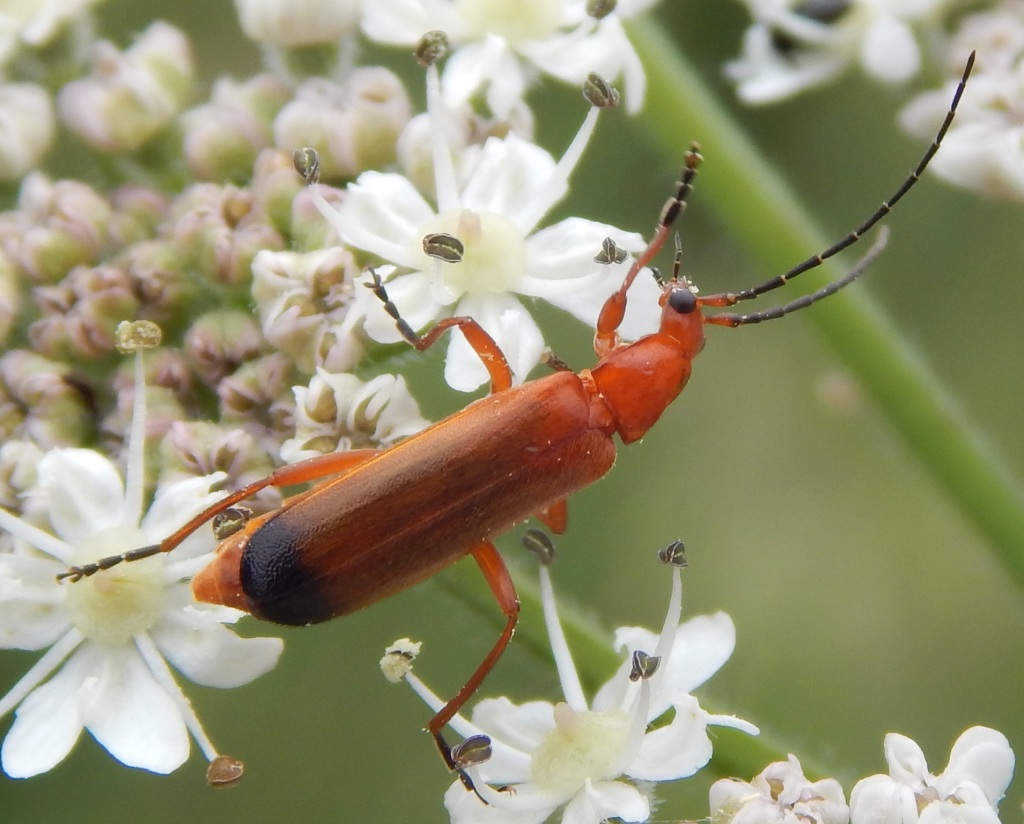
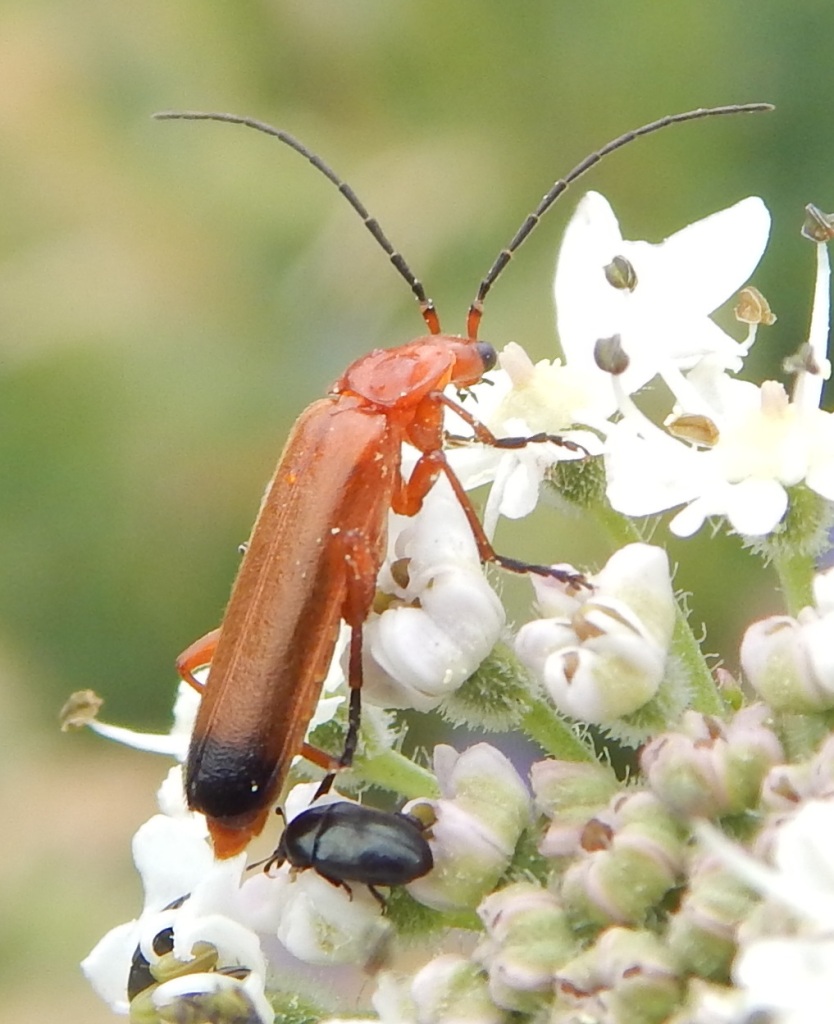
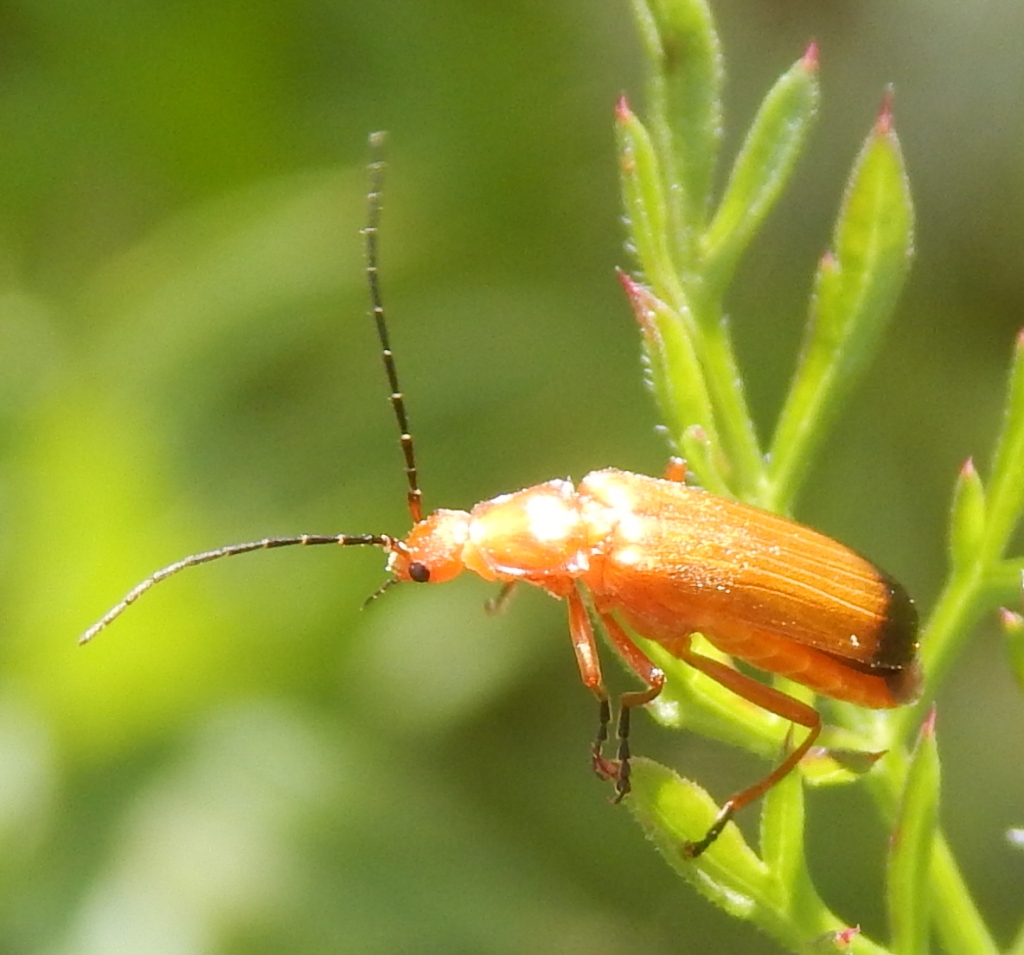
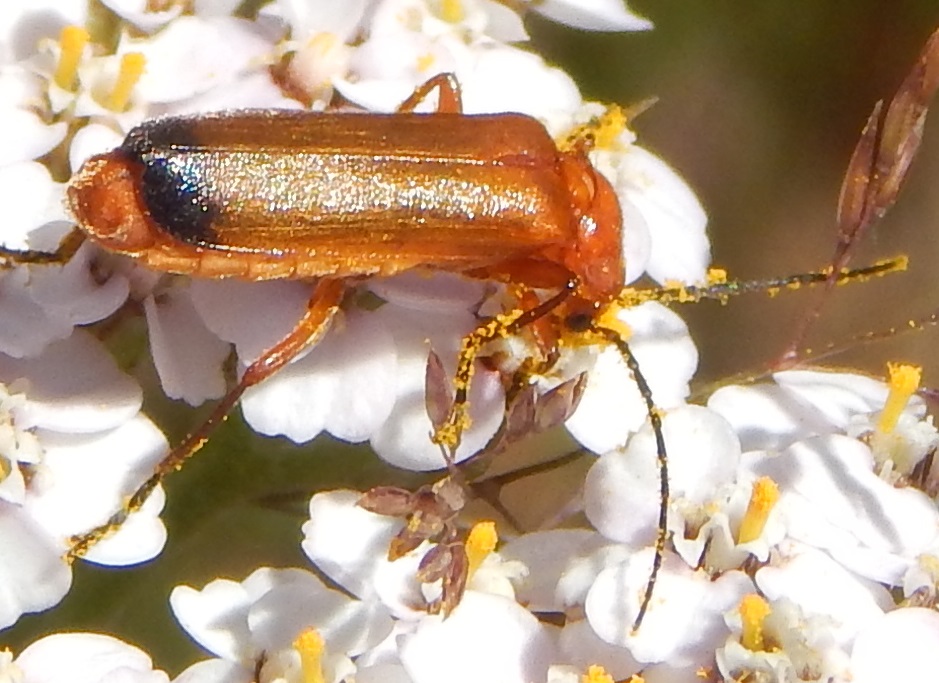
Larvae live at the base of grasses and eat invertebrates such as slugs and snails. The relatively short-lived adults feed on pollen and nectar and may eat Aphids.
Habitat
Rhagonycha fulva is common over most of Europe and parts of Asia Minor. It has become established over eastern Canada.
Adults can be found in summer on grassland and woodland, in hedgerows and in parks and gardens. They are fond of Hogweed and other plants in the carrot family Apiaceae, and also Asters.
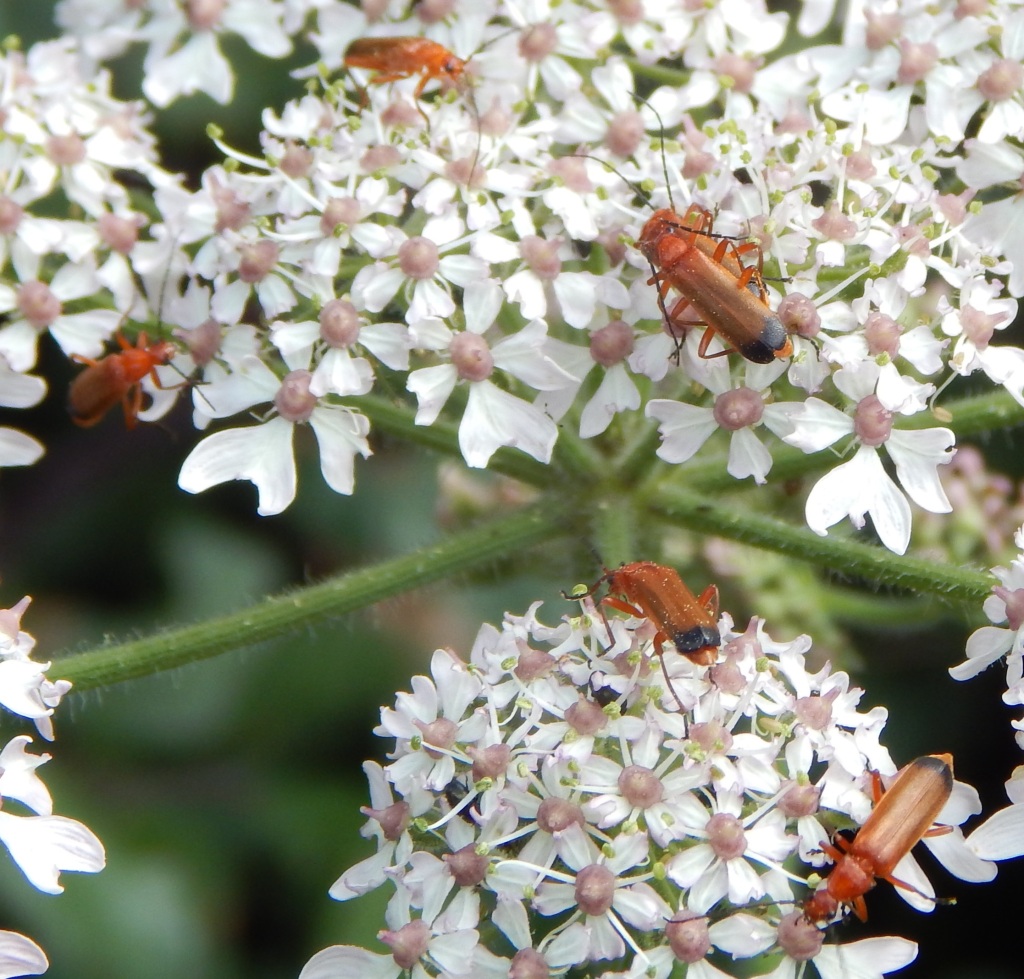
Other Notes
It is commonly seen on [174] Hogweed and other flowers. Like many insects the adult phase us relatively short and is mostly dedicated to seeking a mate and mating. The mating process takes quite a long name, which is where its modern common name comes from.
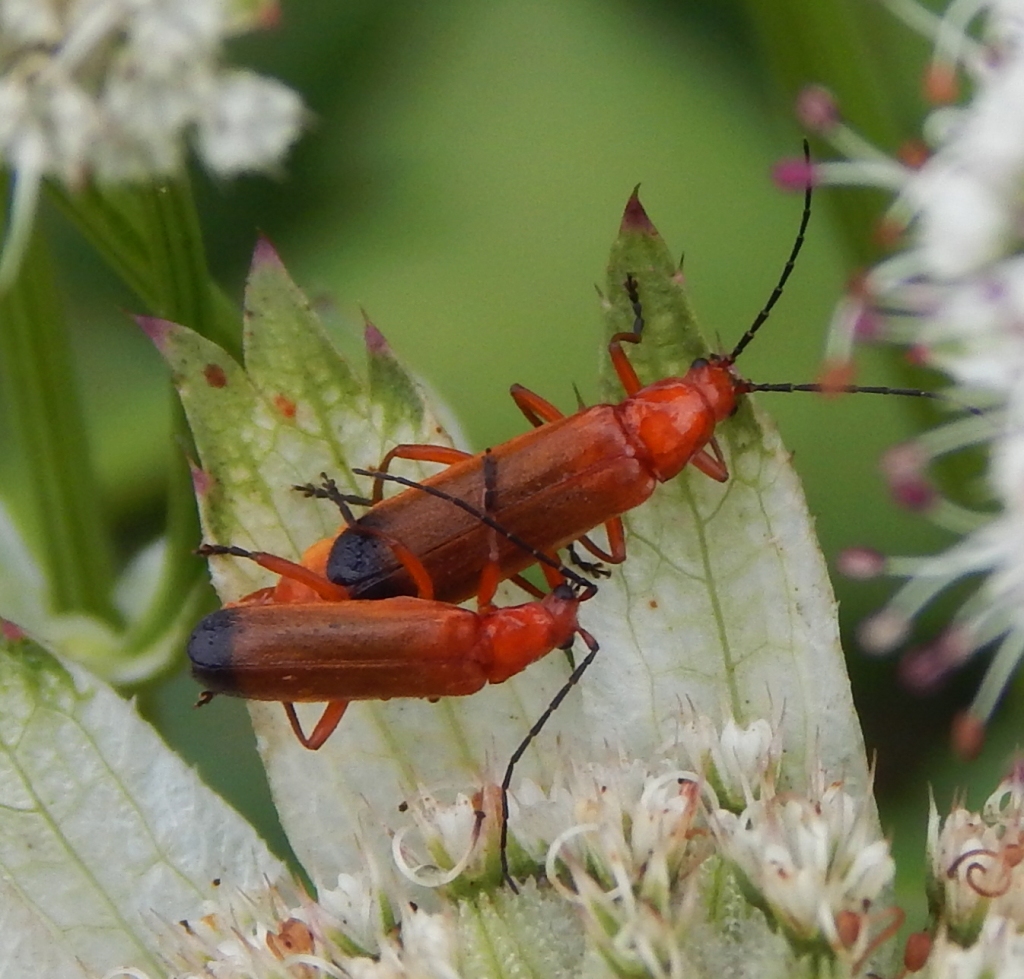
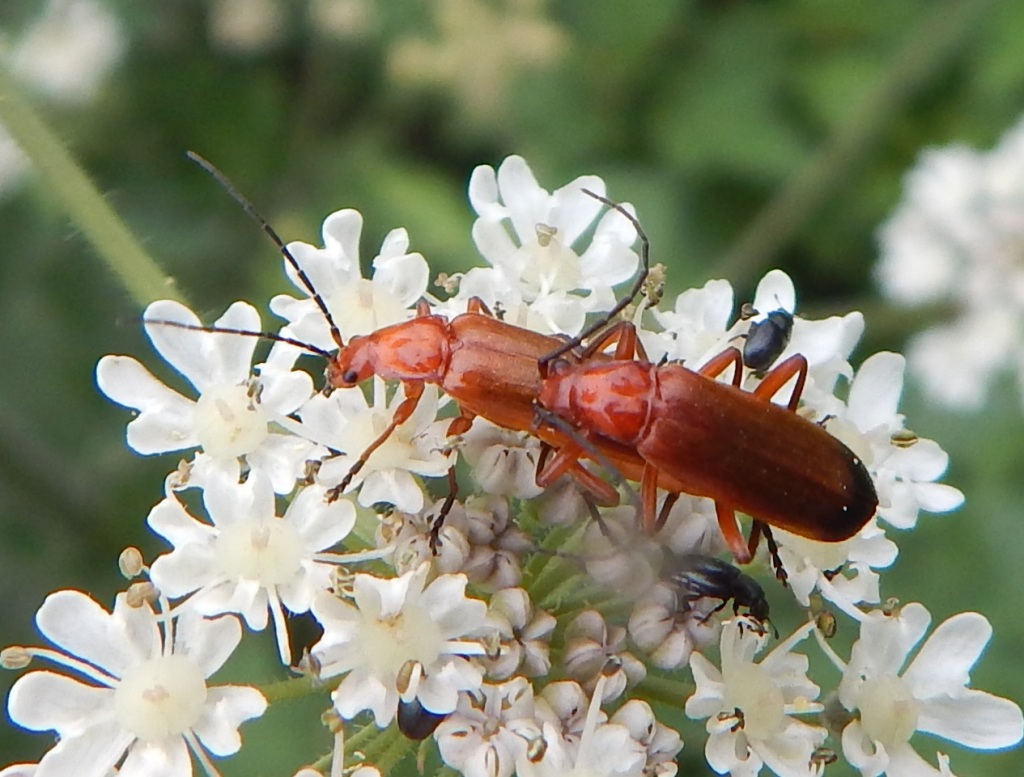
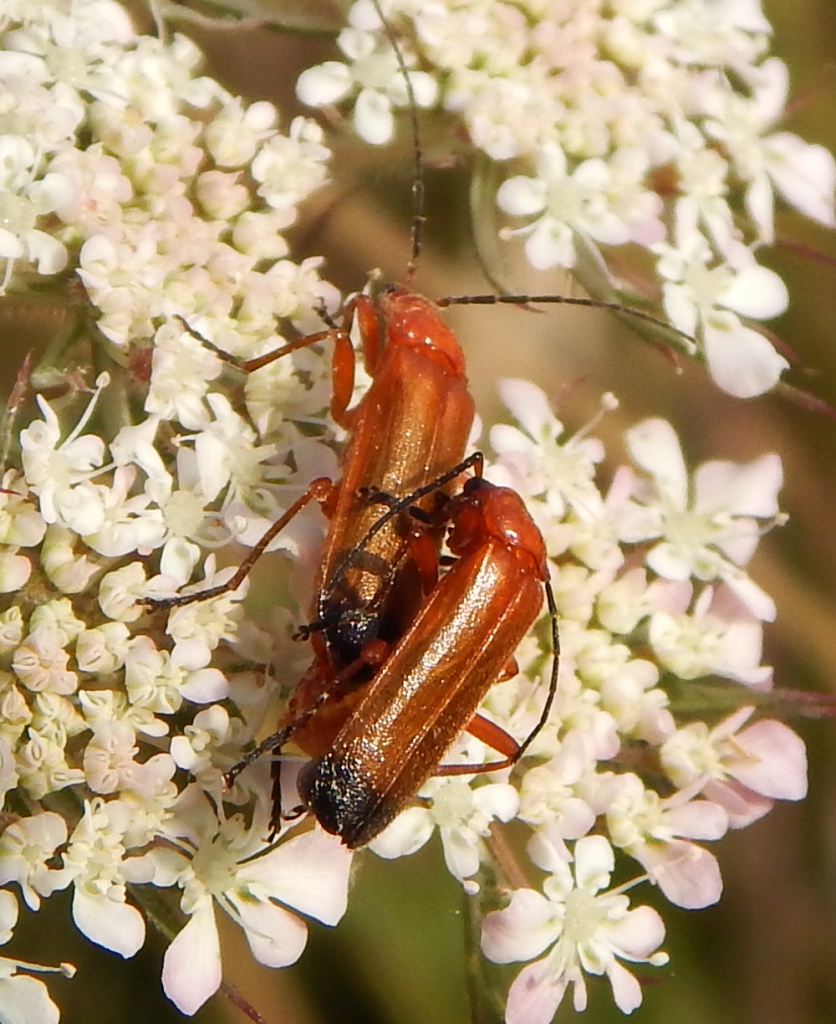
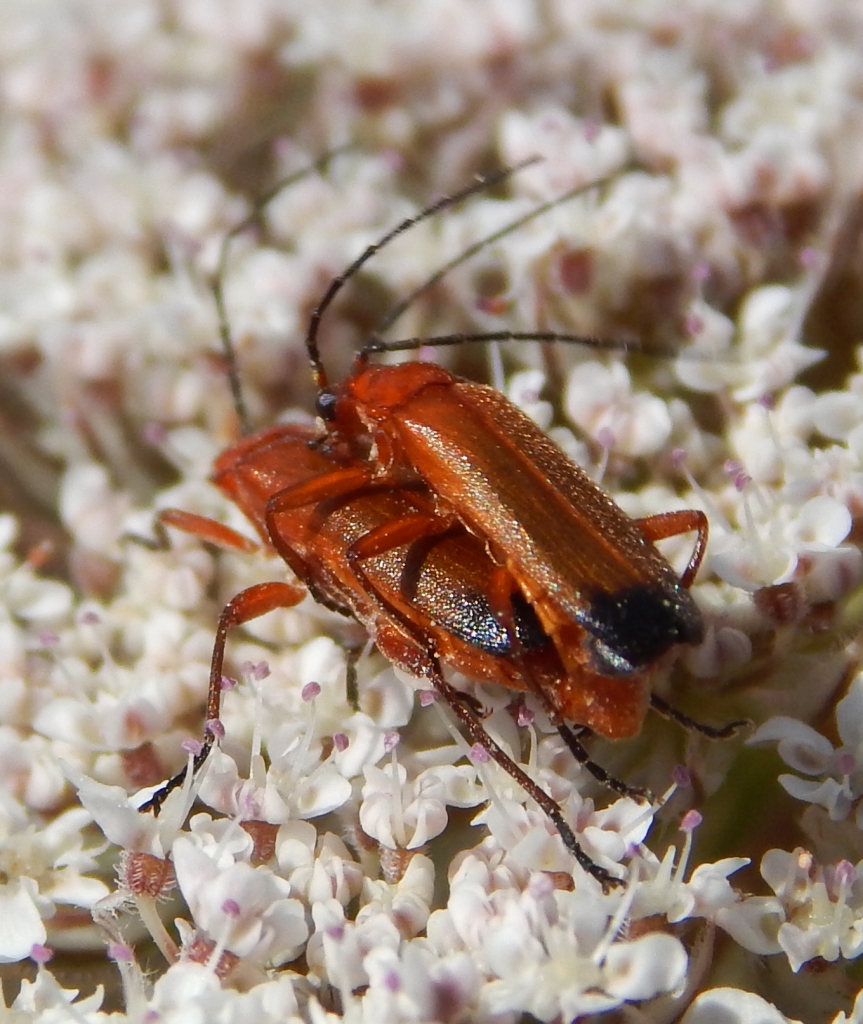
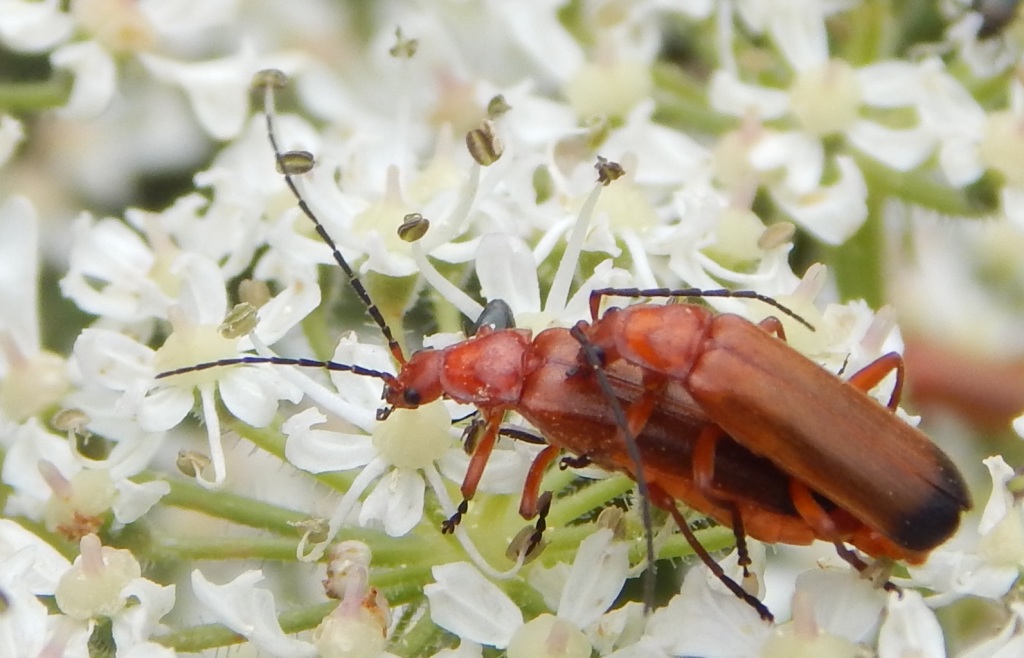
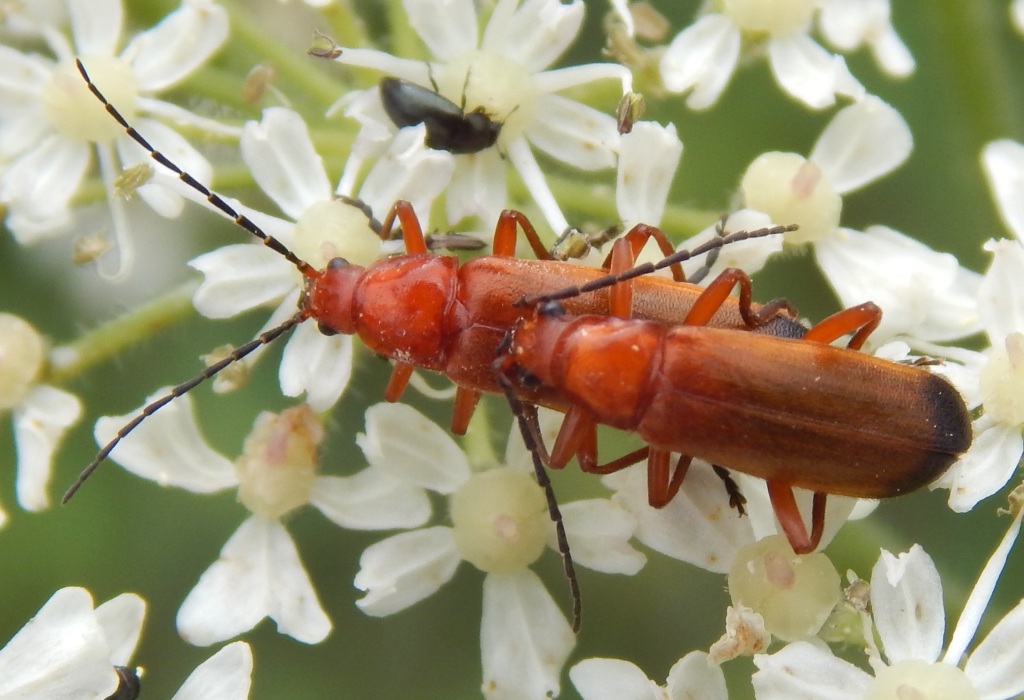
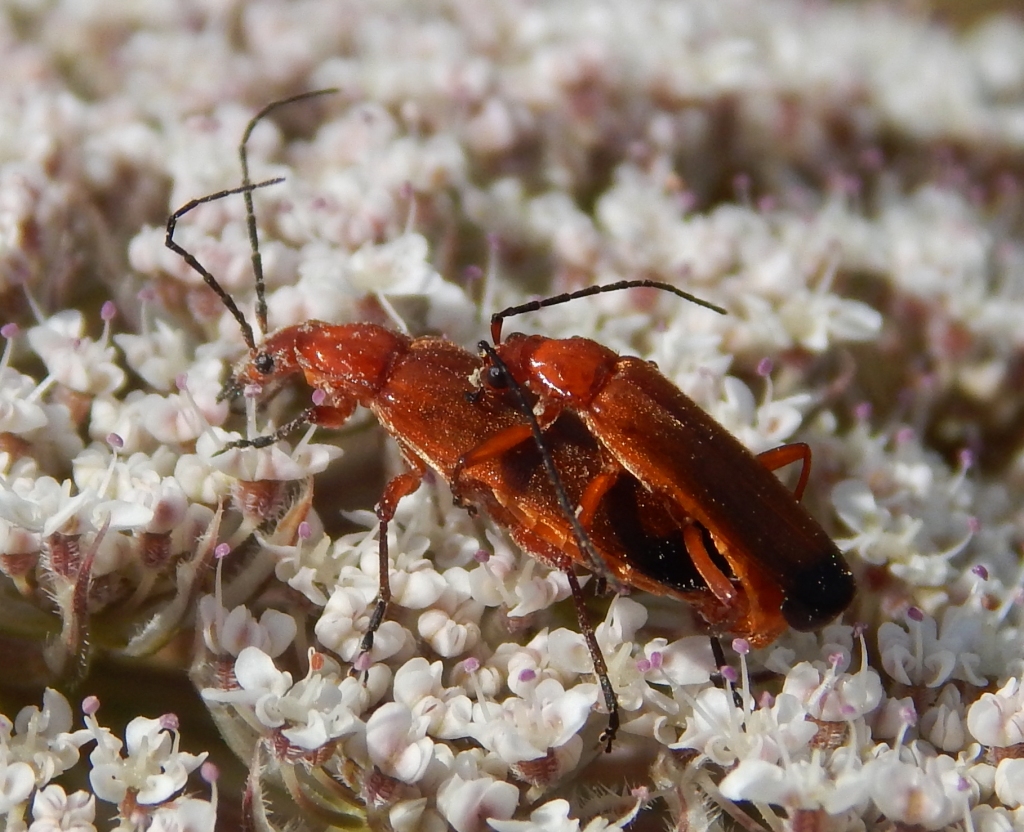
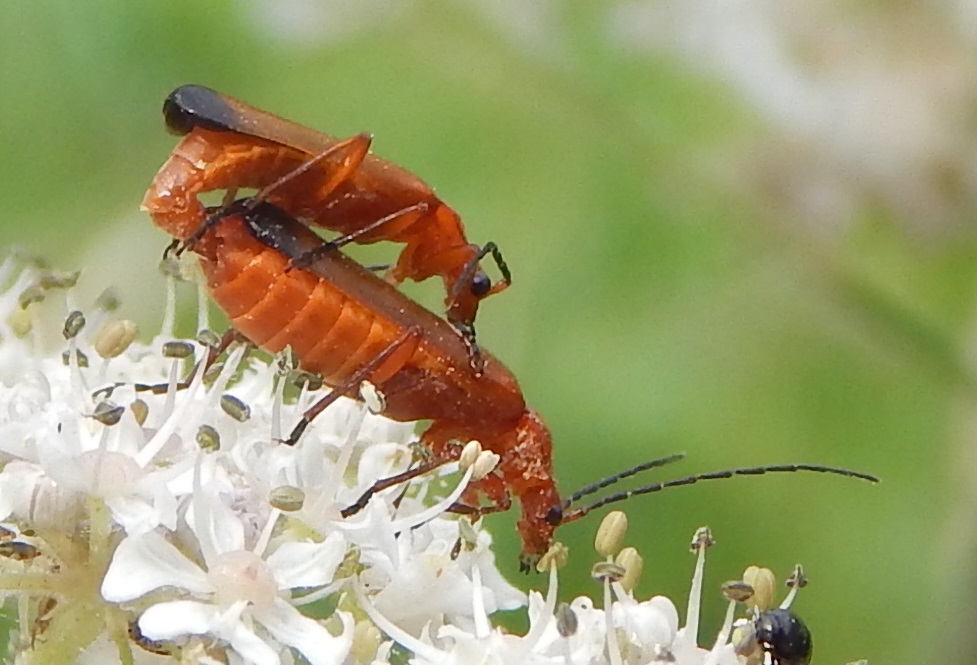
[B] Cantharis Species, Soldier Beetles
Cantharis is a genus containing about a hundred species of Soldier Beetles without individual species Common Names. Fifteen of the species can be found in the UK.
It should not be confused with the strangely named Spanish Fly, Lytta vesicatoria, that used to be called erroneously Cantharis vesicatoria. (The Spanish Fly is actually a beetle, coming from an unrelated family.)
You won’t be surprised at a bit of confusion with names. The genus Cantharis, and hence the tribe, subfamily and family of soldier beetles, are all named from the Ancient Greek word Kantharis, which means the Spanish Fly, Lytta vesicatoria. As noted above, this shiny green beetle (Spanish Fly is a beetle) used to be called Cantharis but is unrelated – it doesn’t even look that similar. Now the soldier flies have the name Cantharis and the Spanish Fly had to be renamed!
Description
There are 32 central European species of Cantharis of which 15 are to be found in the British Isles. They are relatively large beetles with a long, straight, darkly coloured abdomen and fairly long antennae. I won’t guarantee my pictures to species level but with a bit of help from social media I will give suggestions.
This is Cantharis flavilabris.
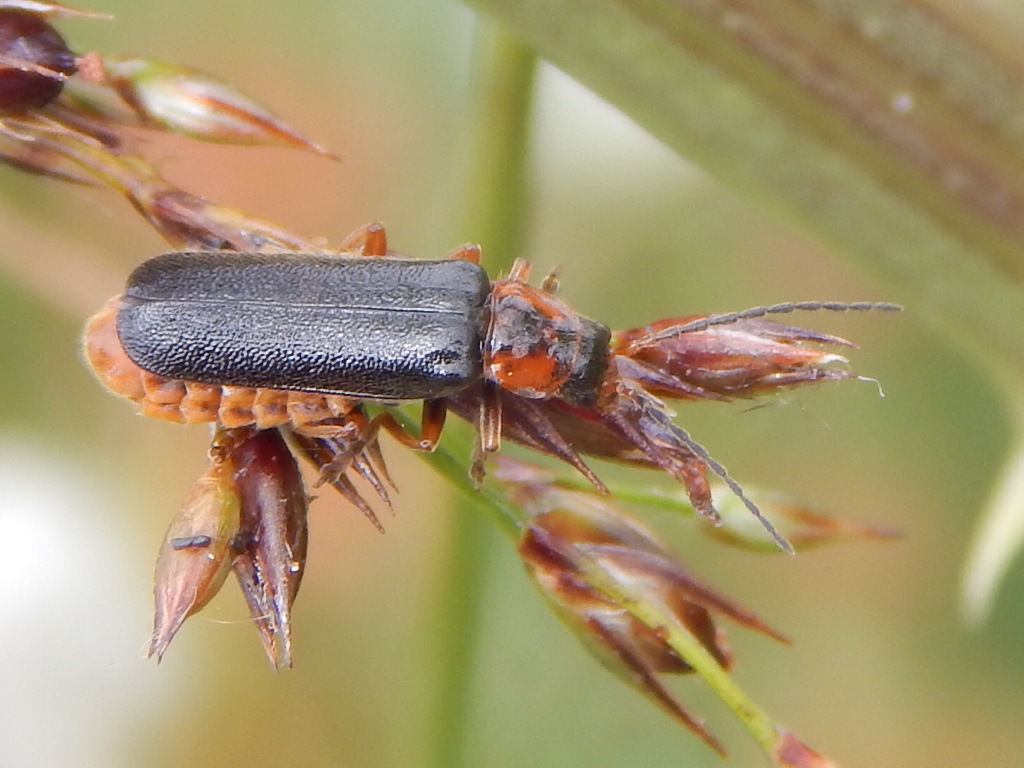
This is Cantharis pellucida.
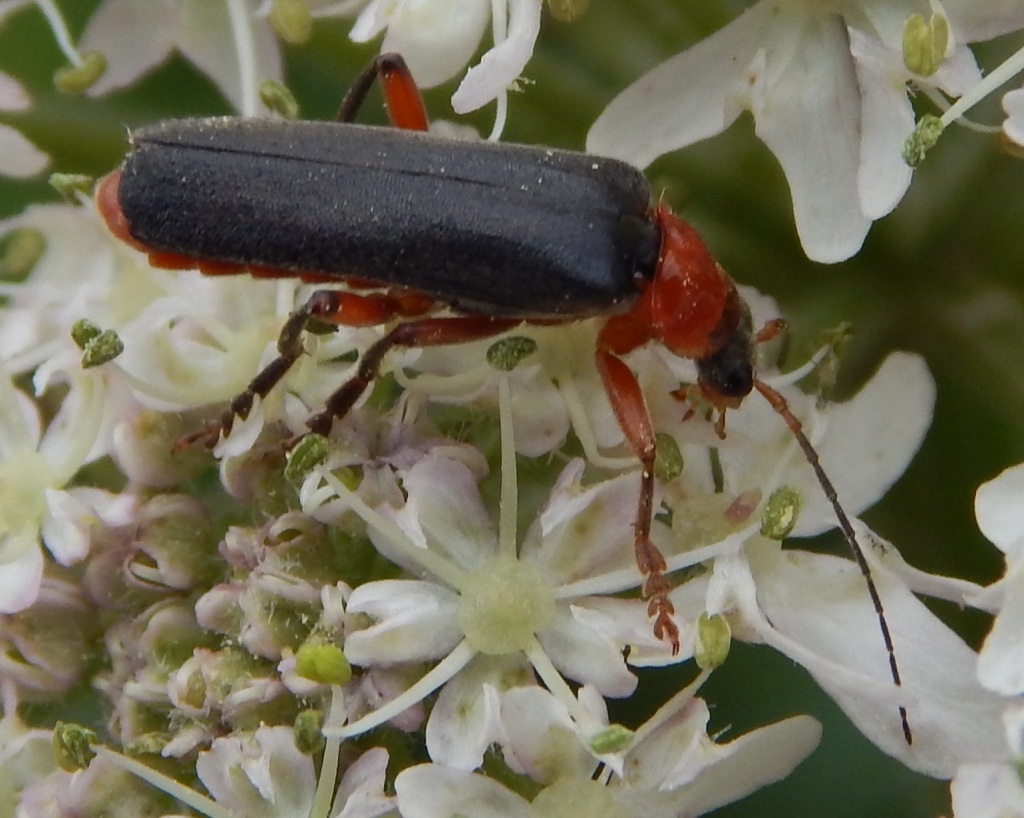
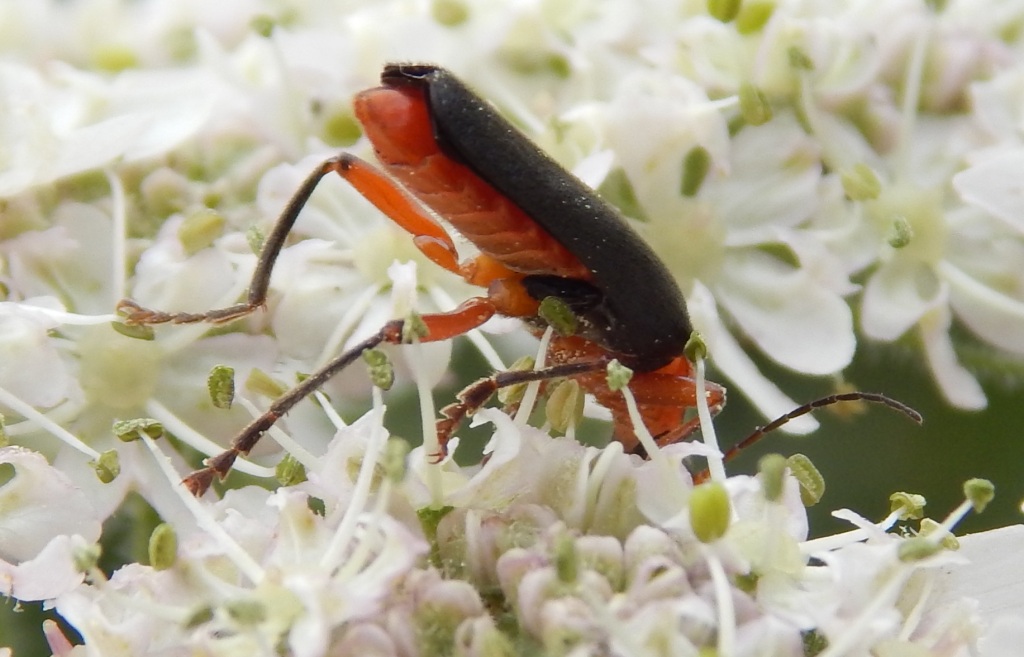
This is Cantharis lateralis.
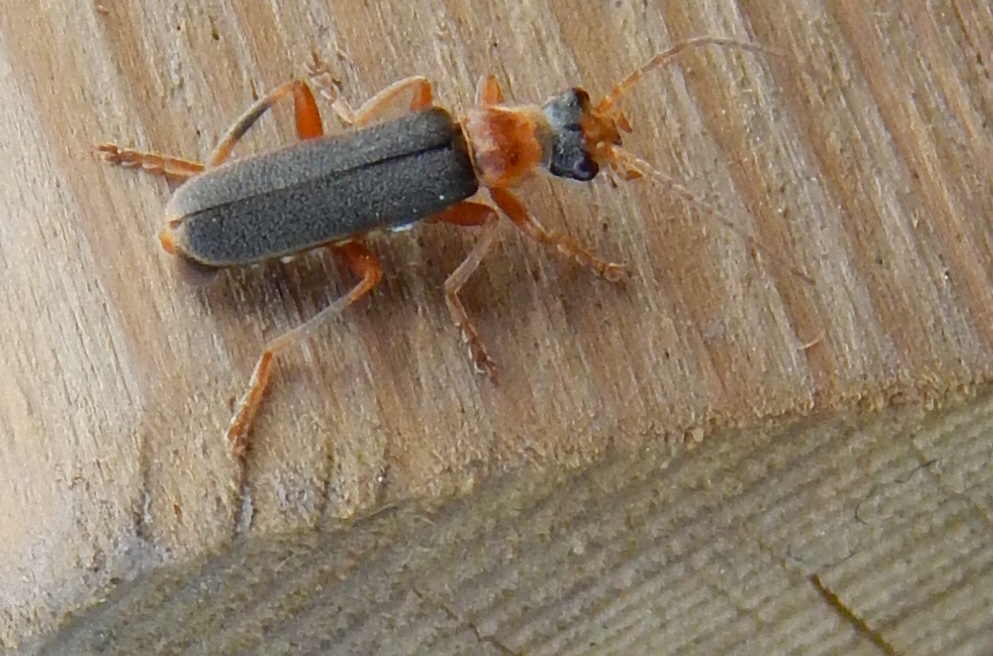
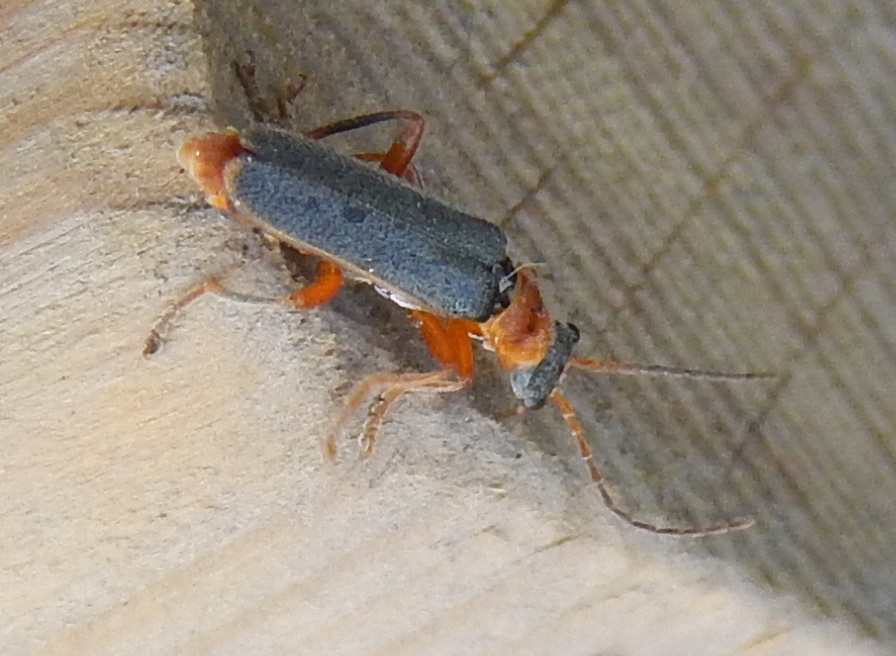
Other Notes
These species are not nearly as common as Rhagonycha fulva. As always, keep looking on the top of open flowers in summer to spot beetles.

